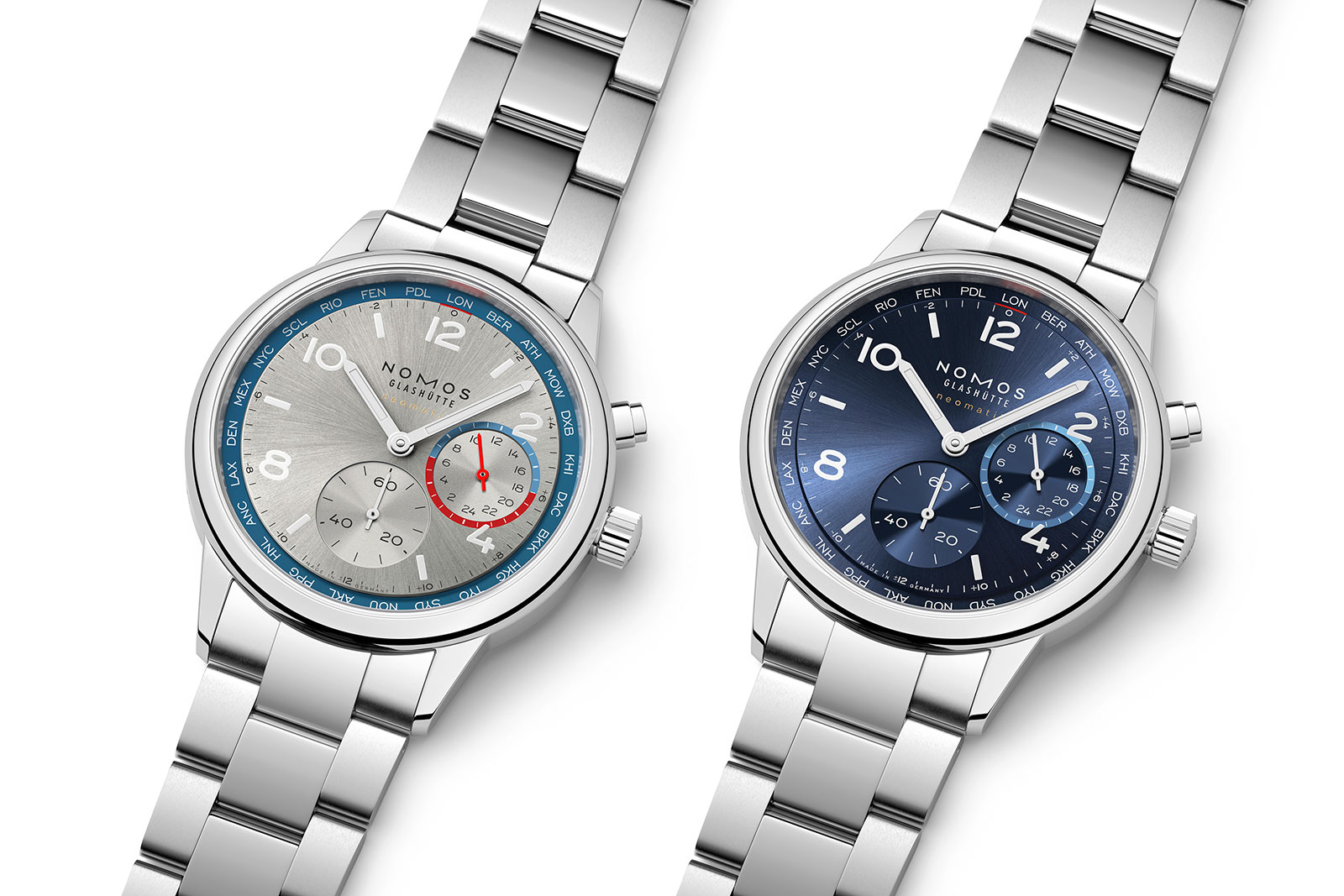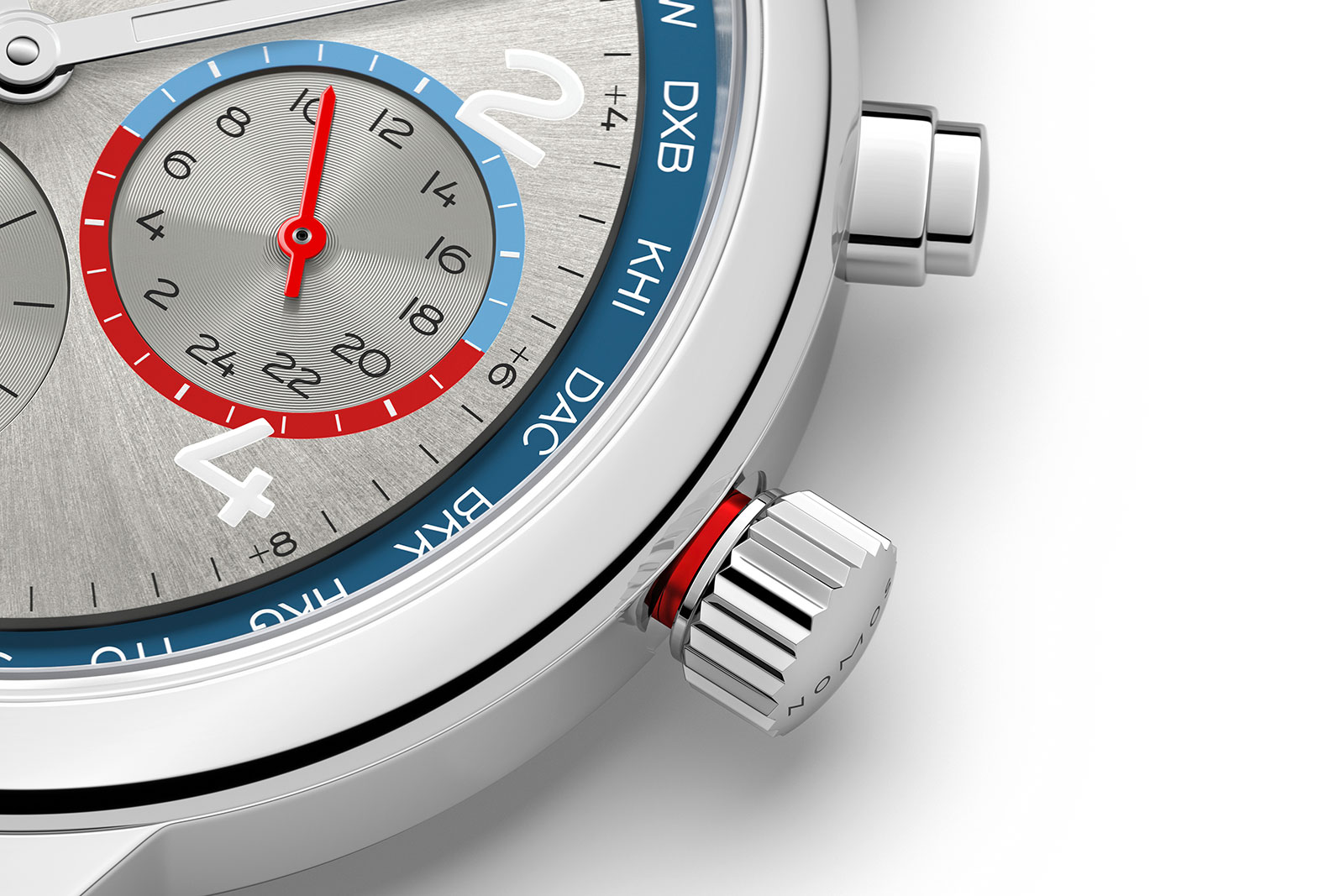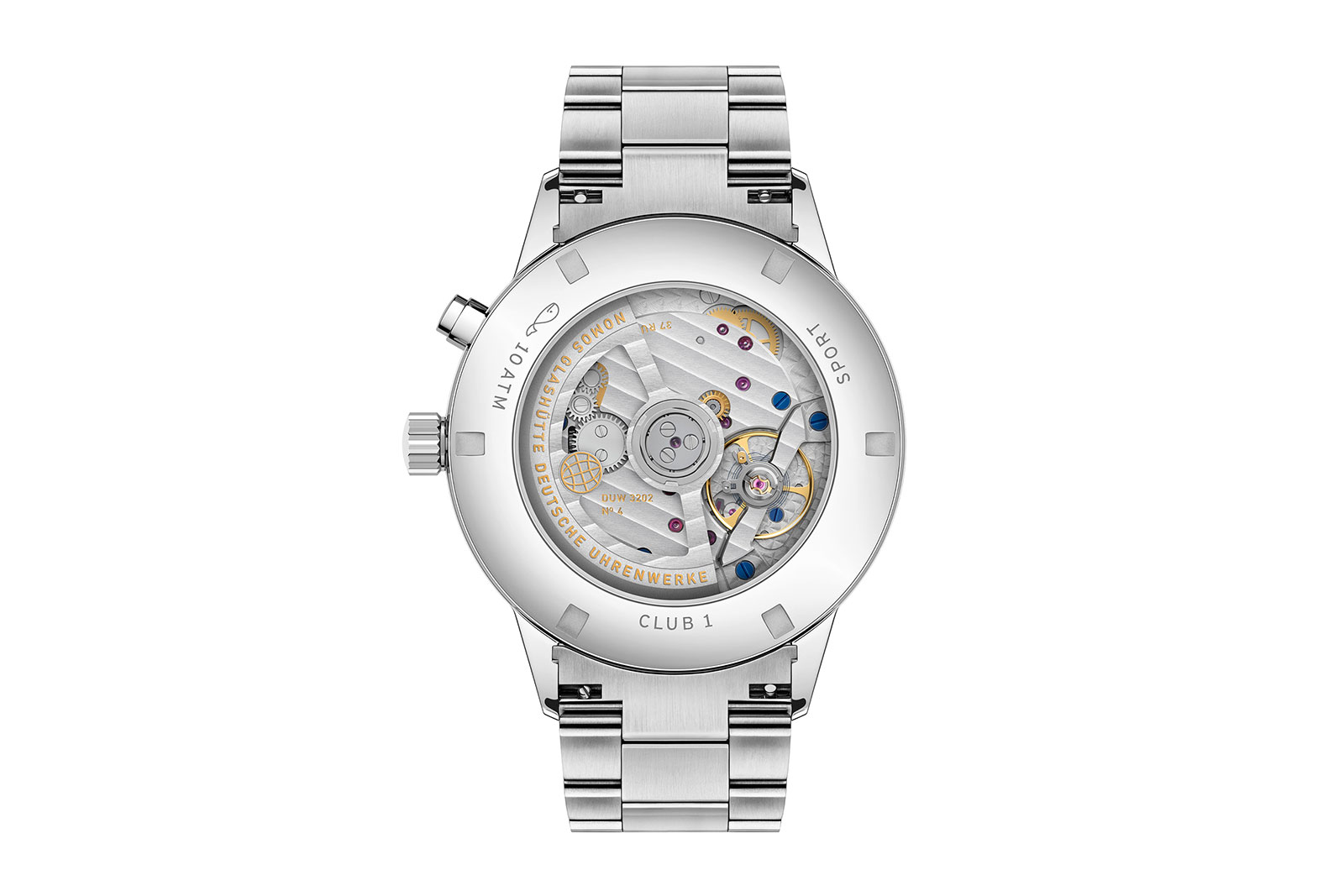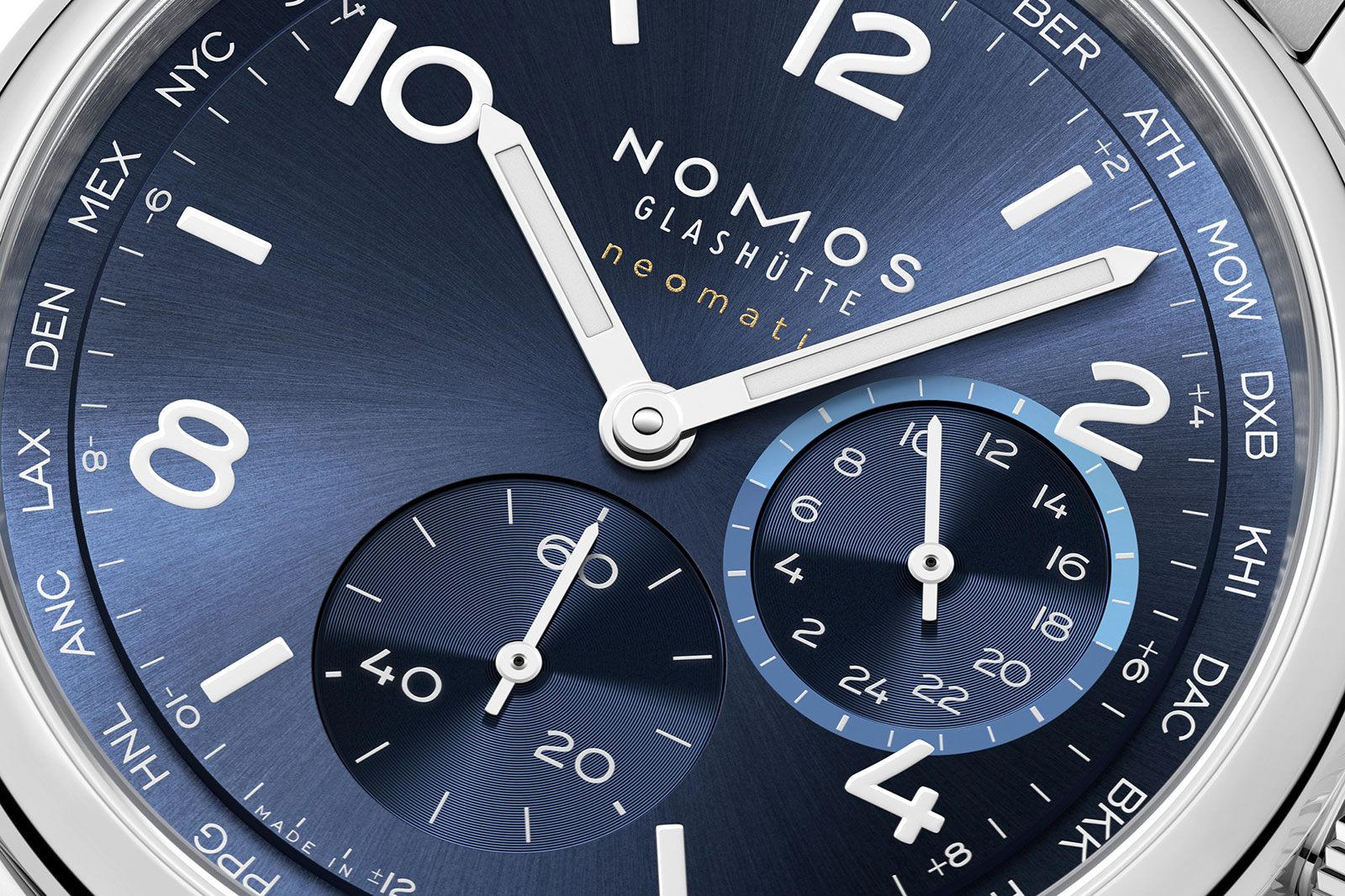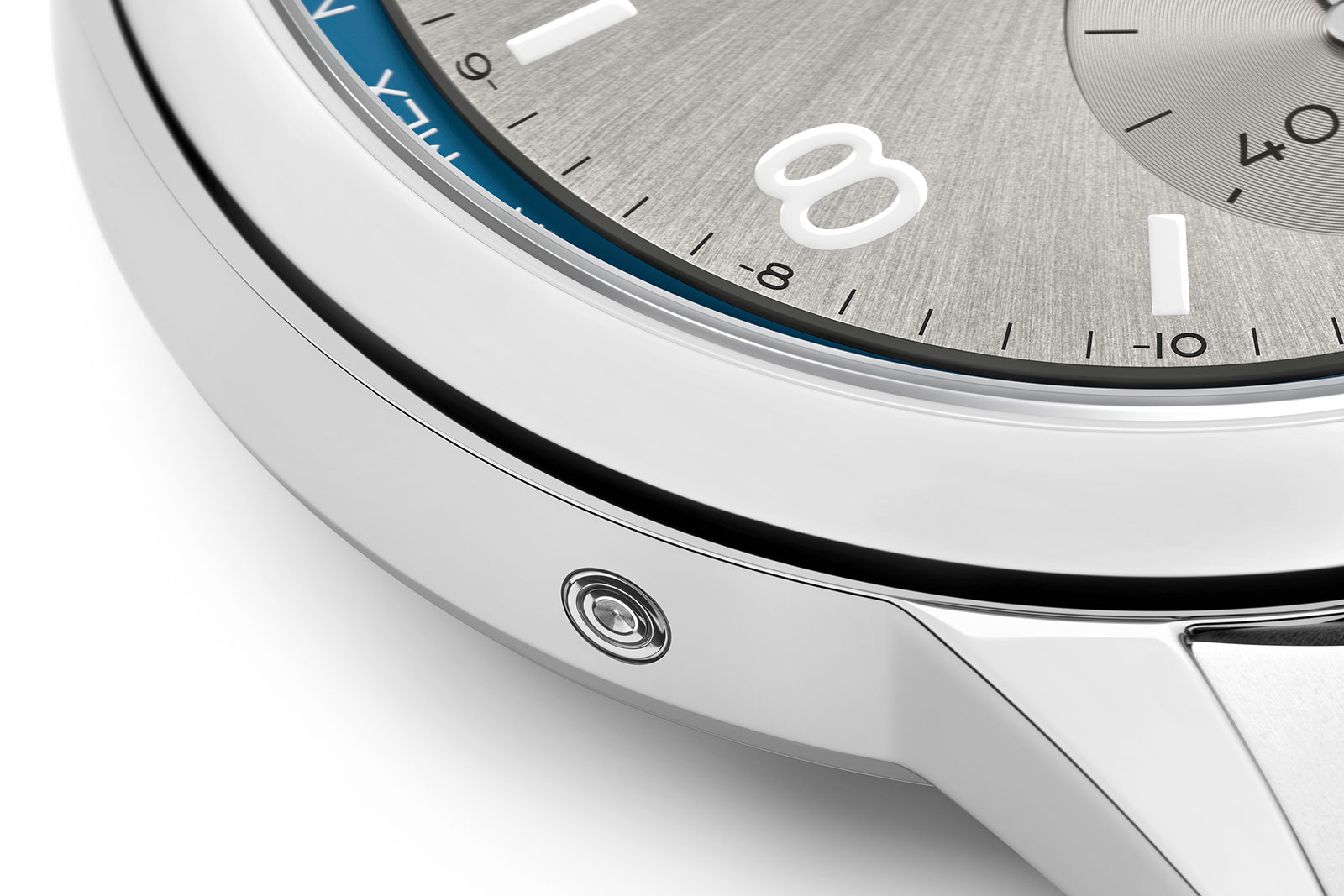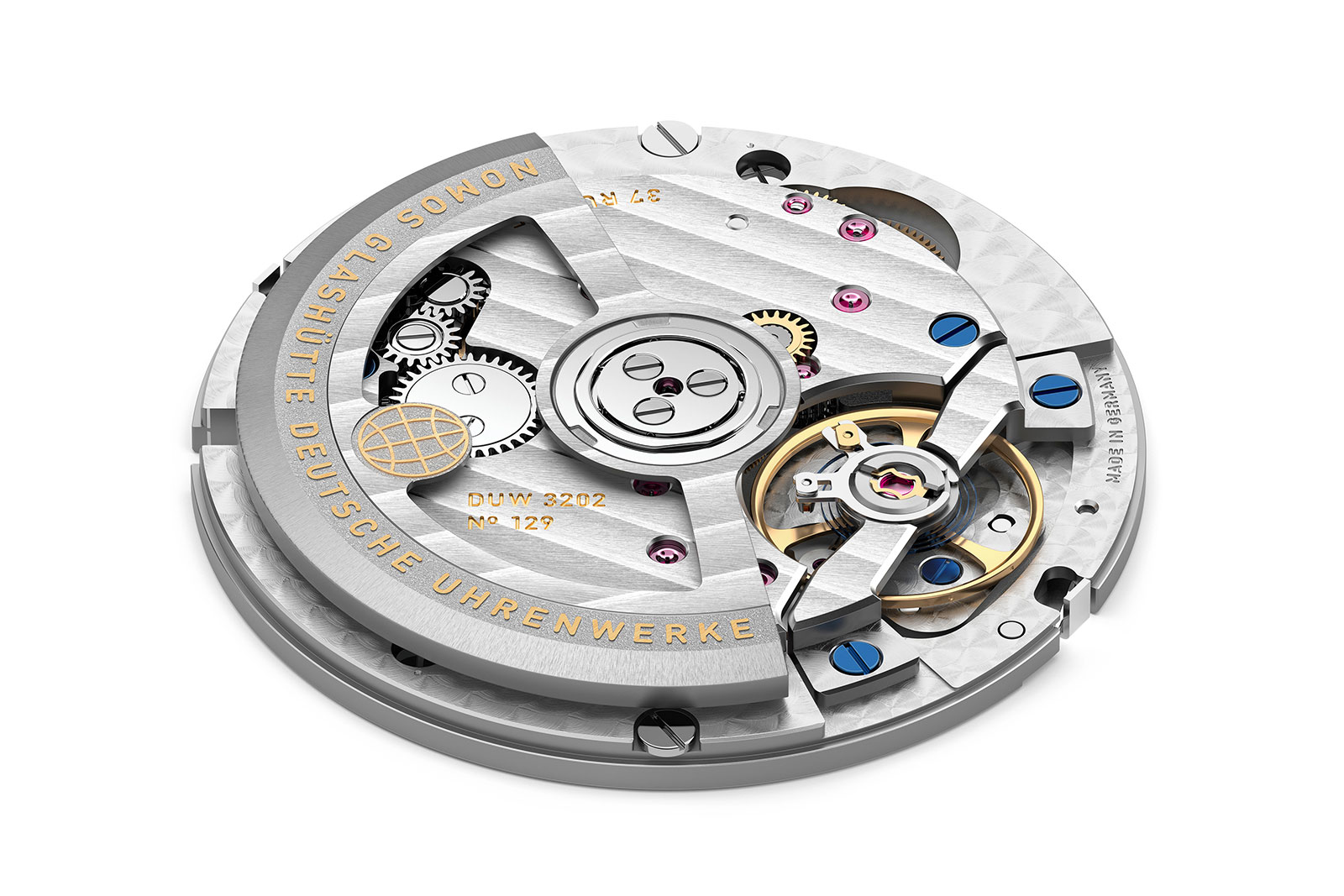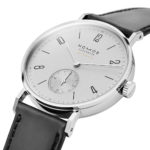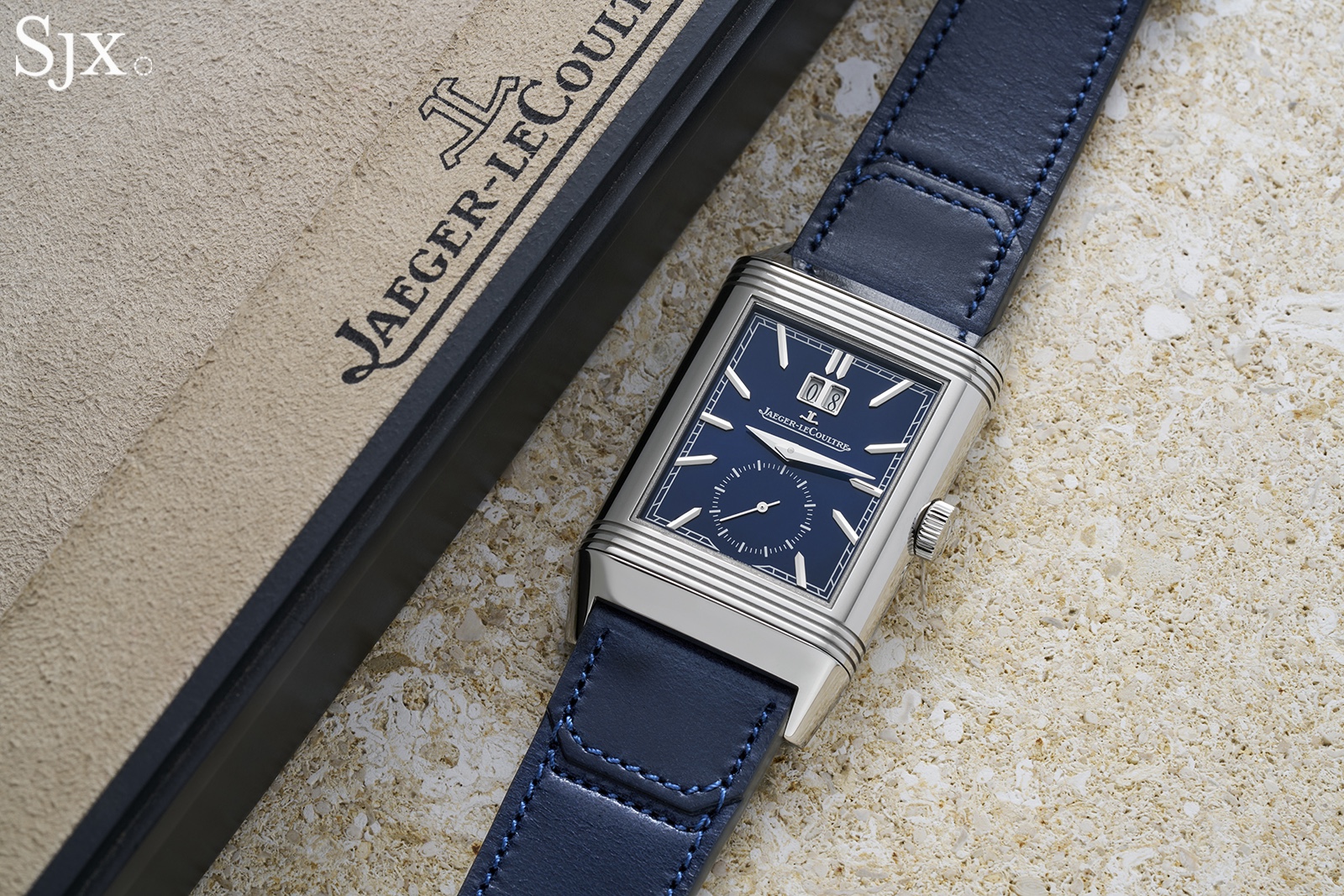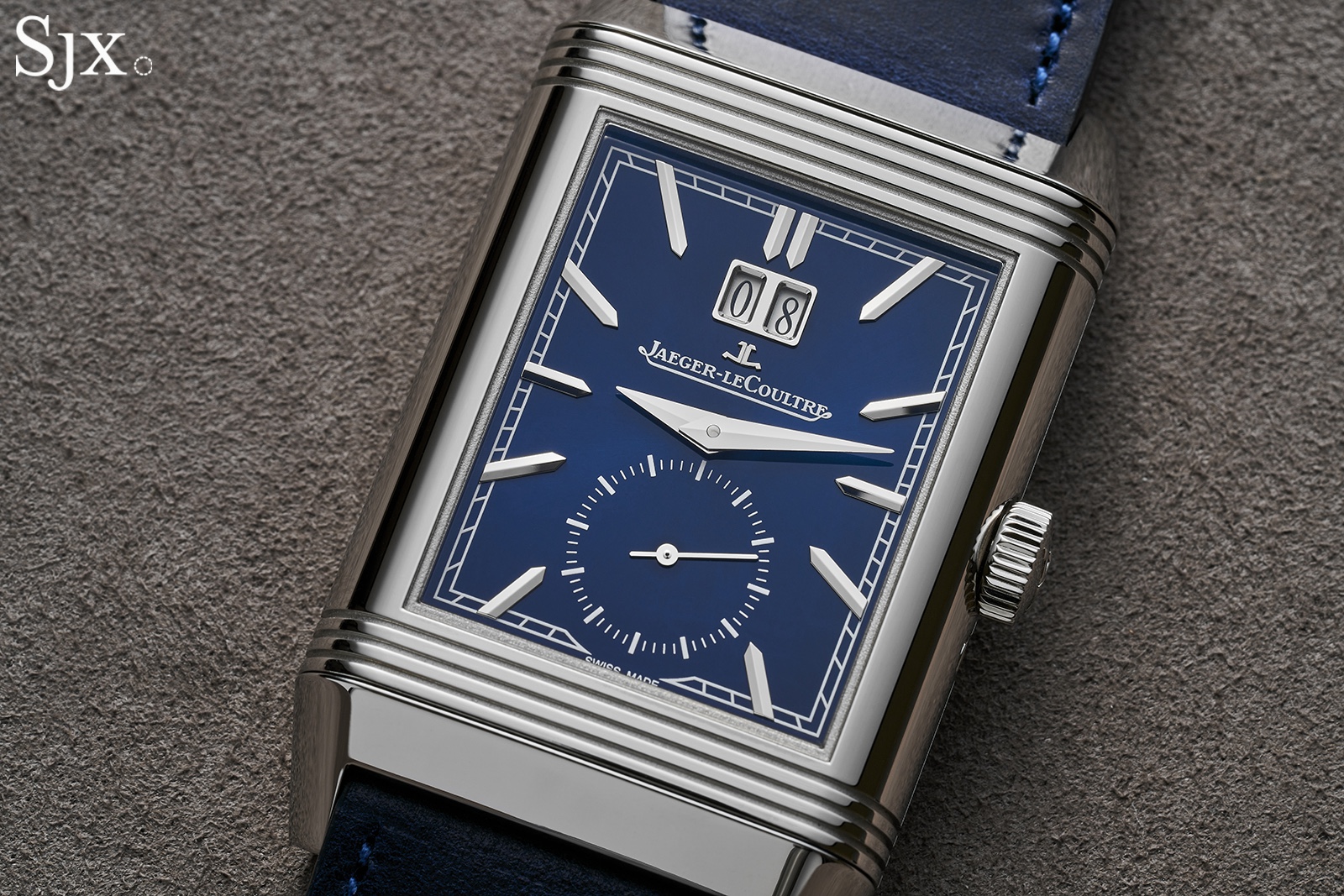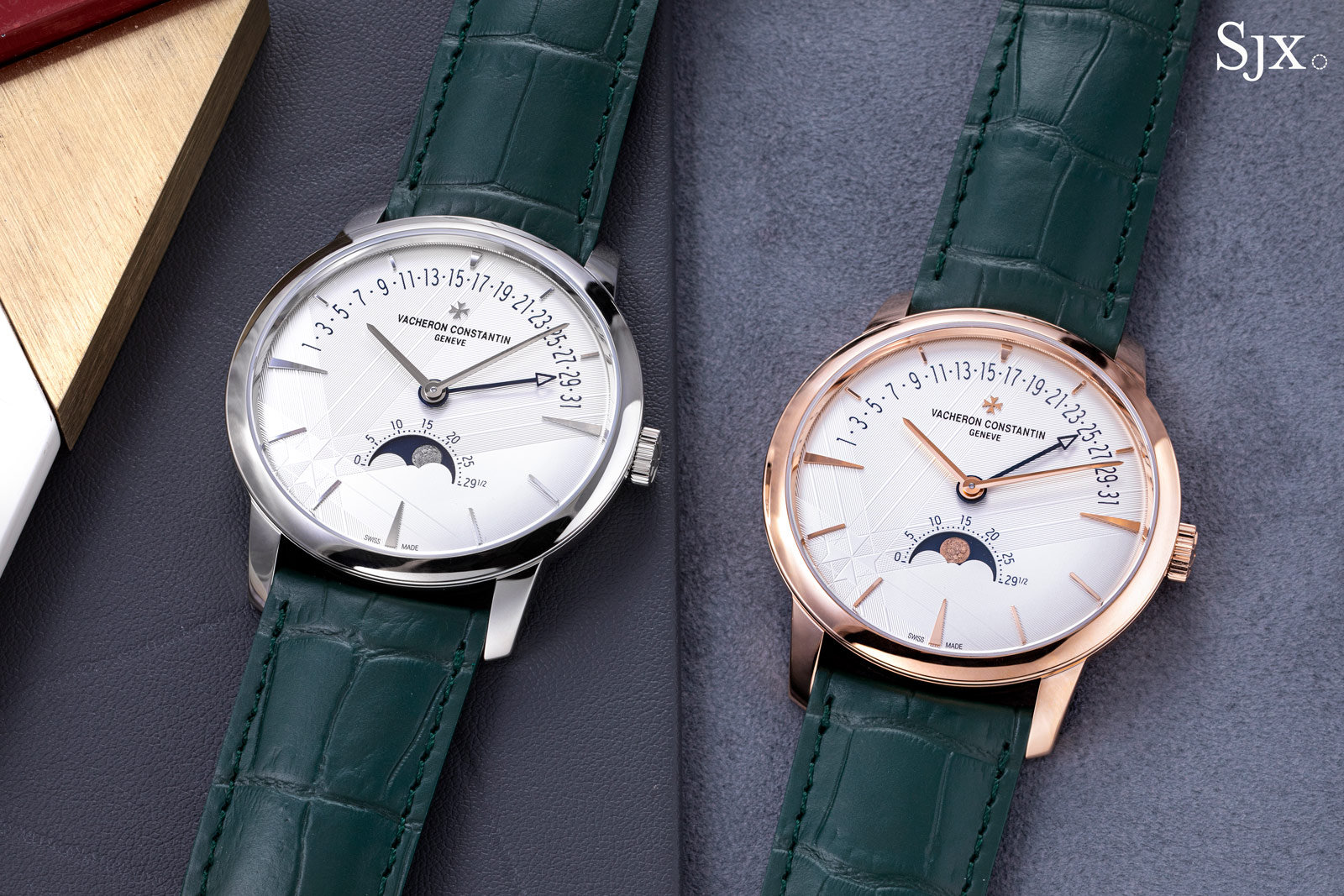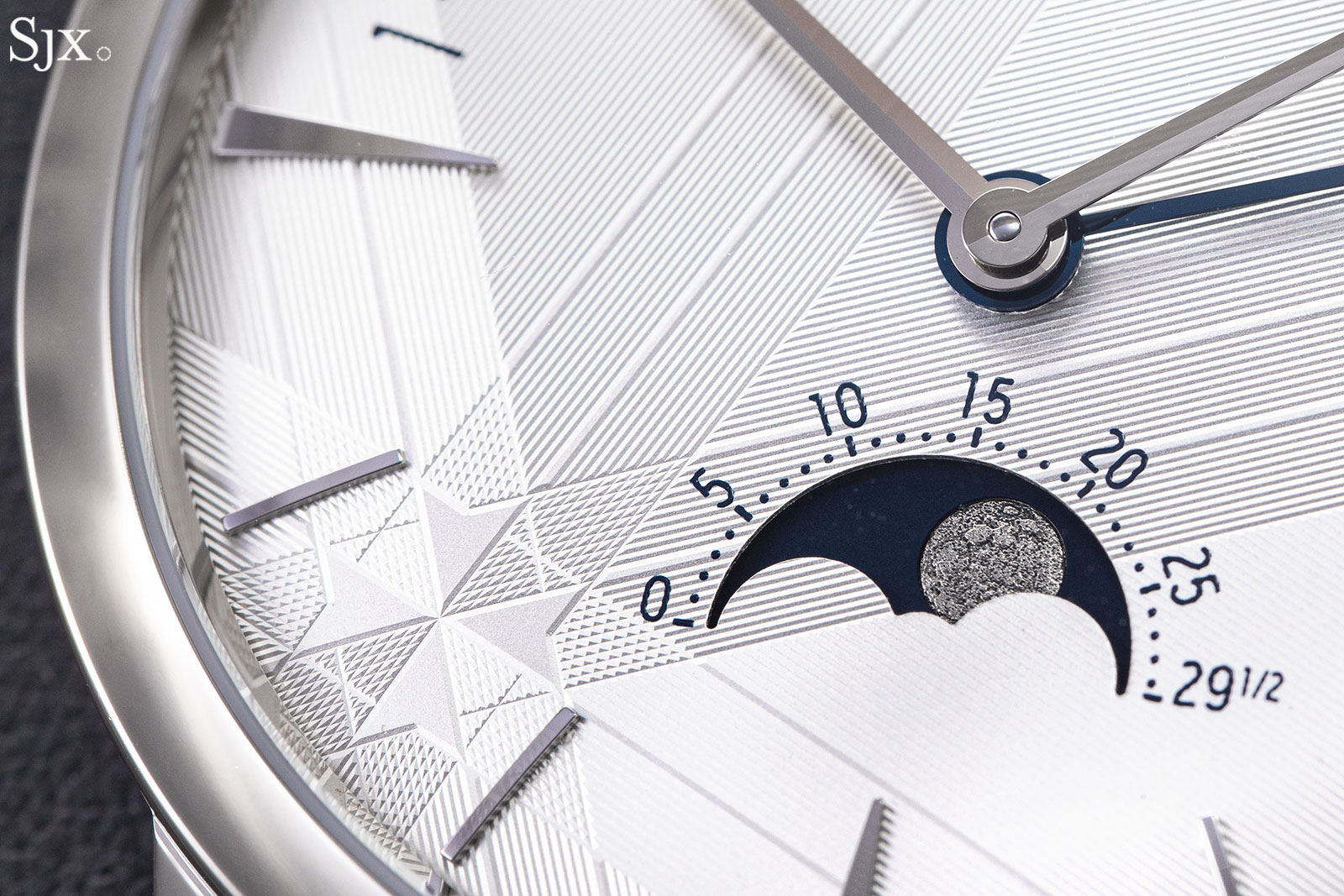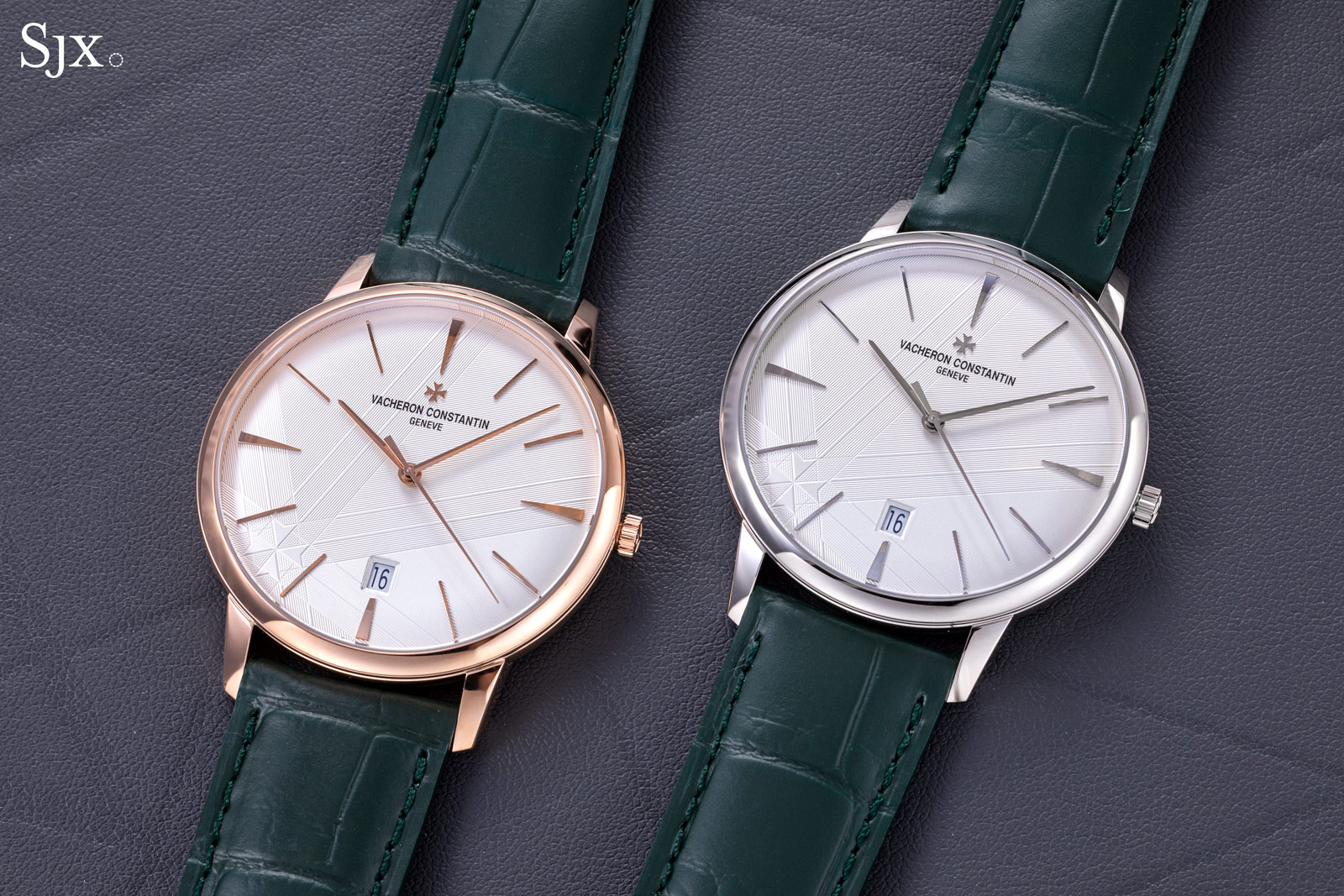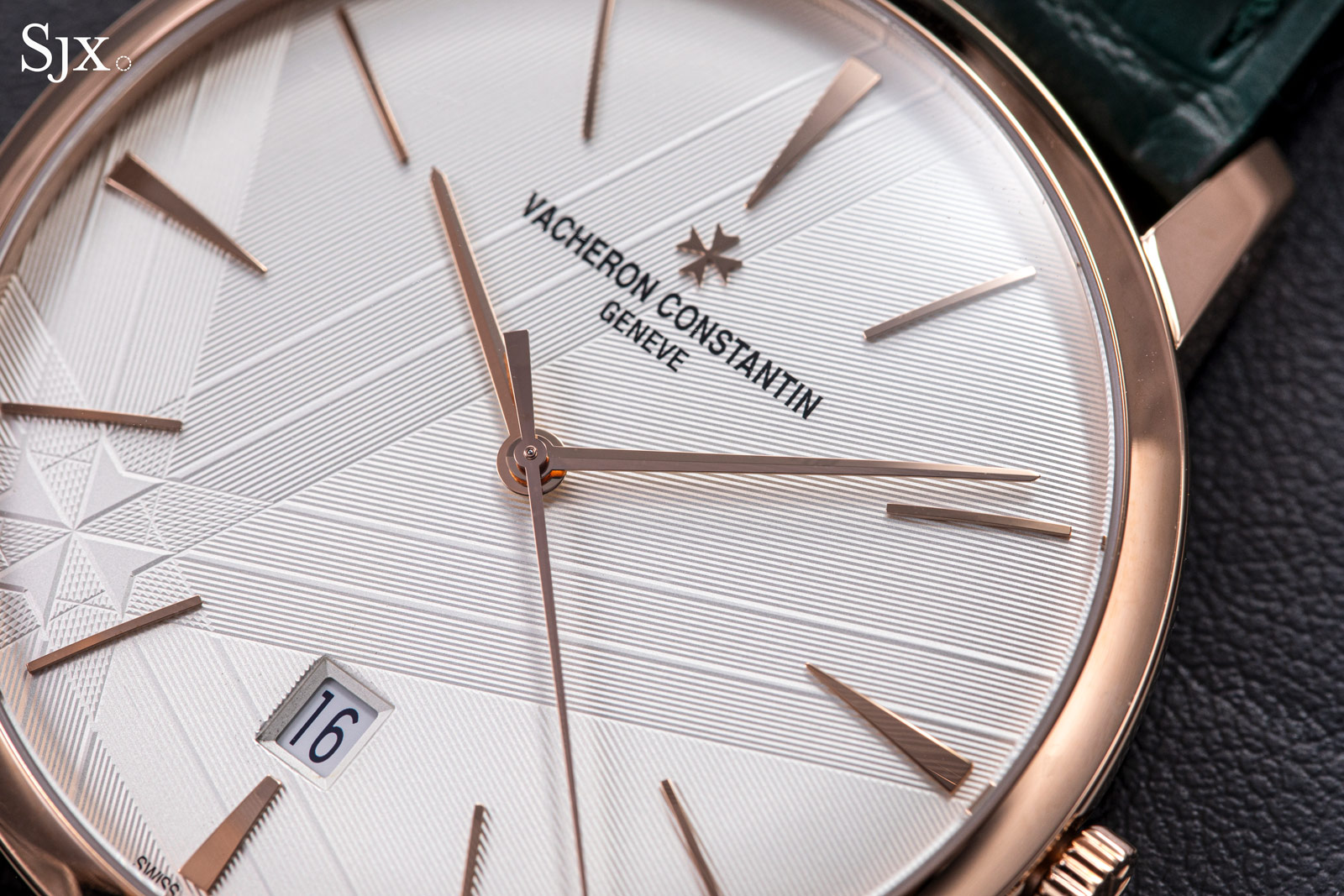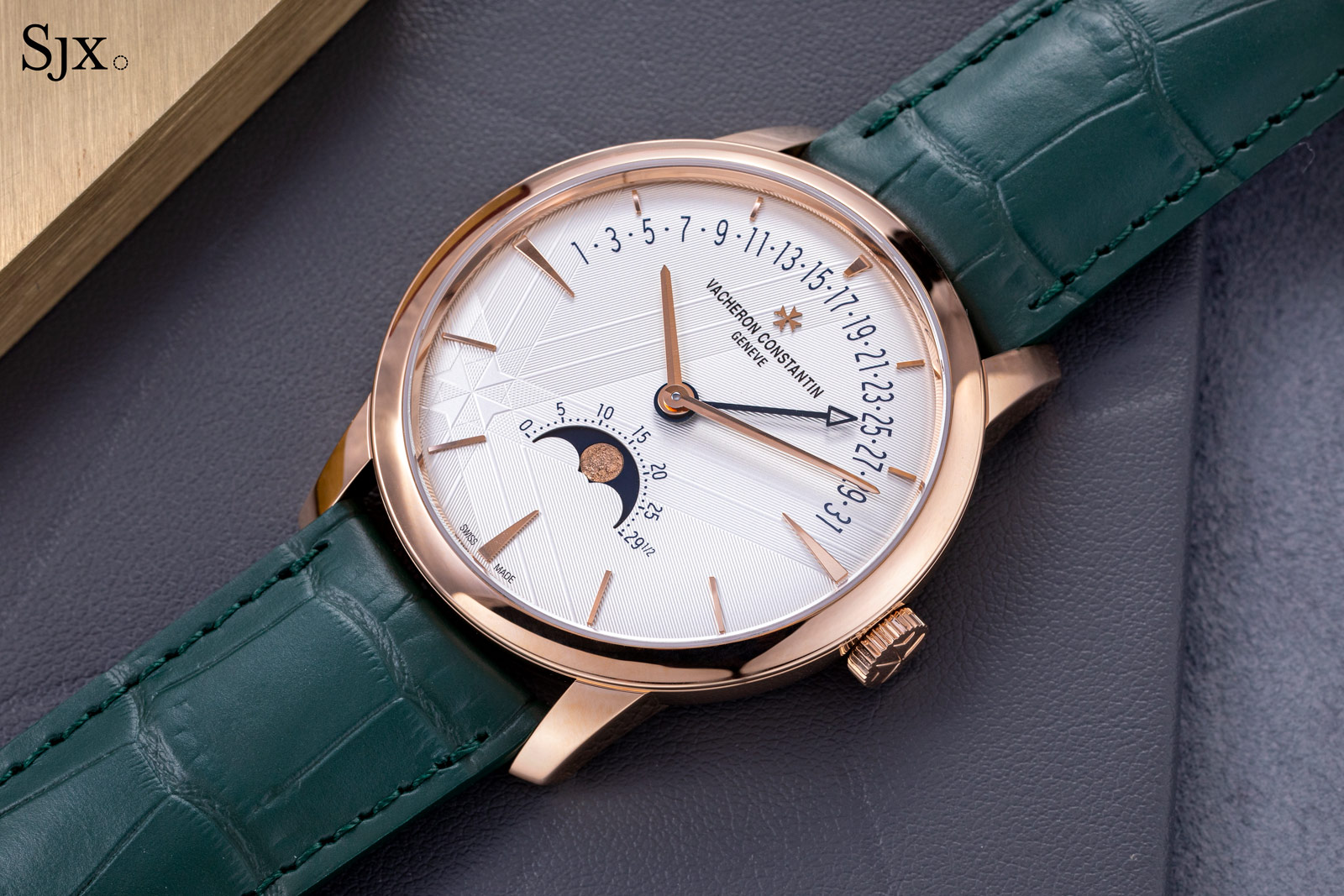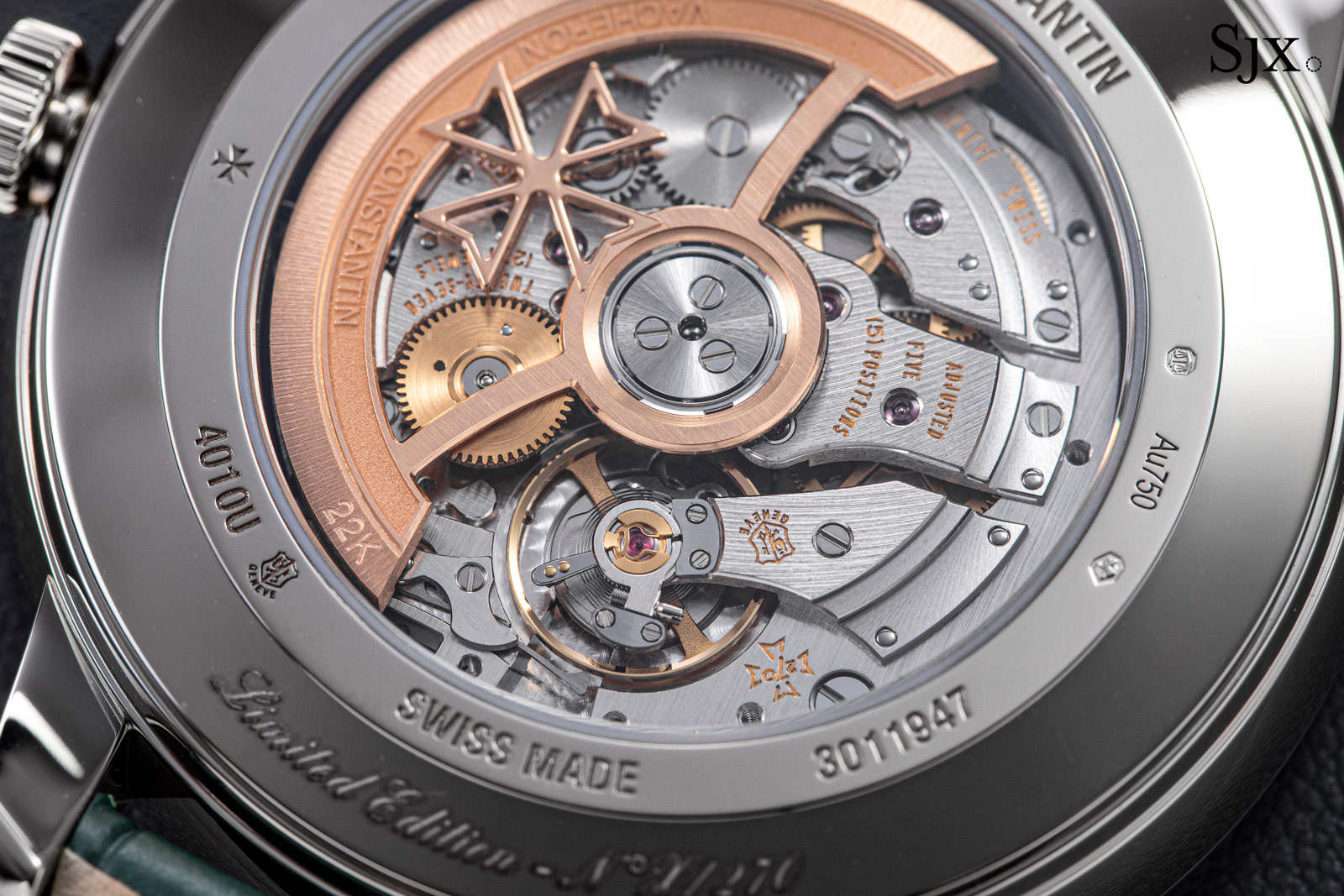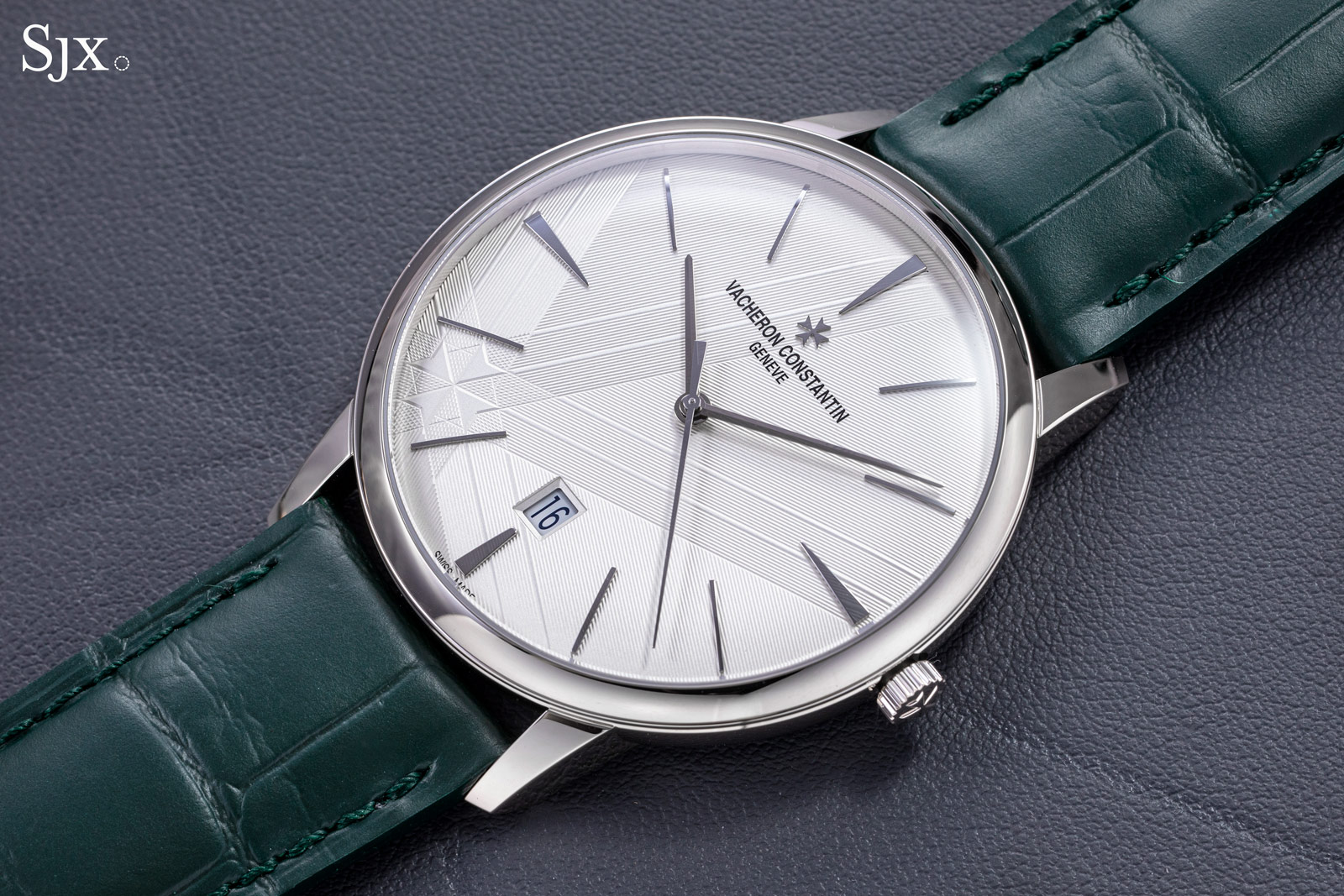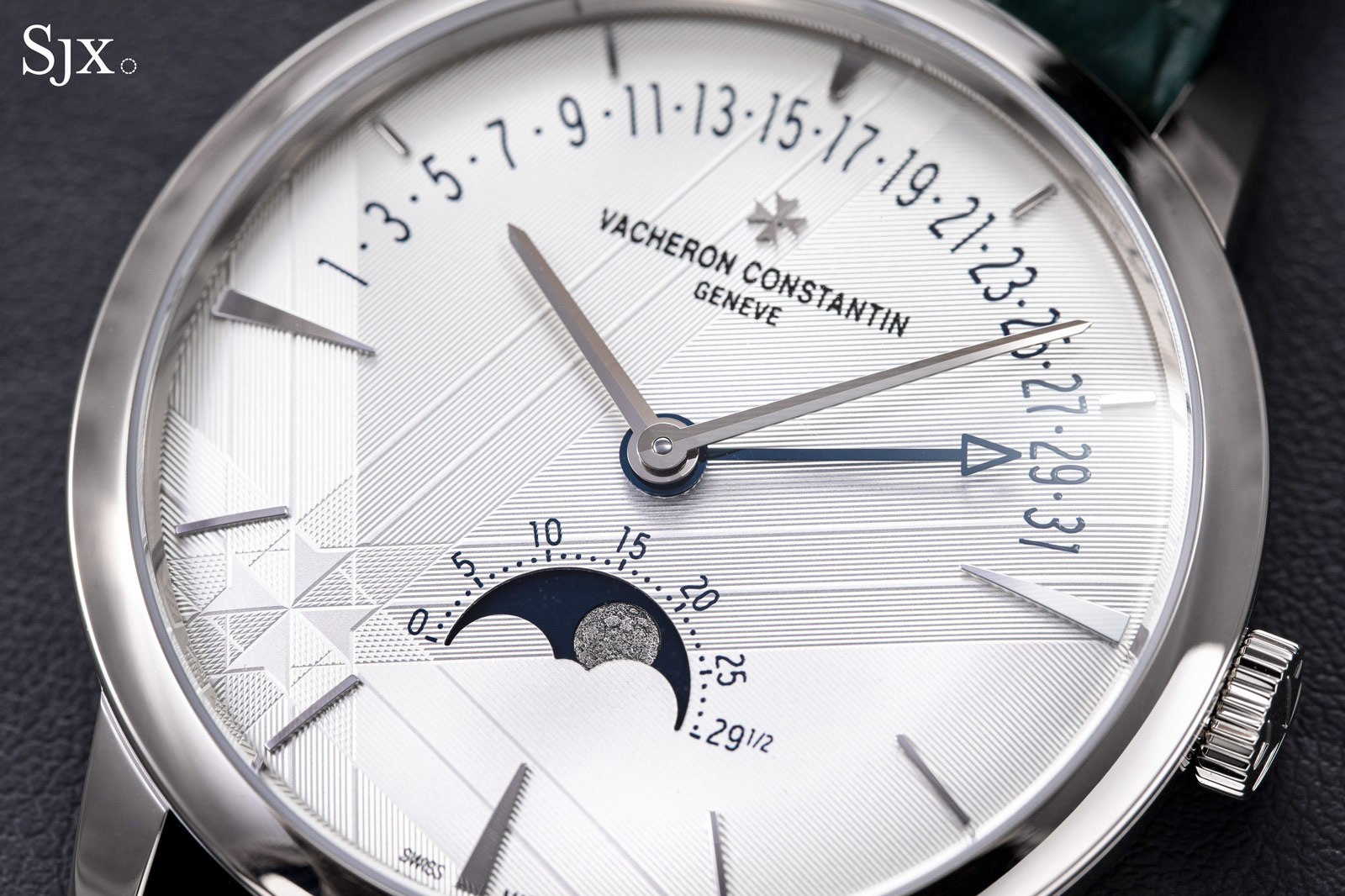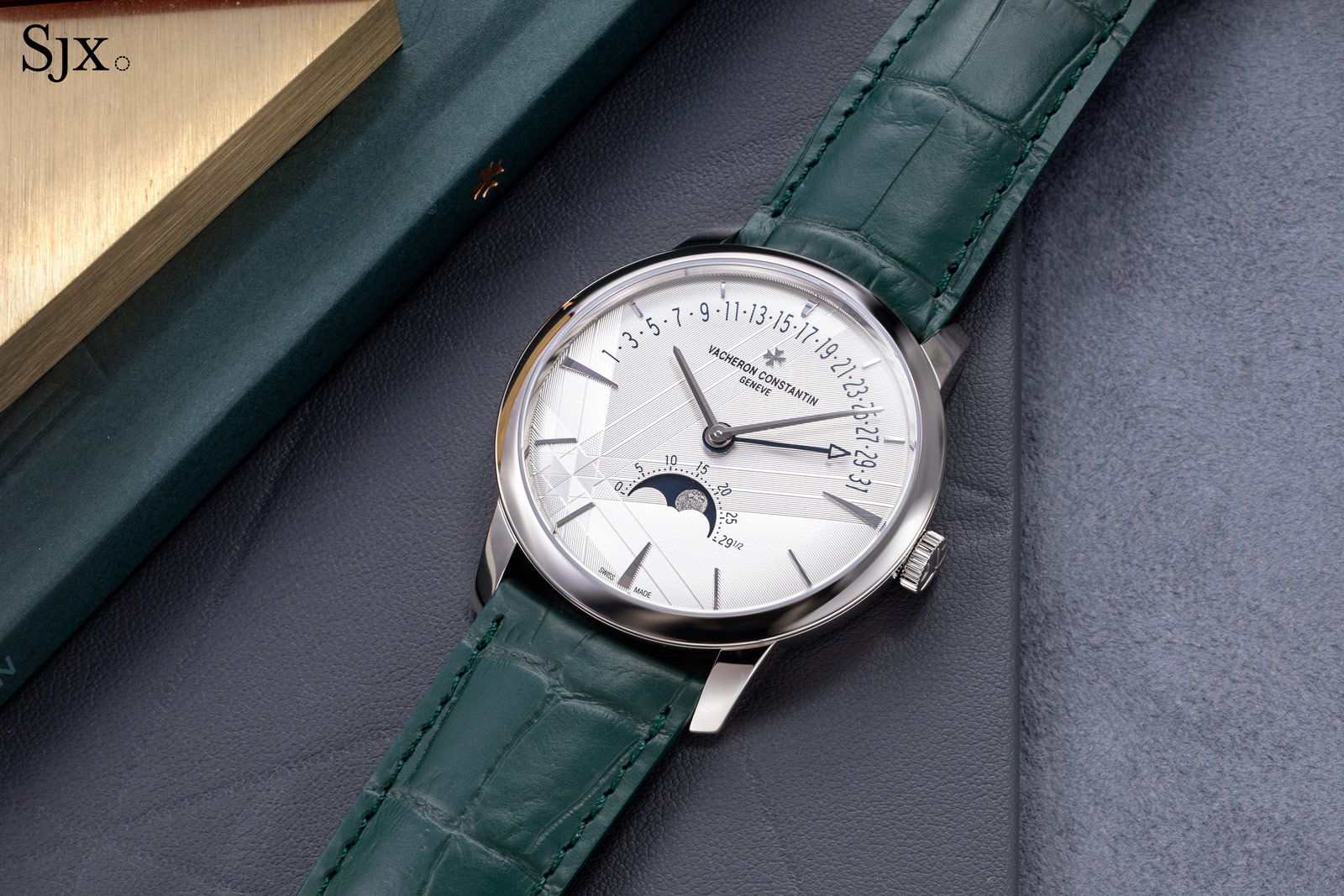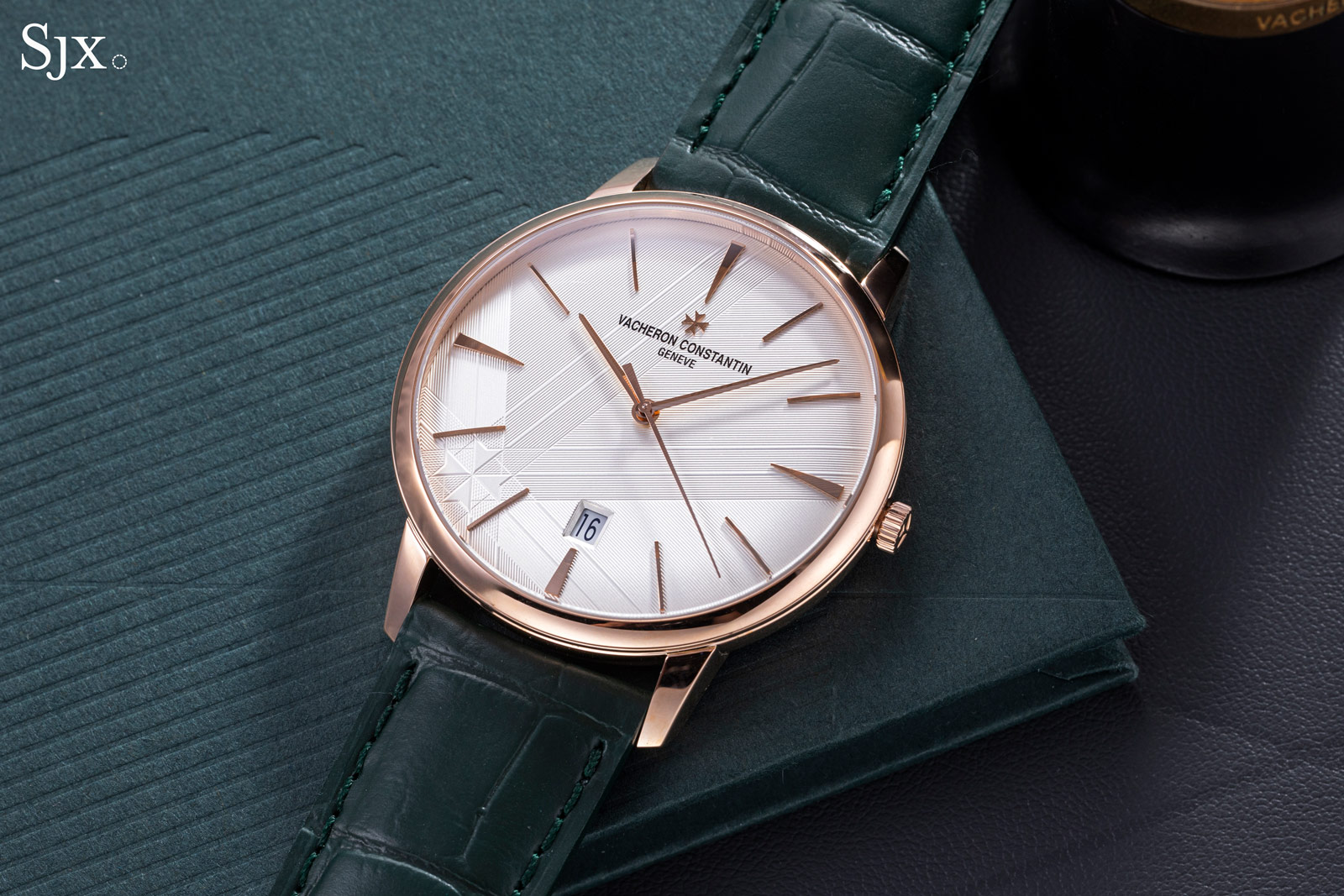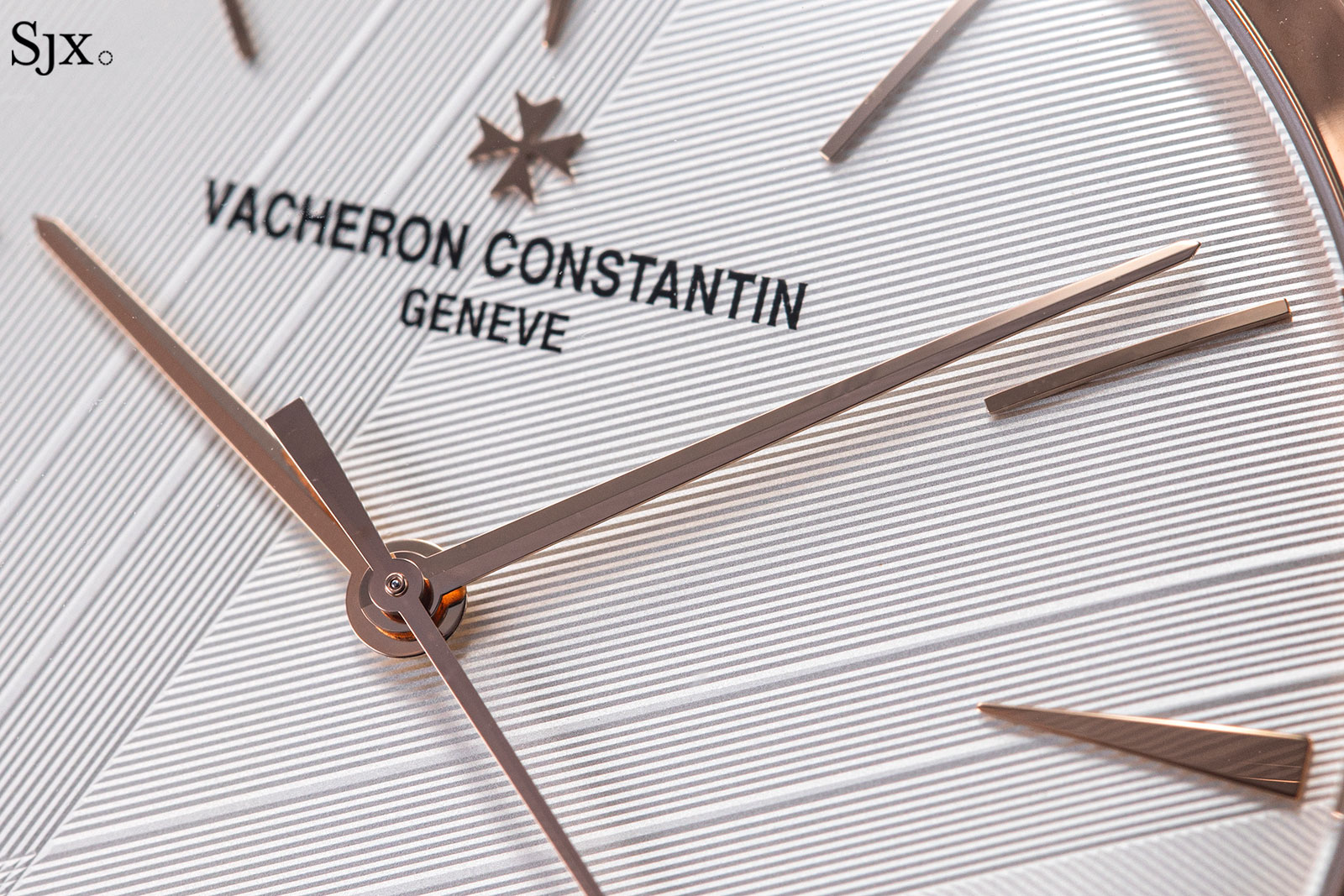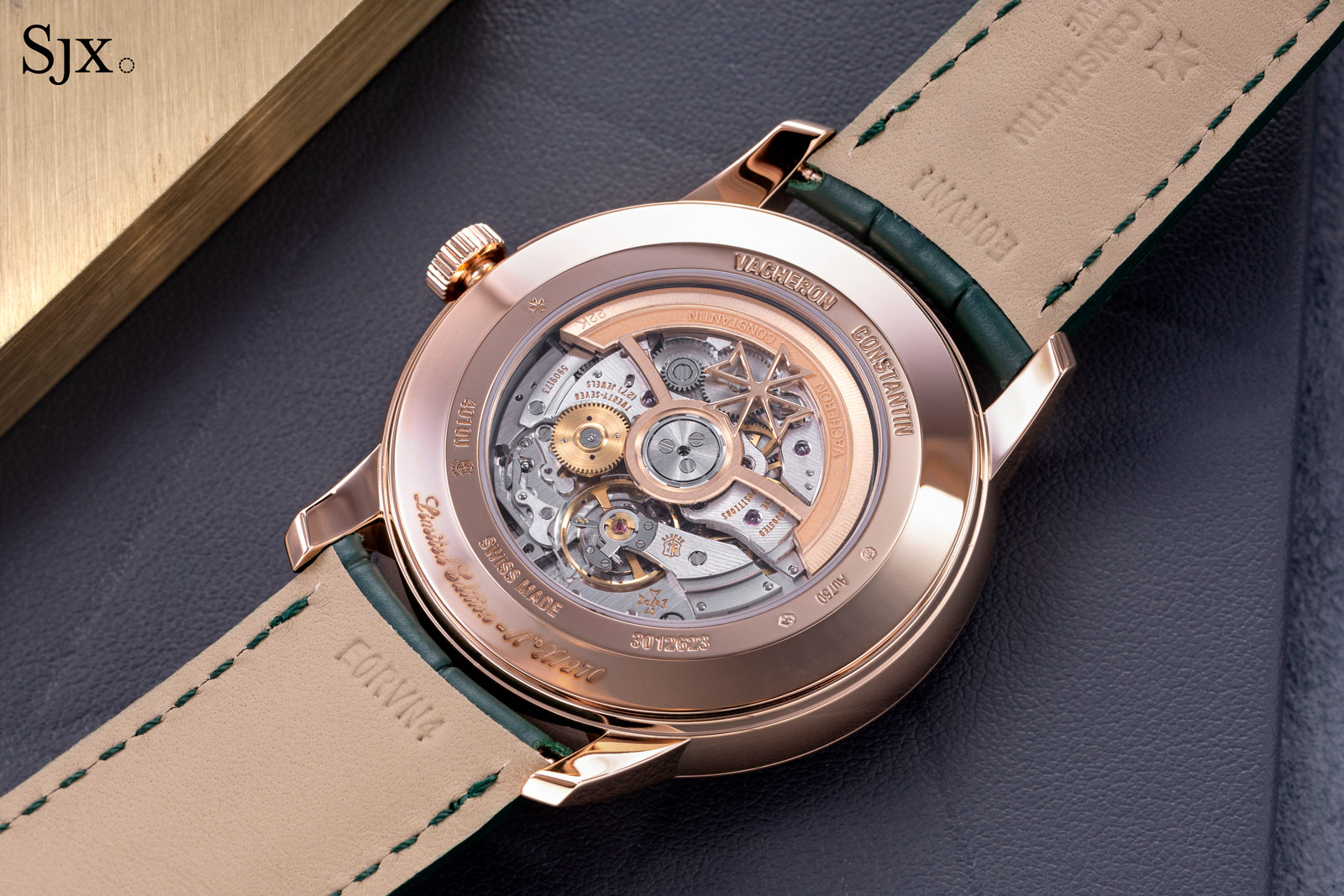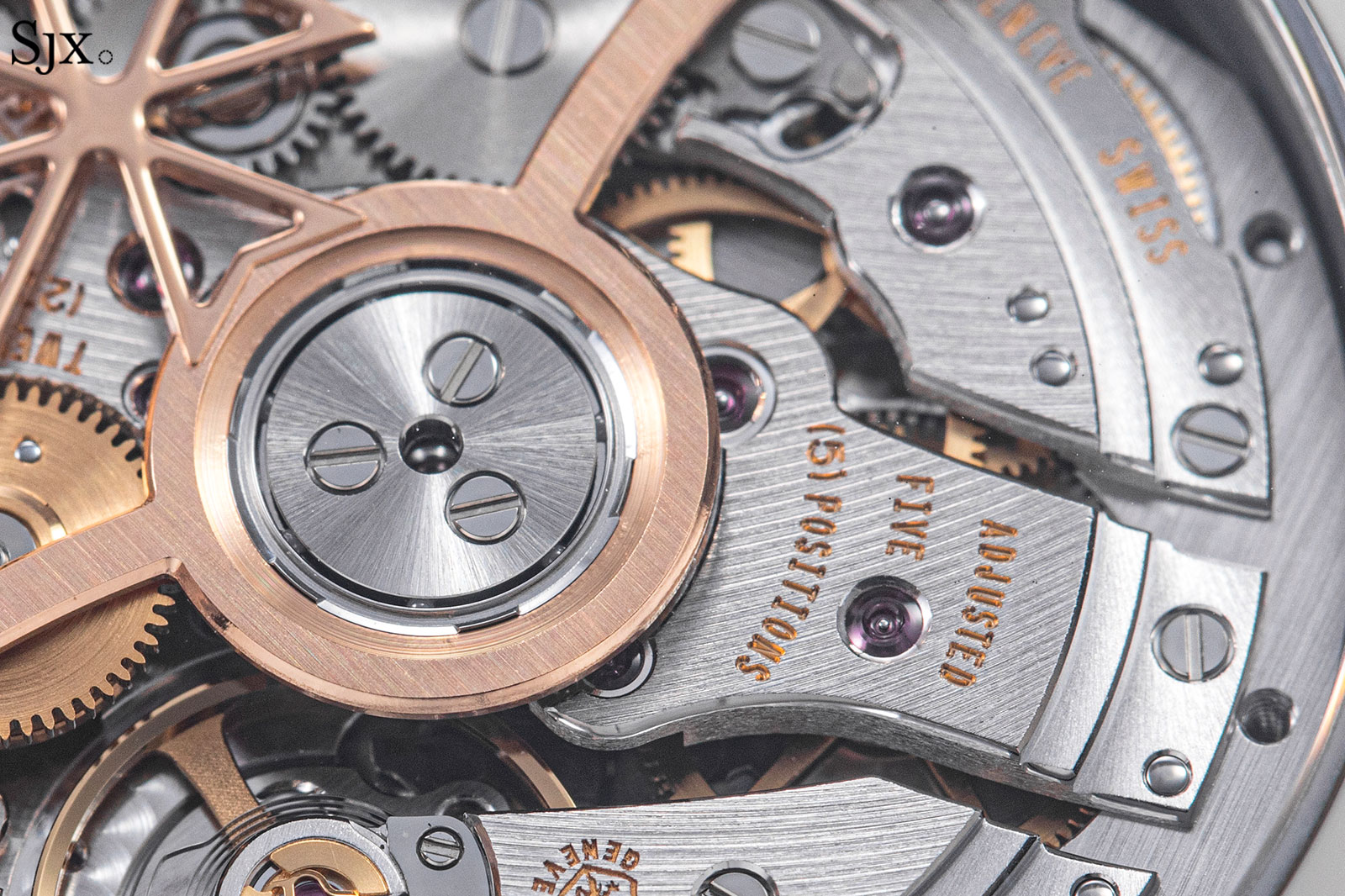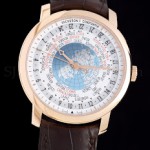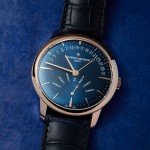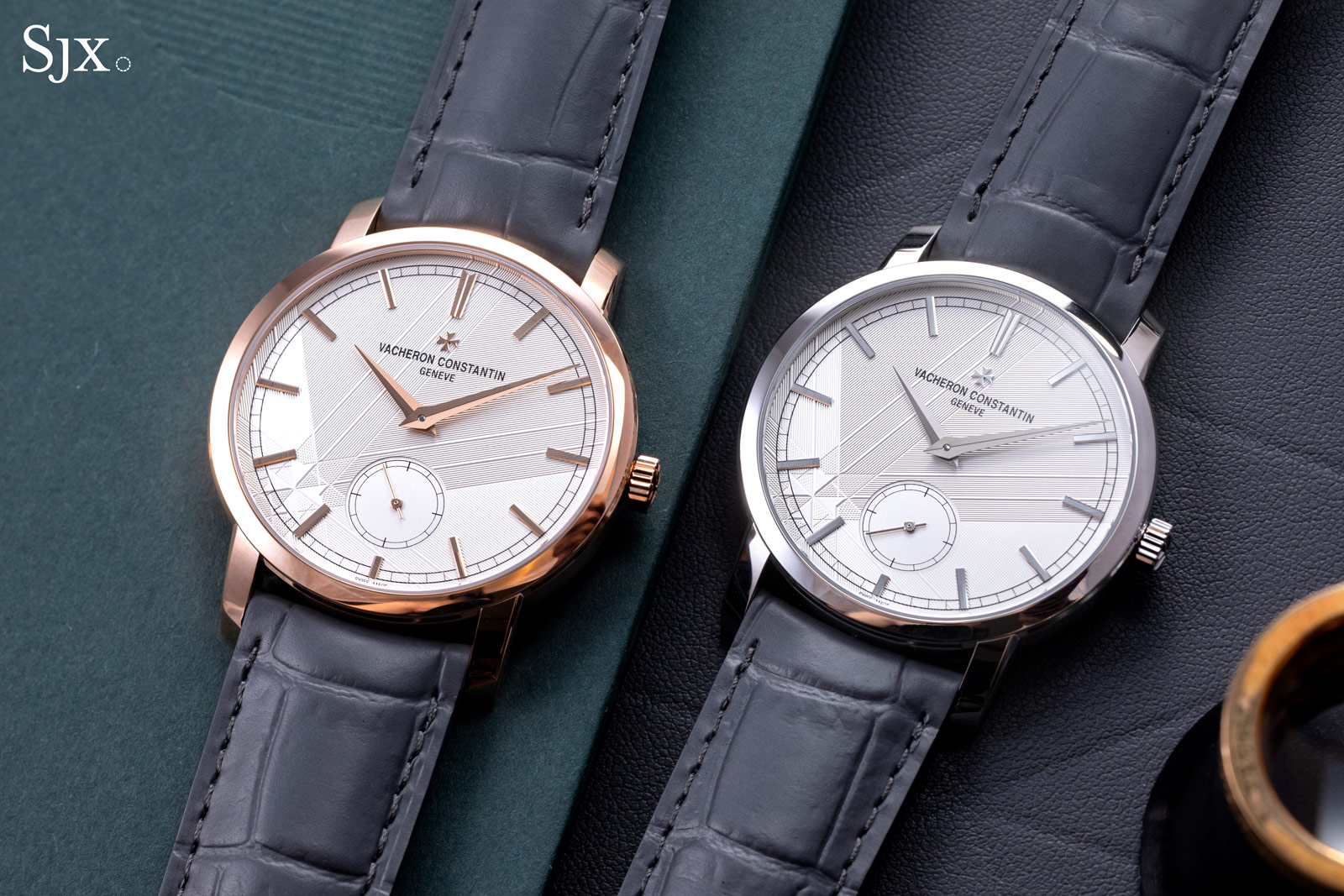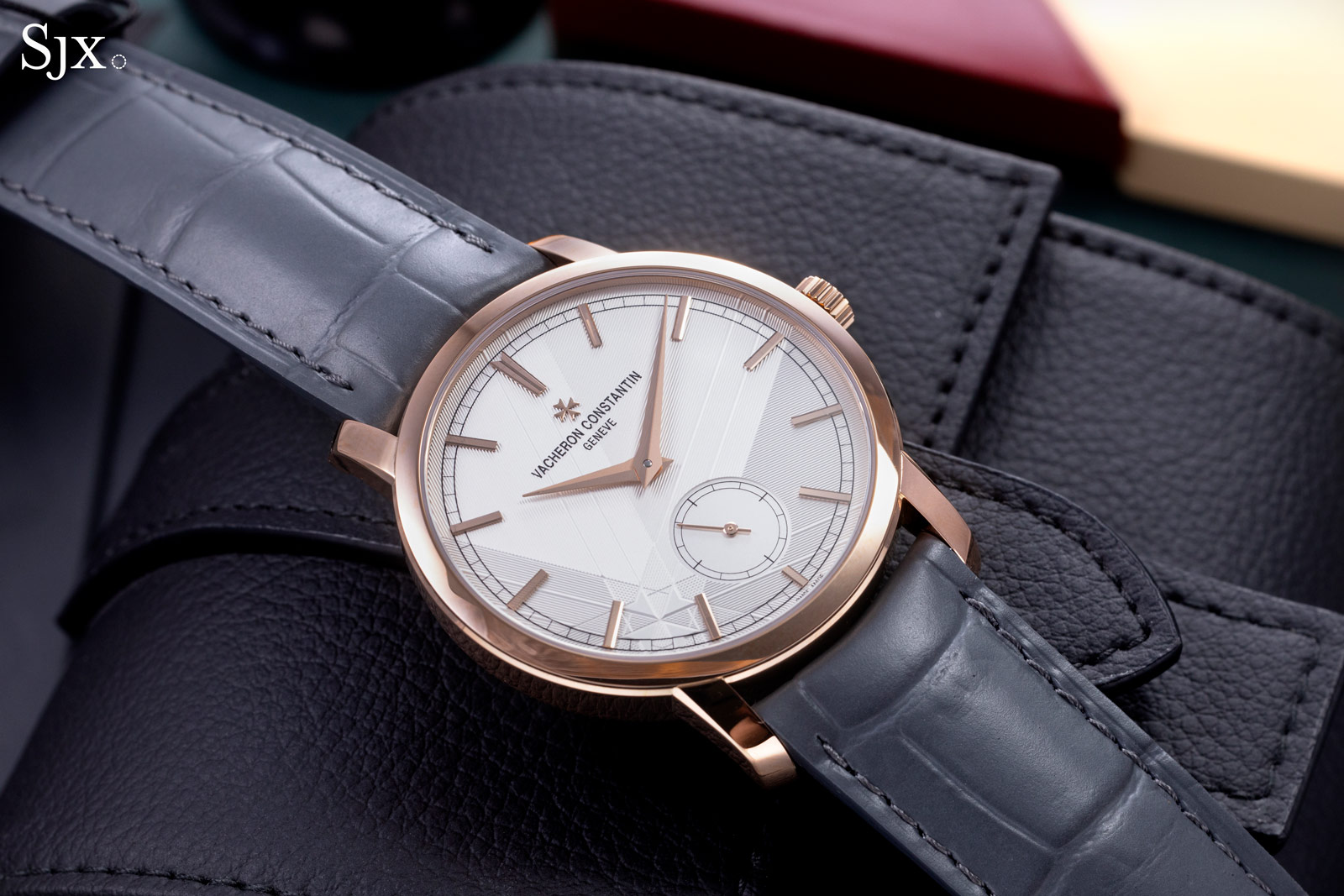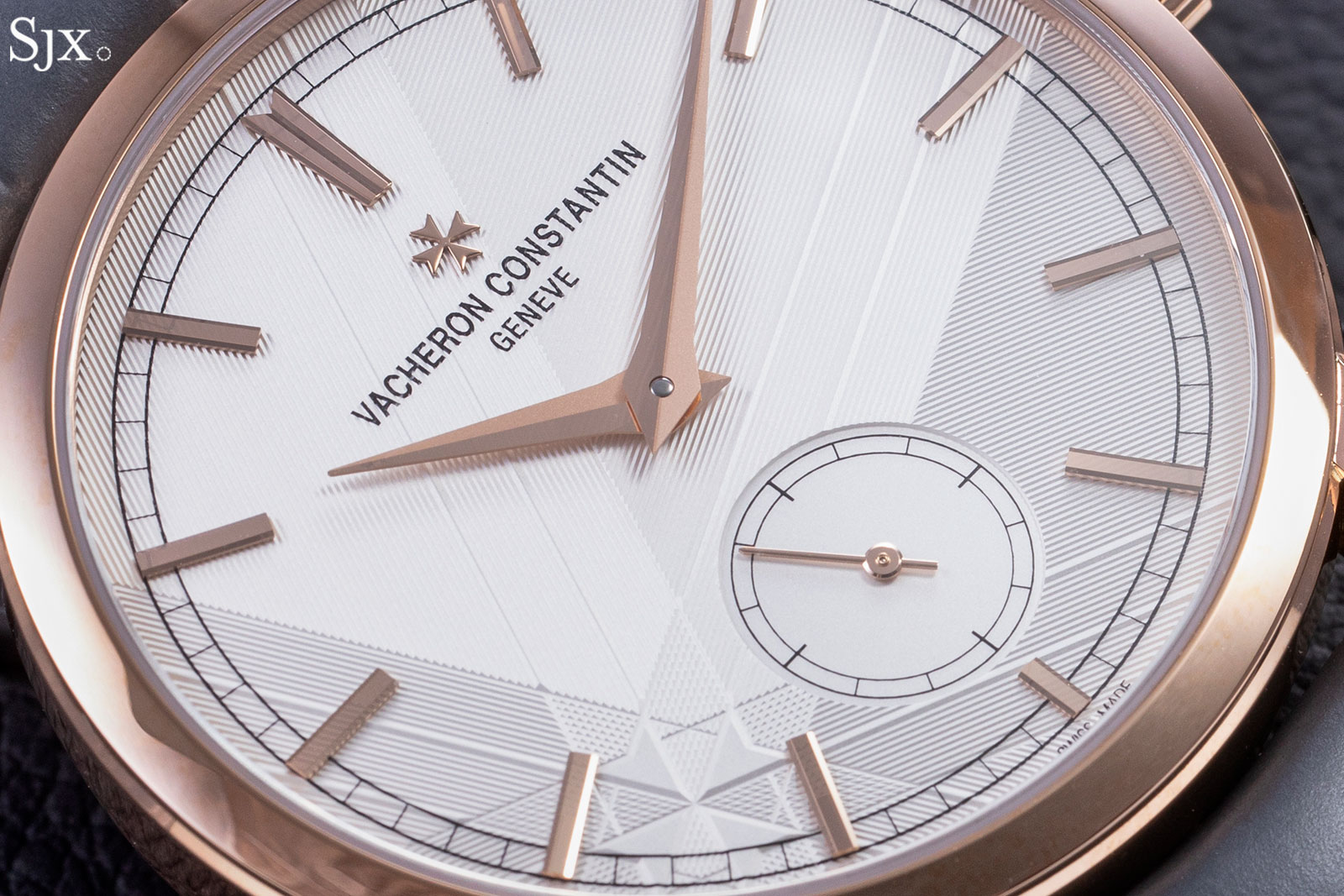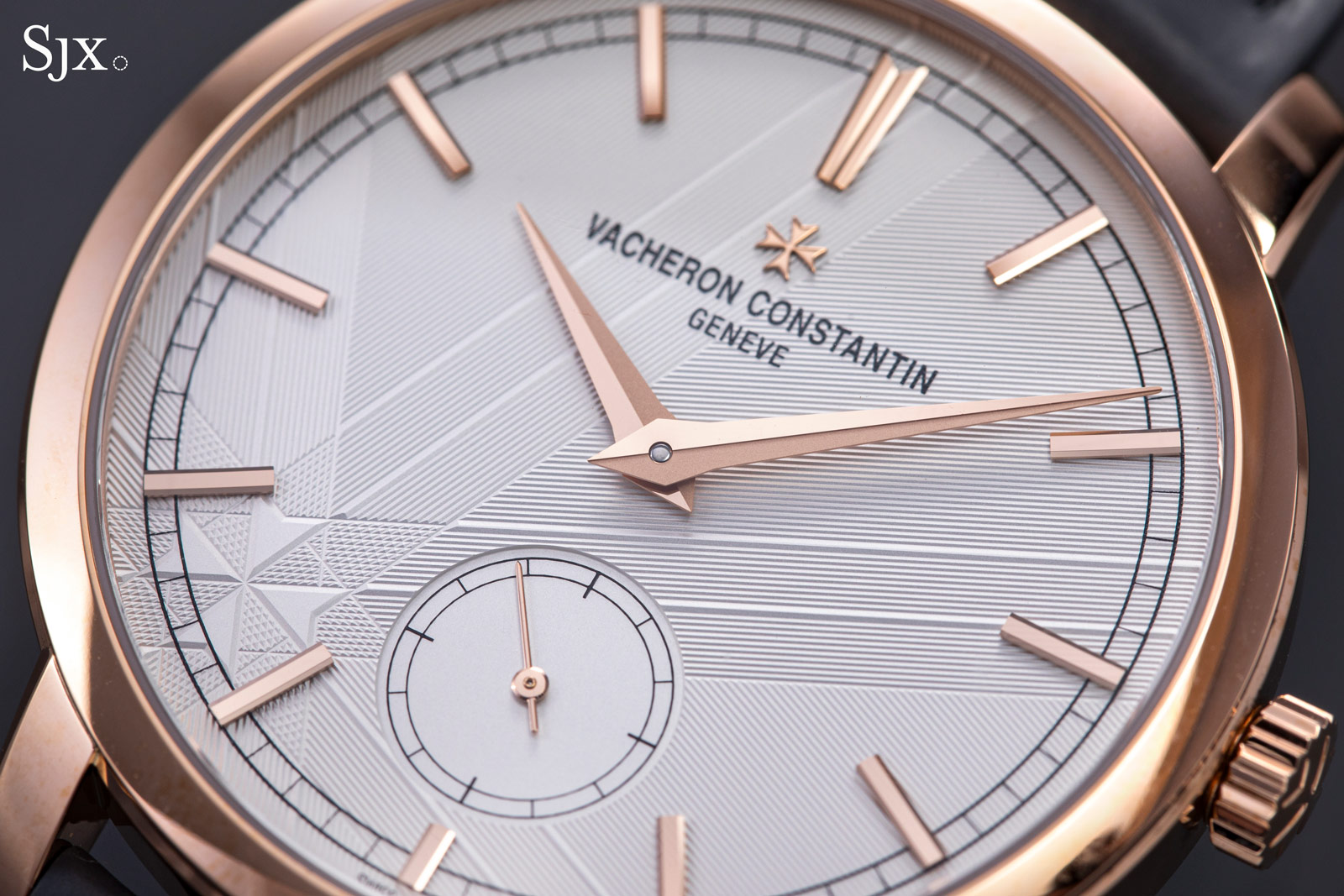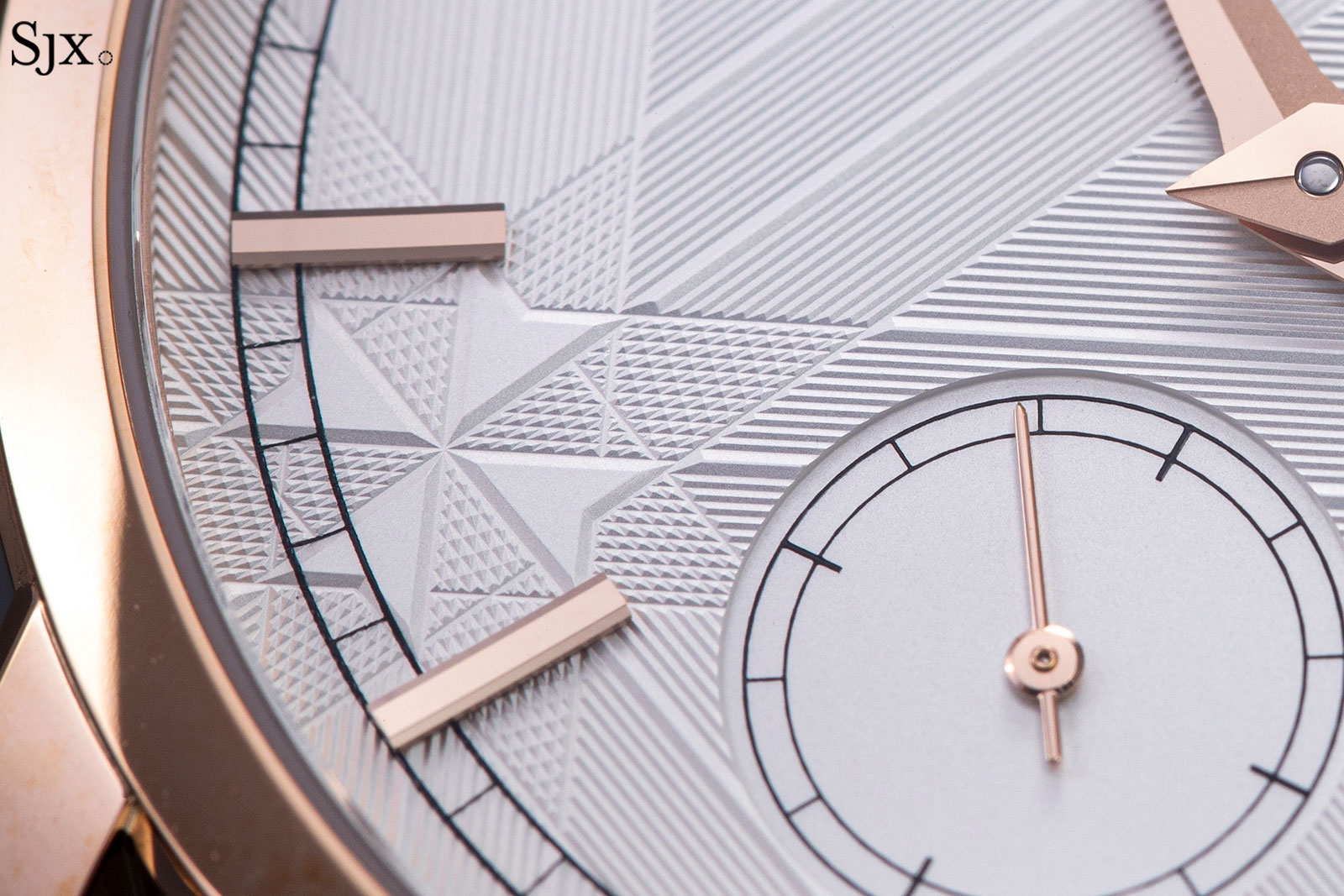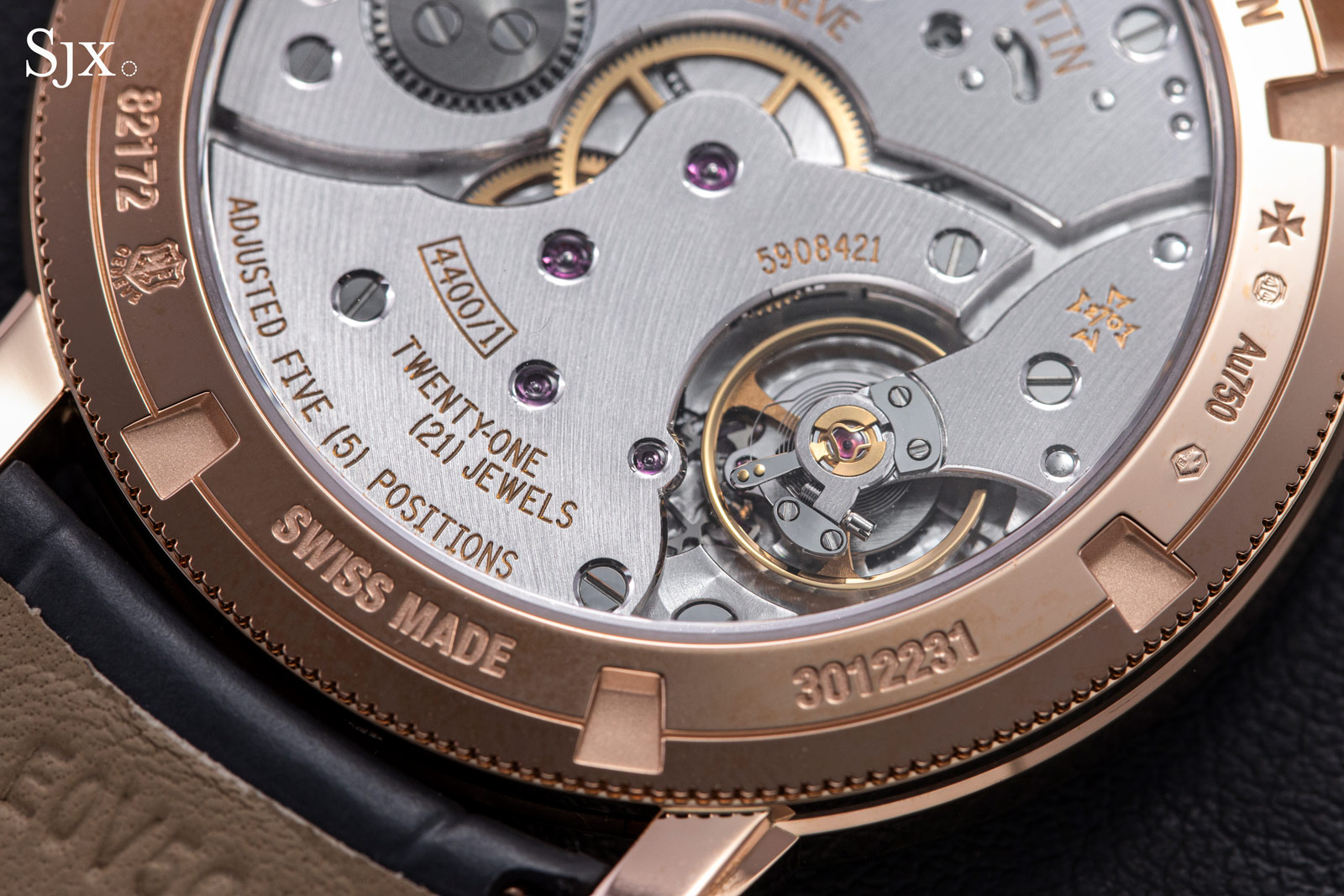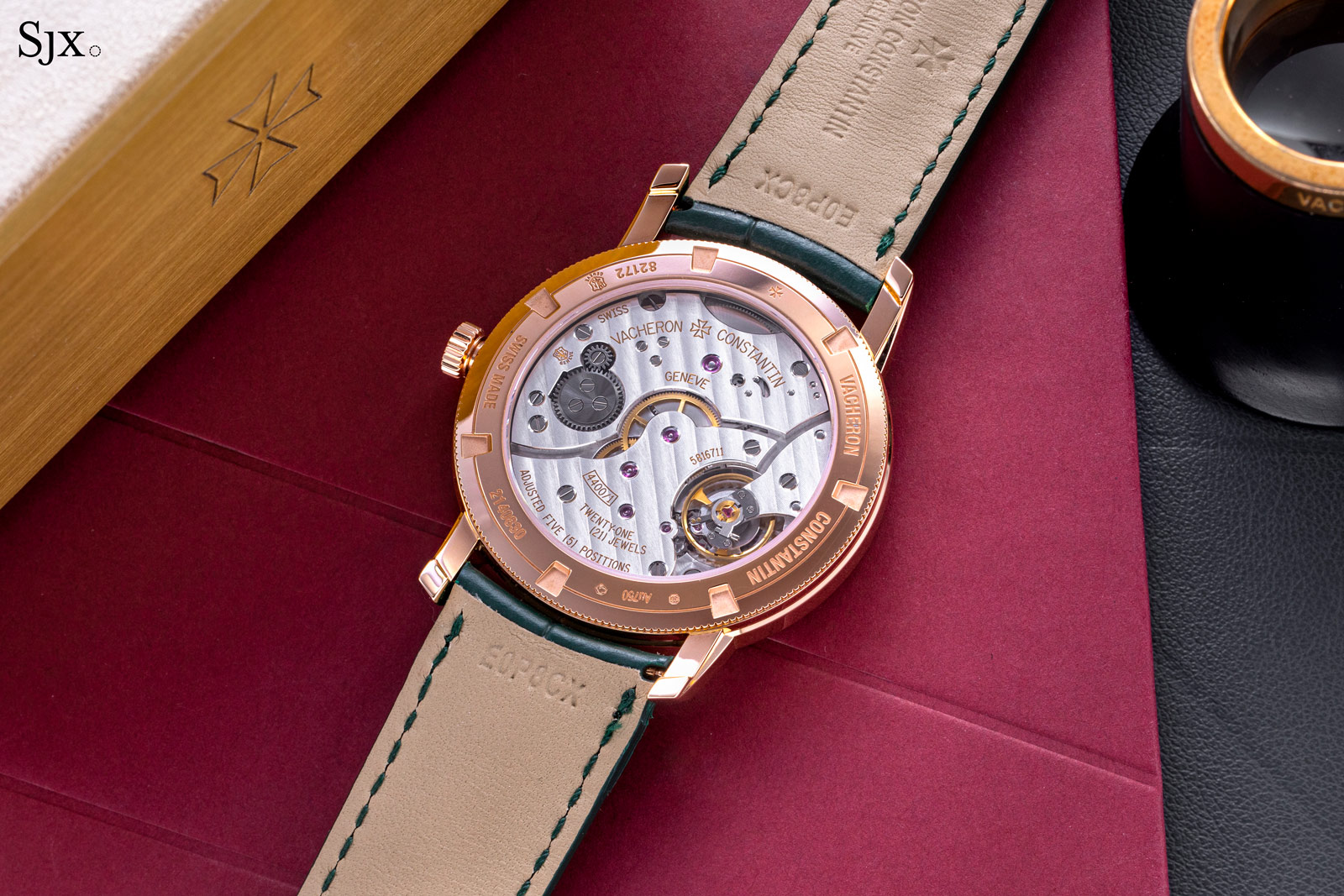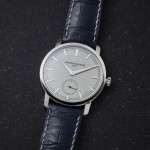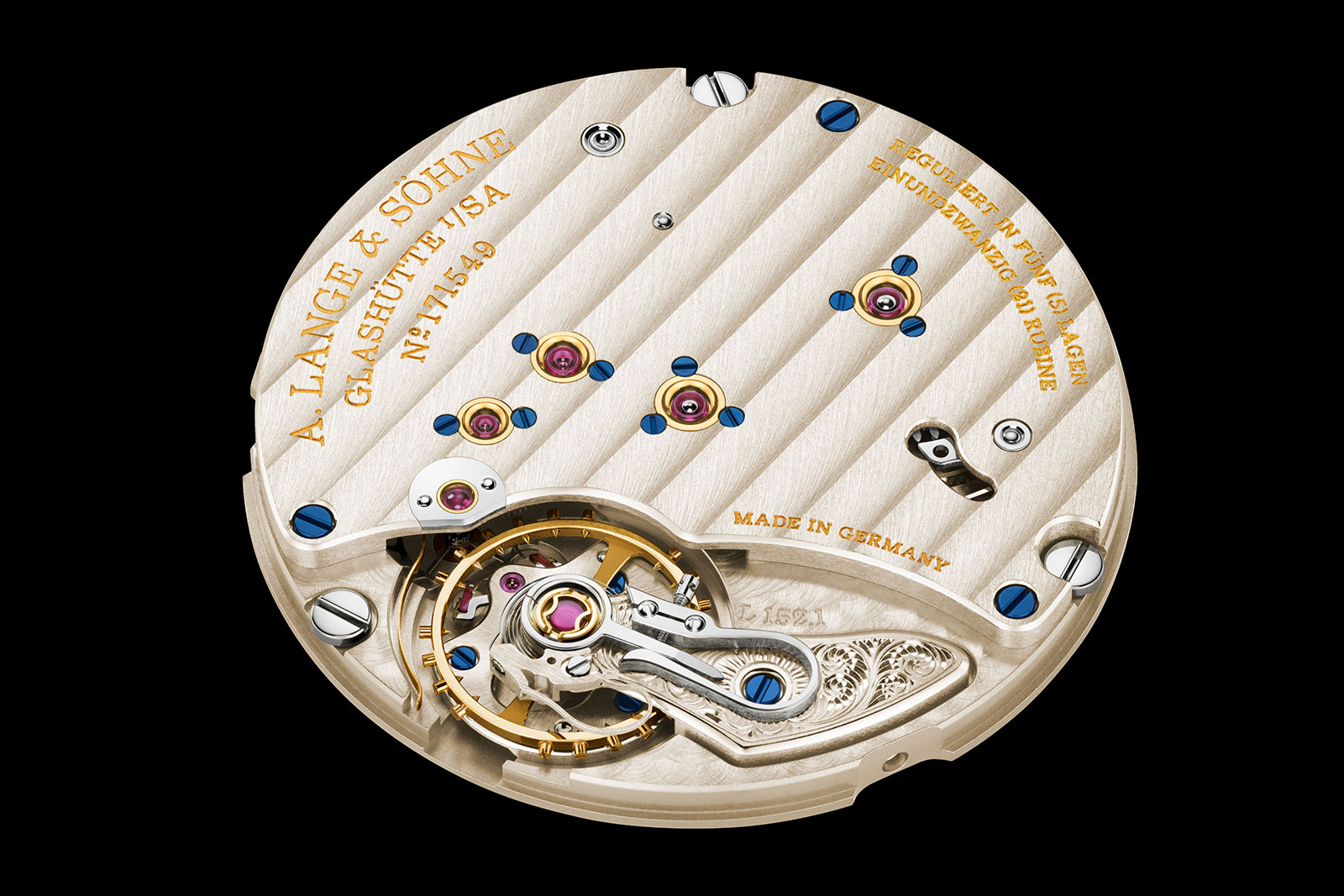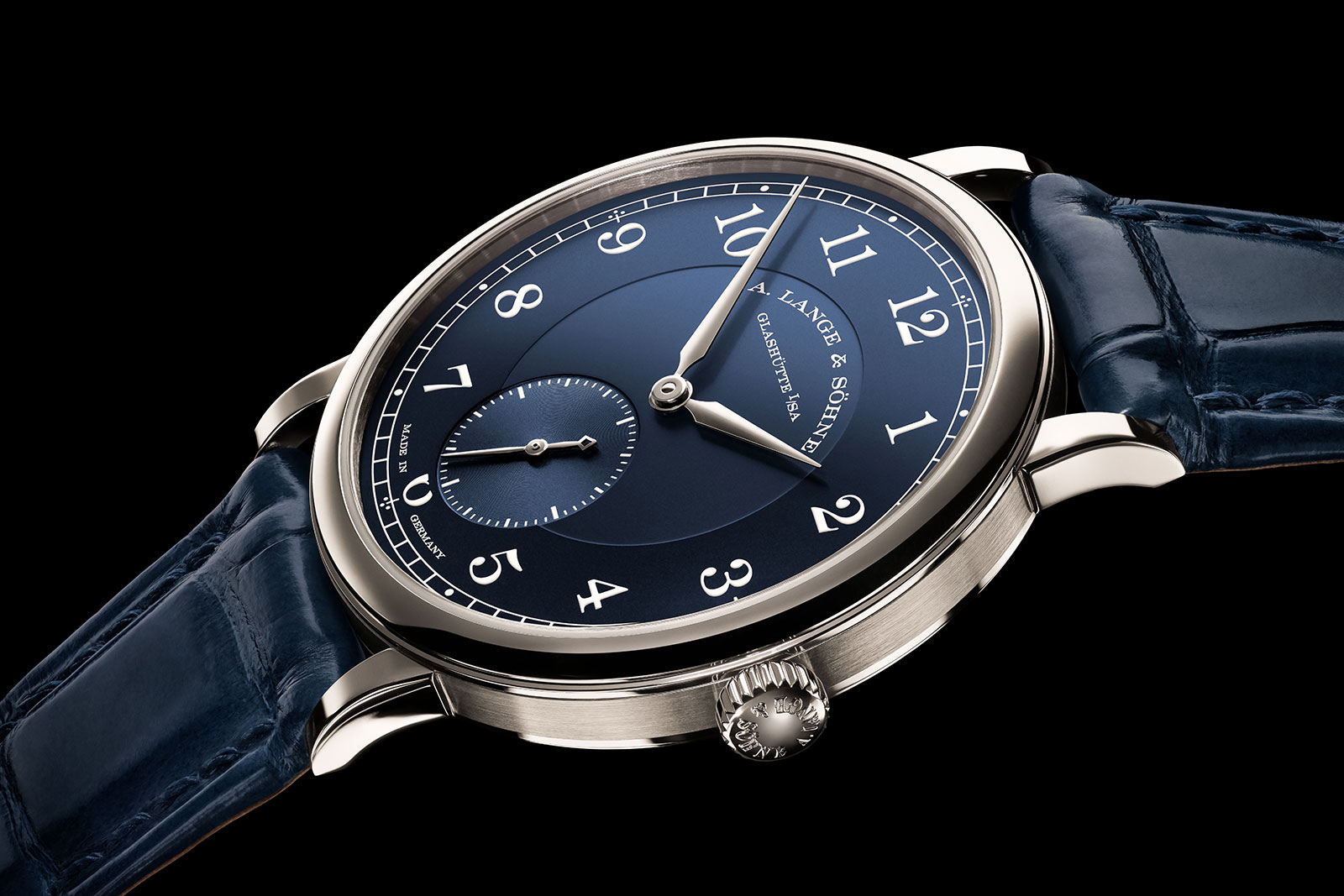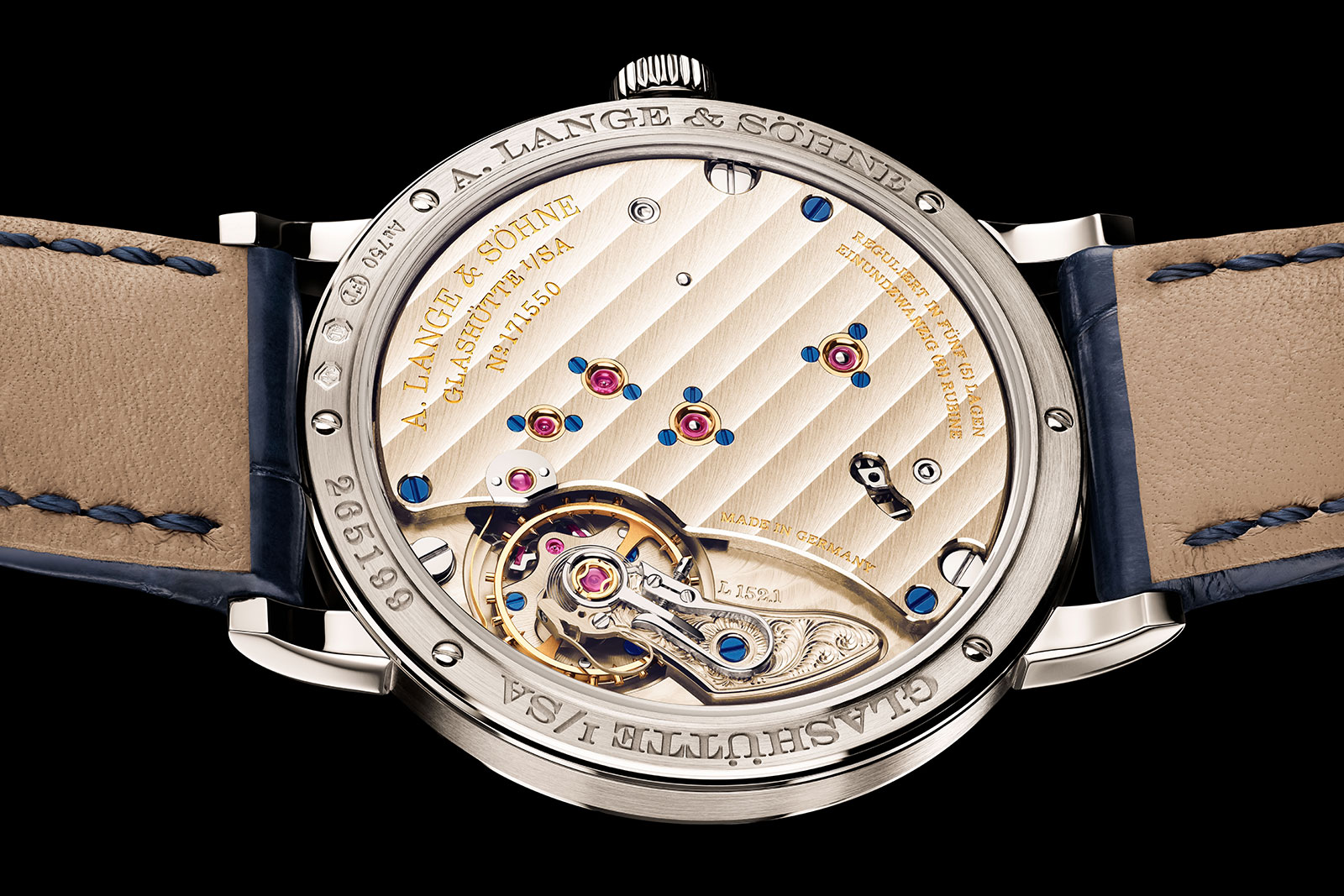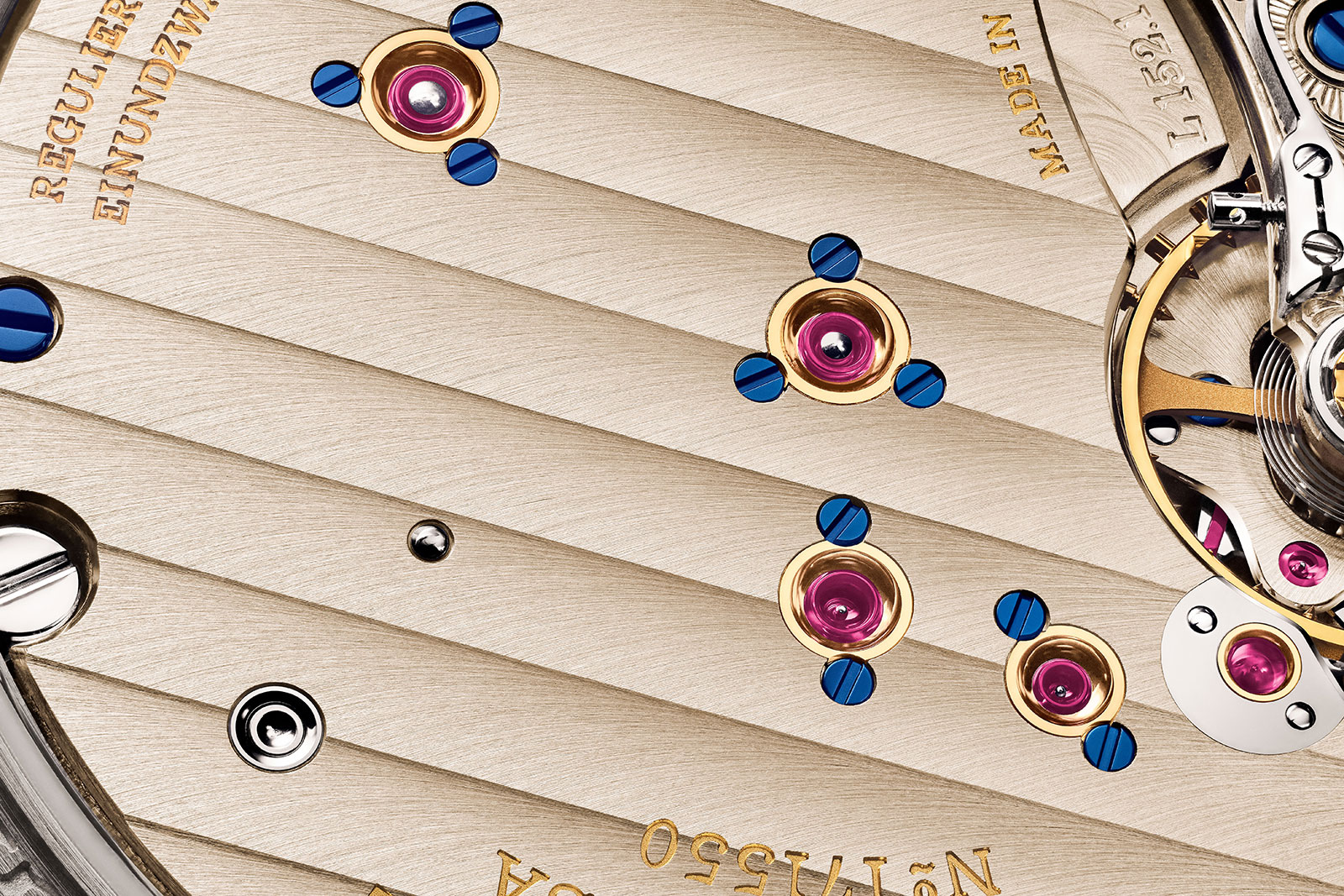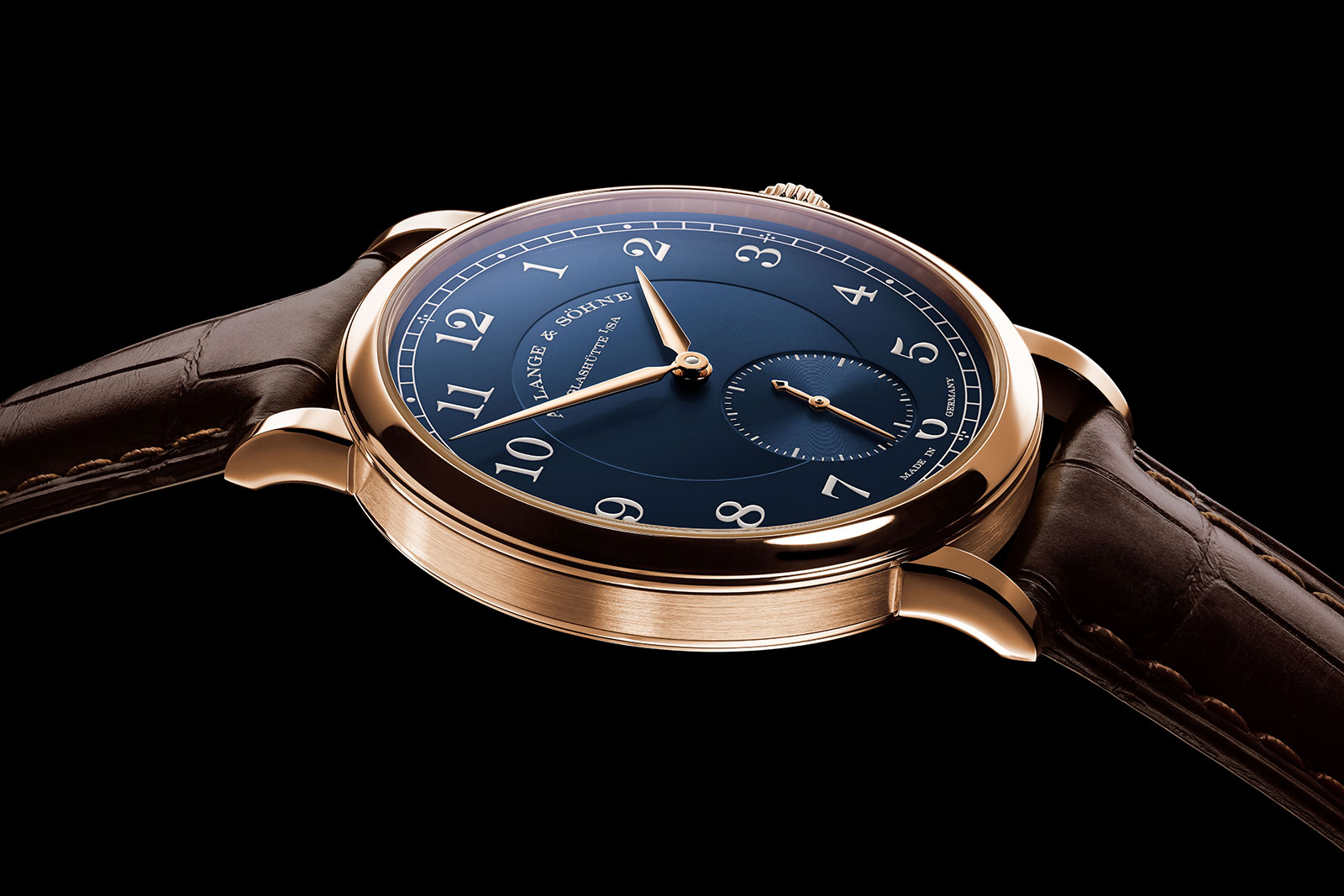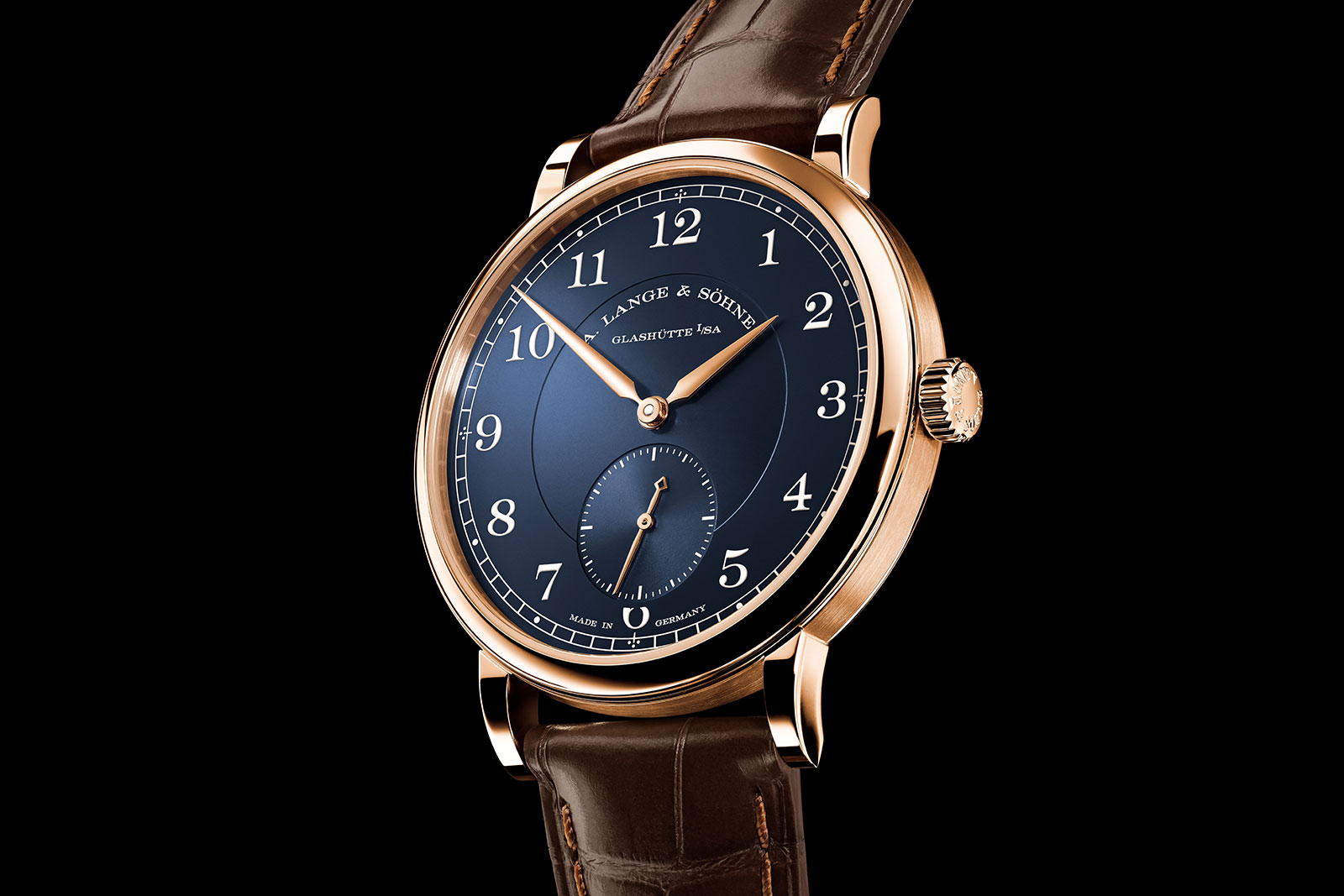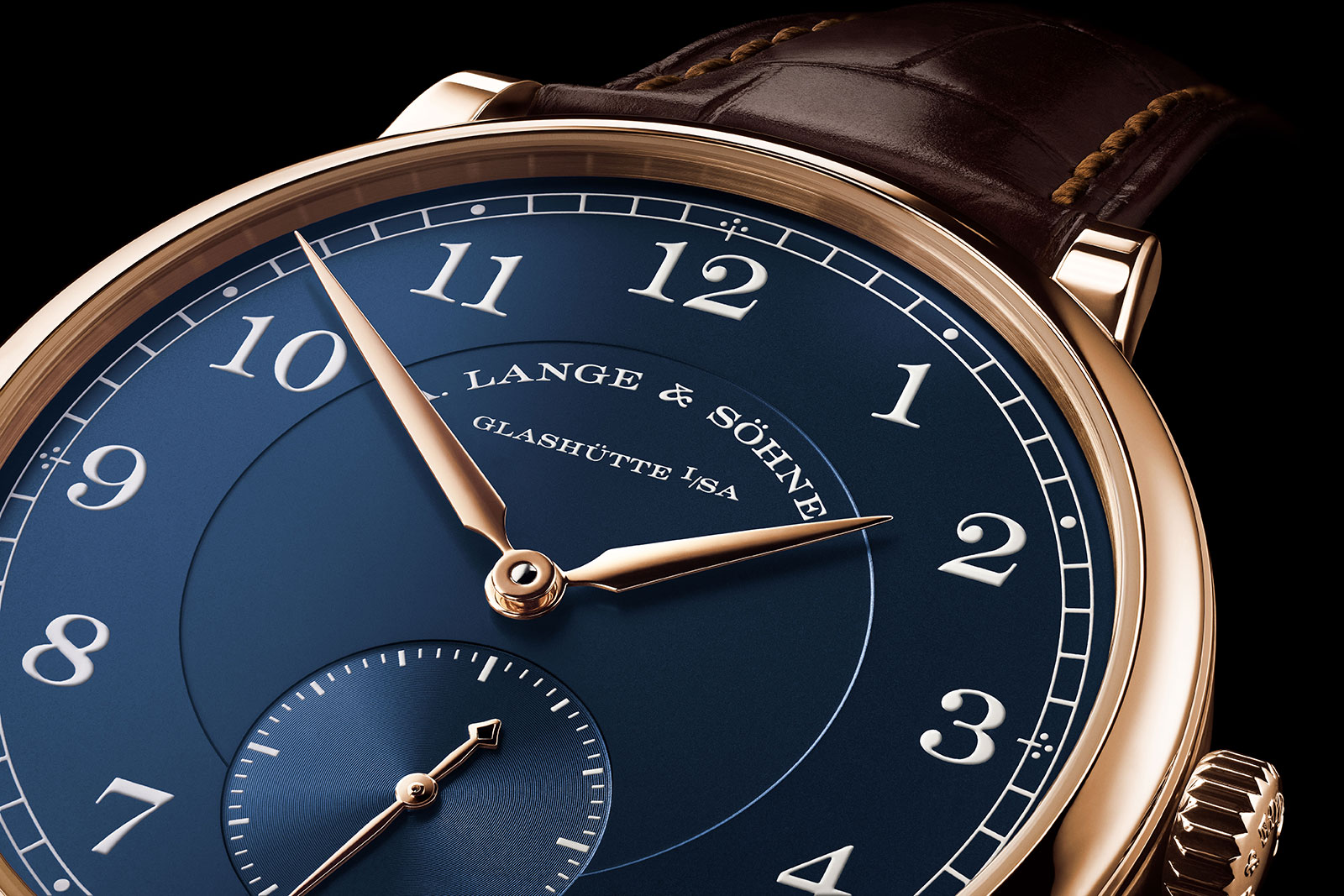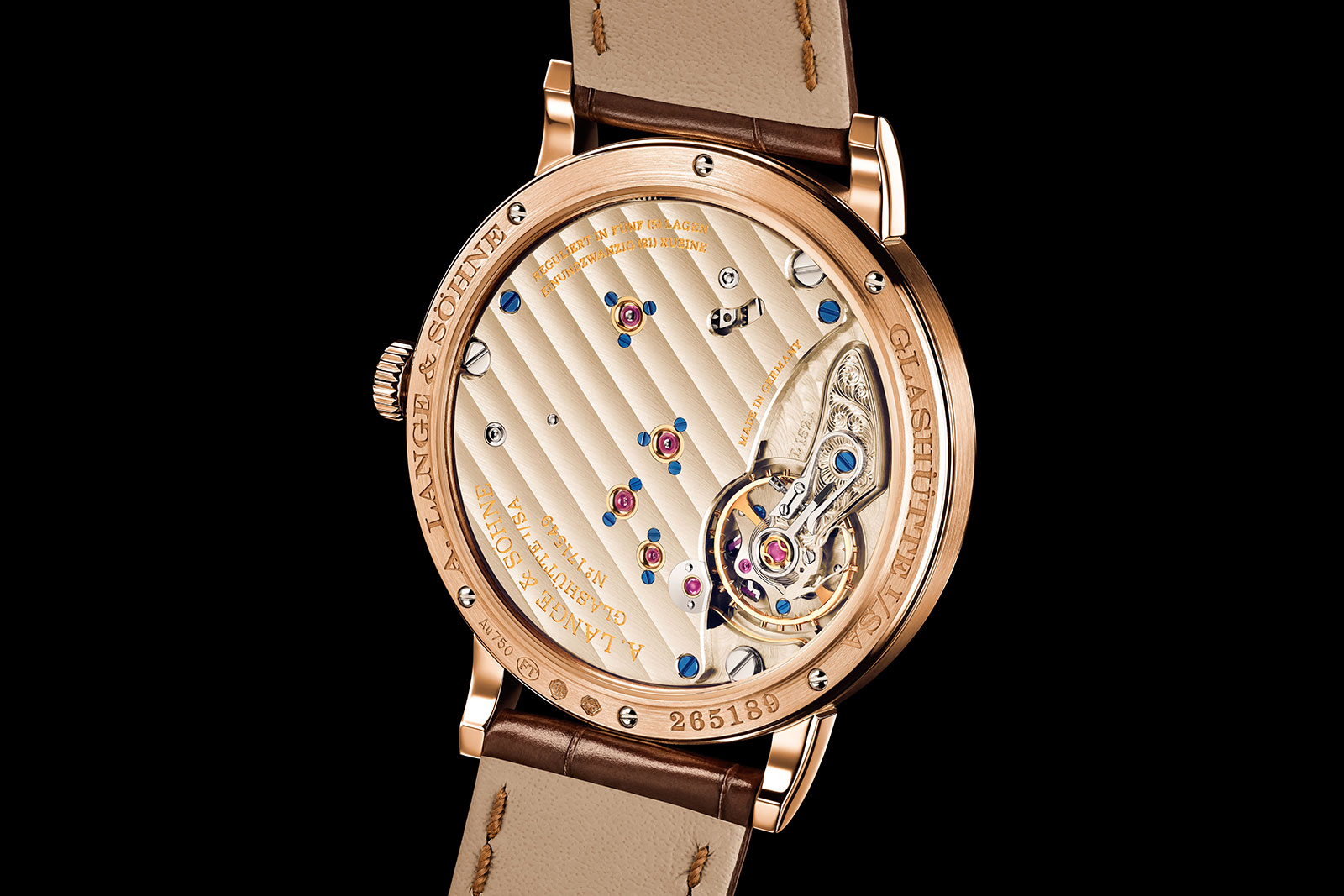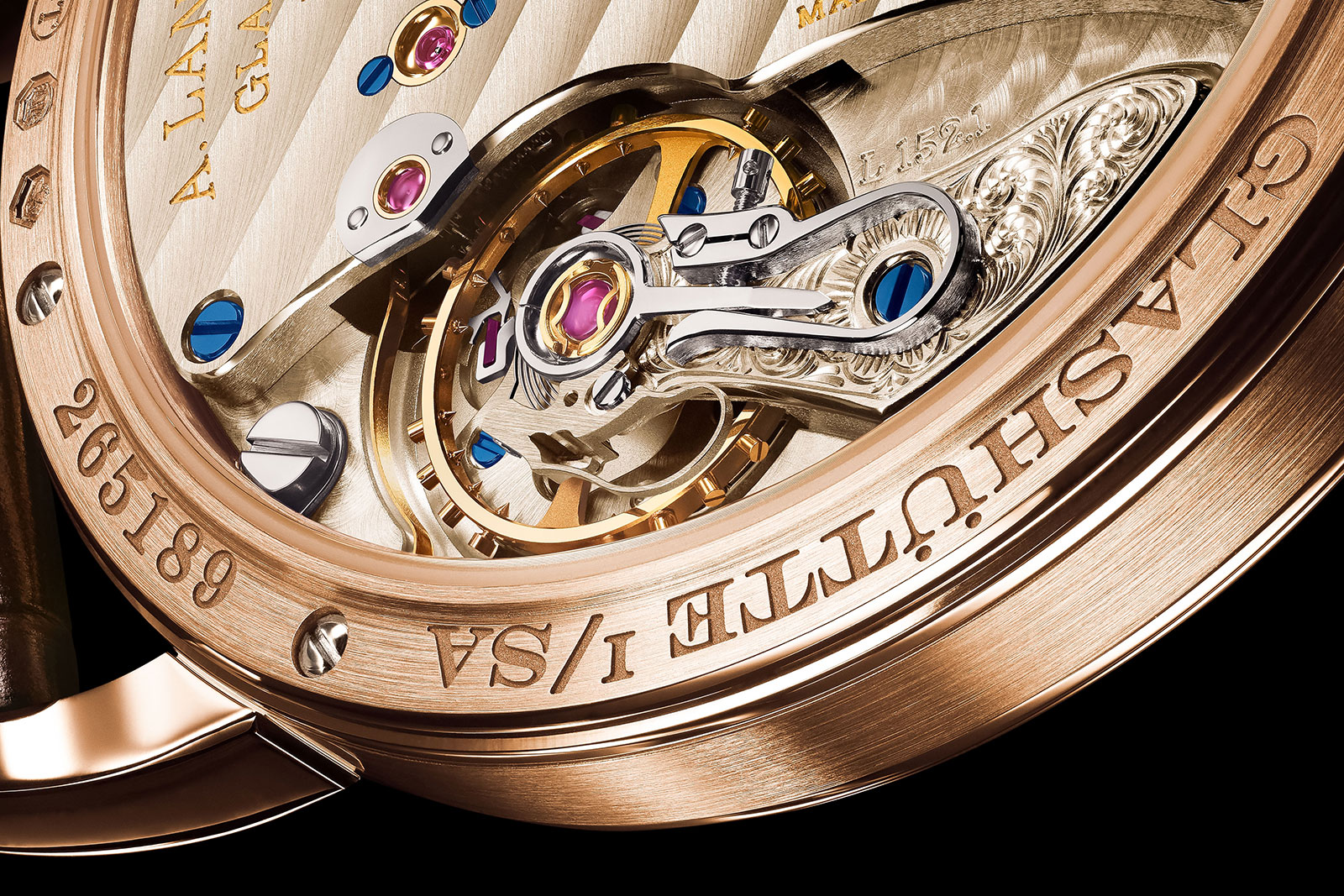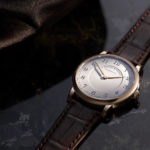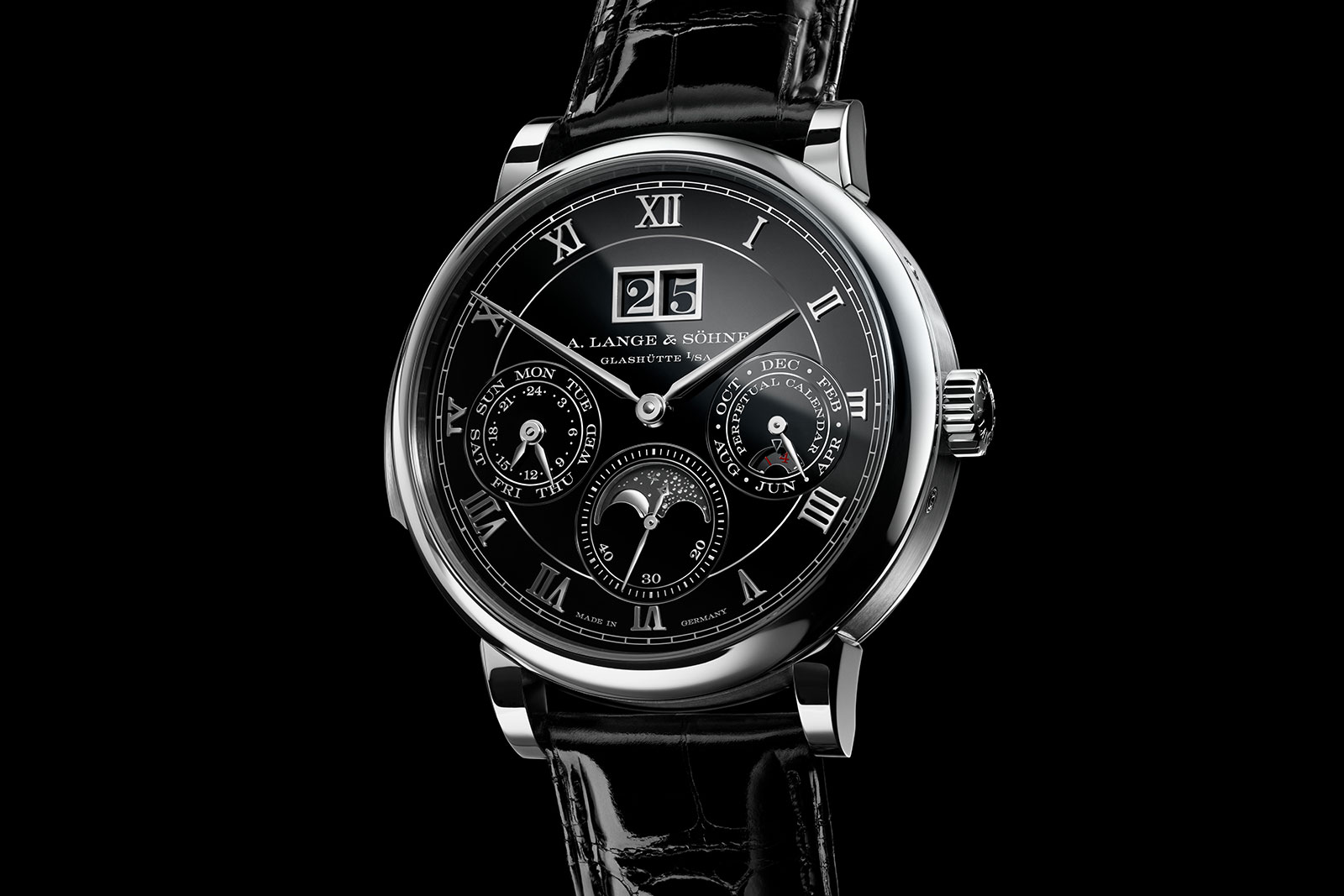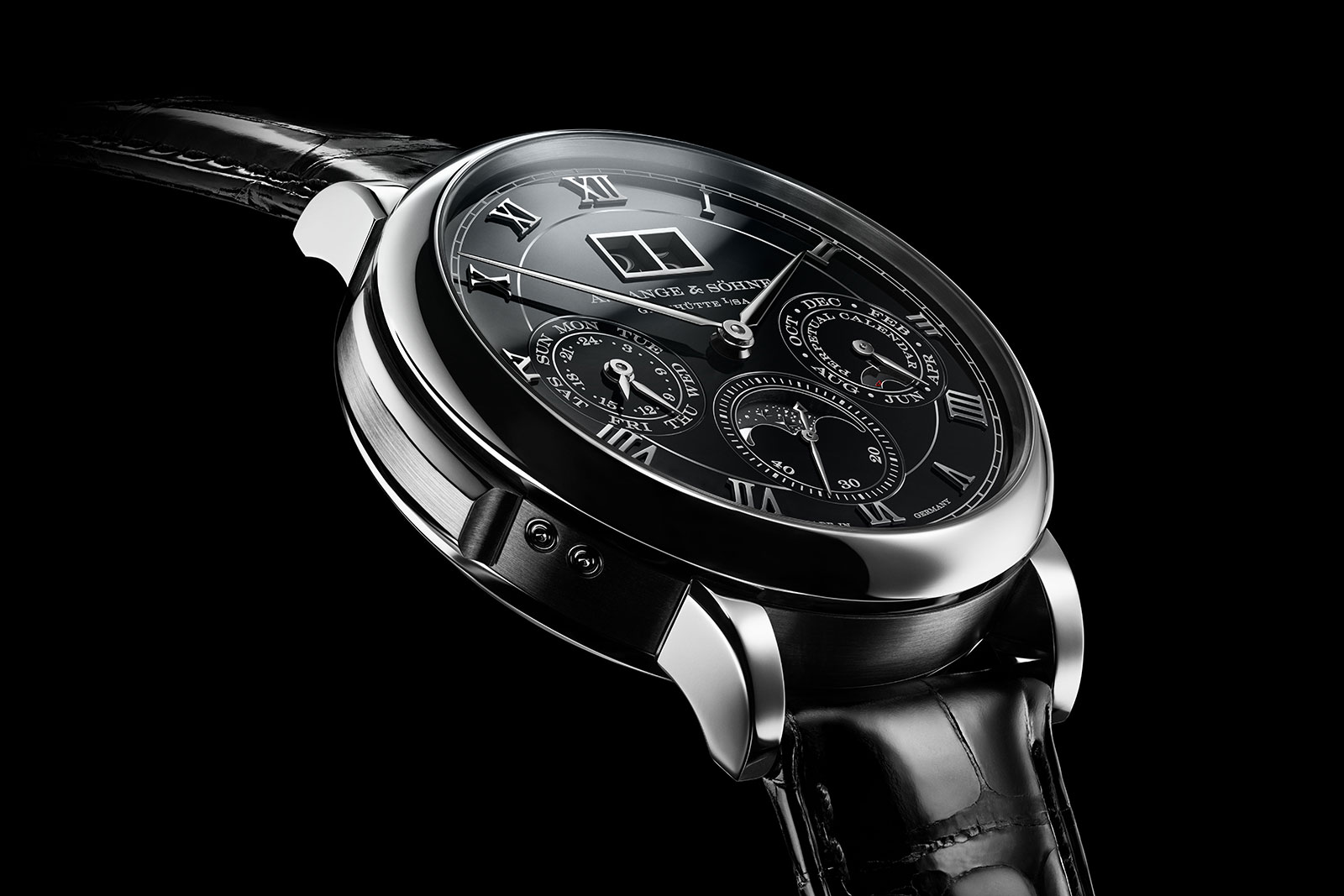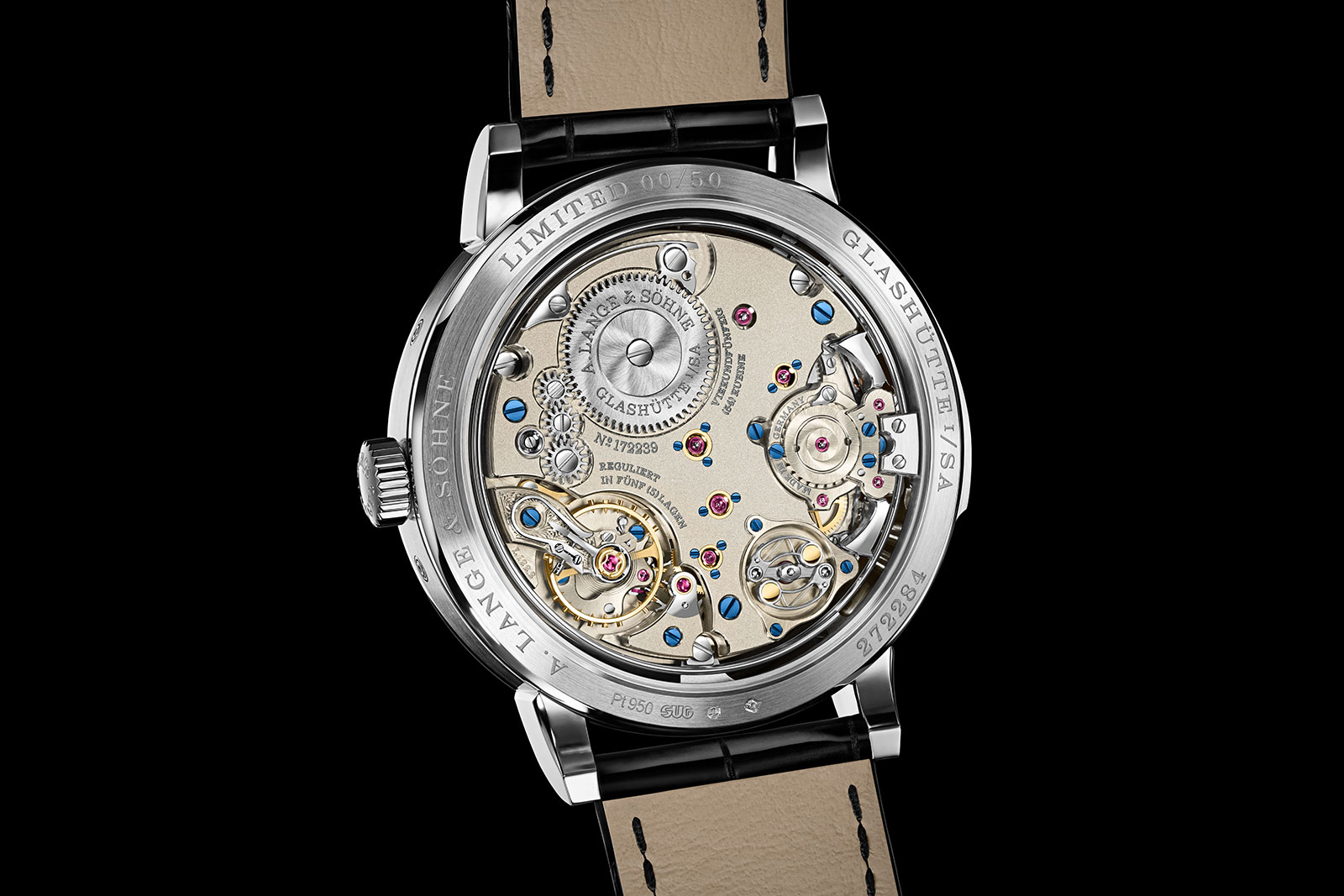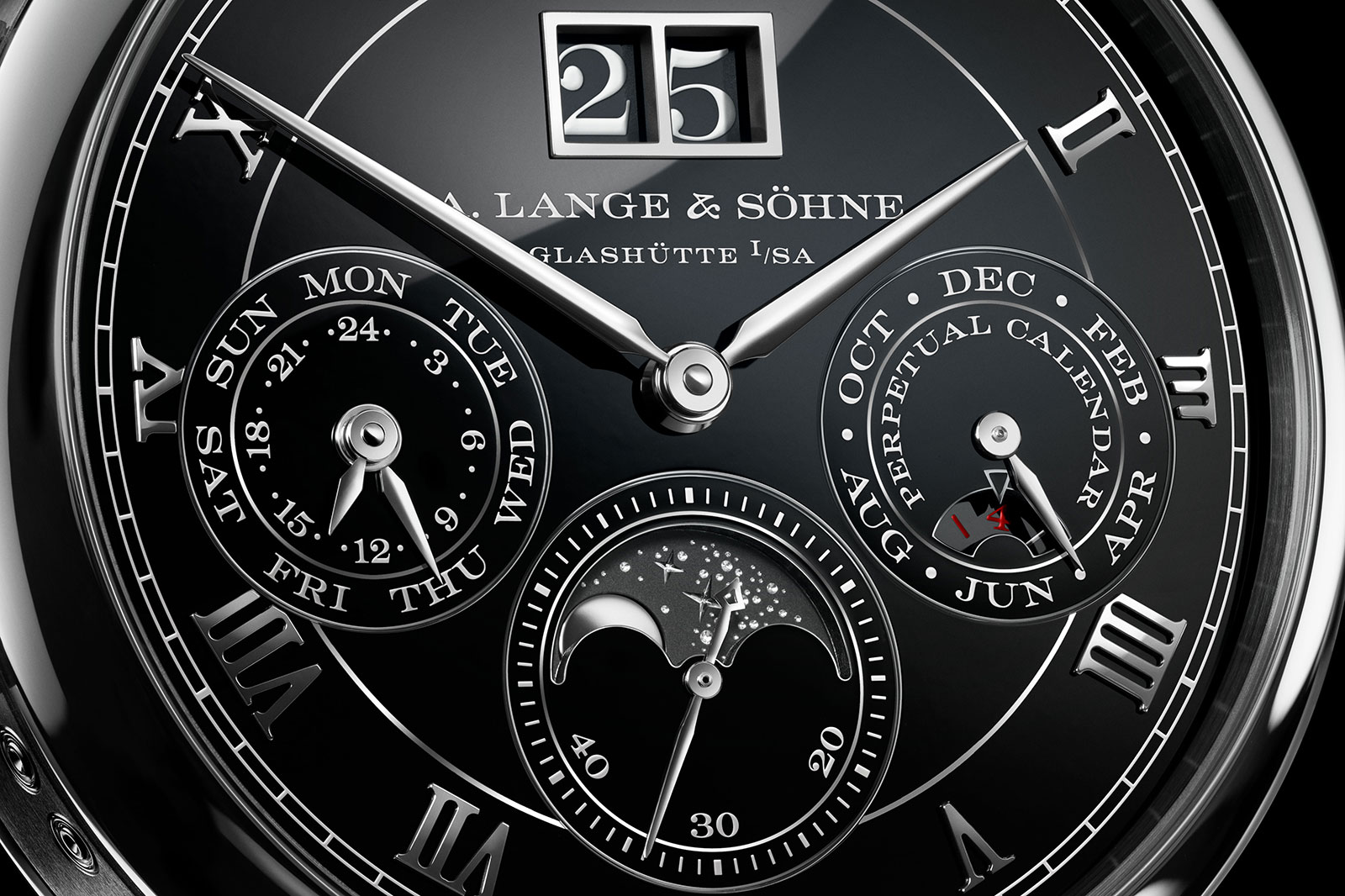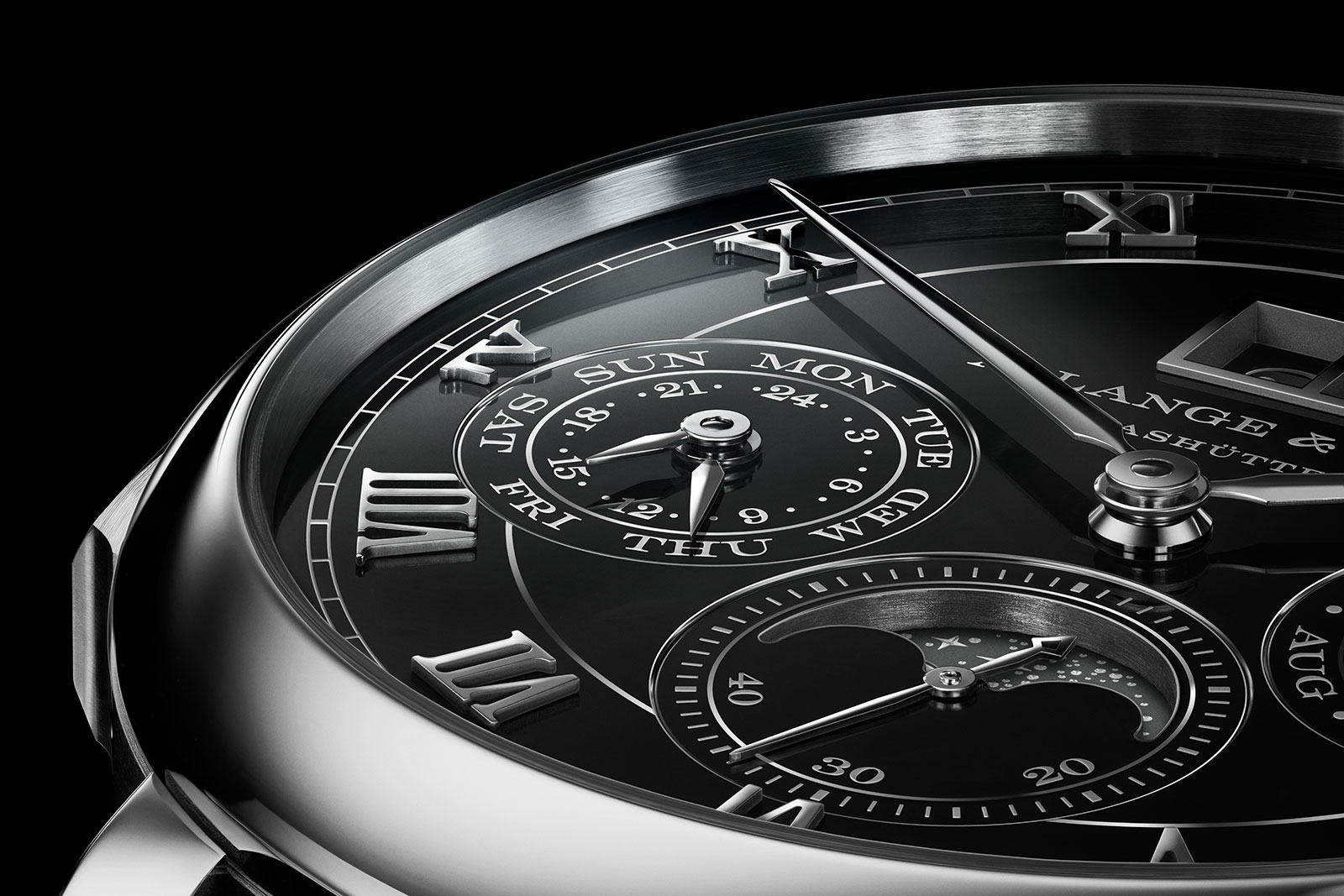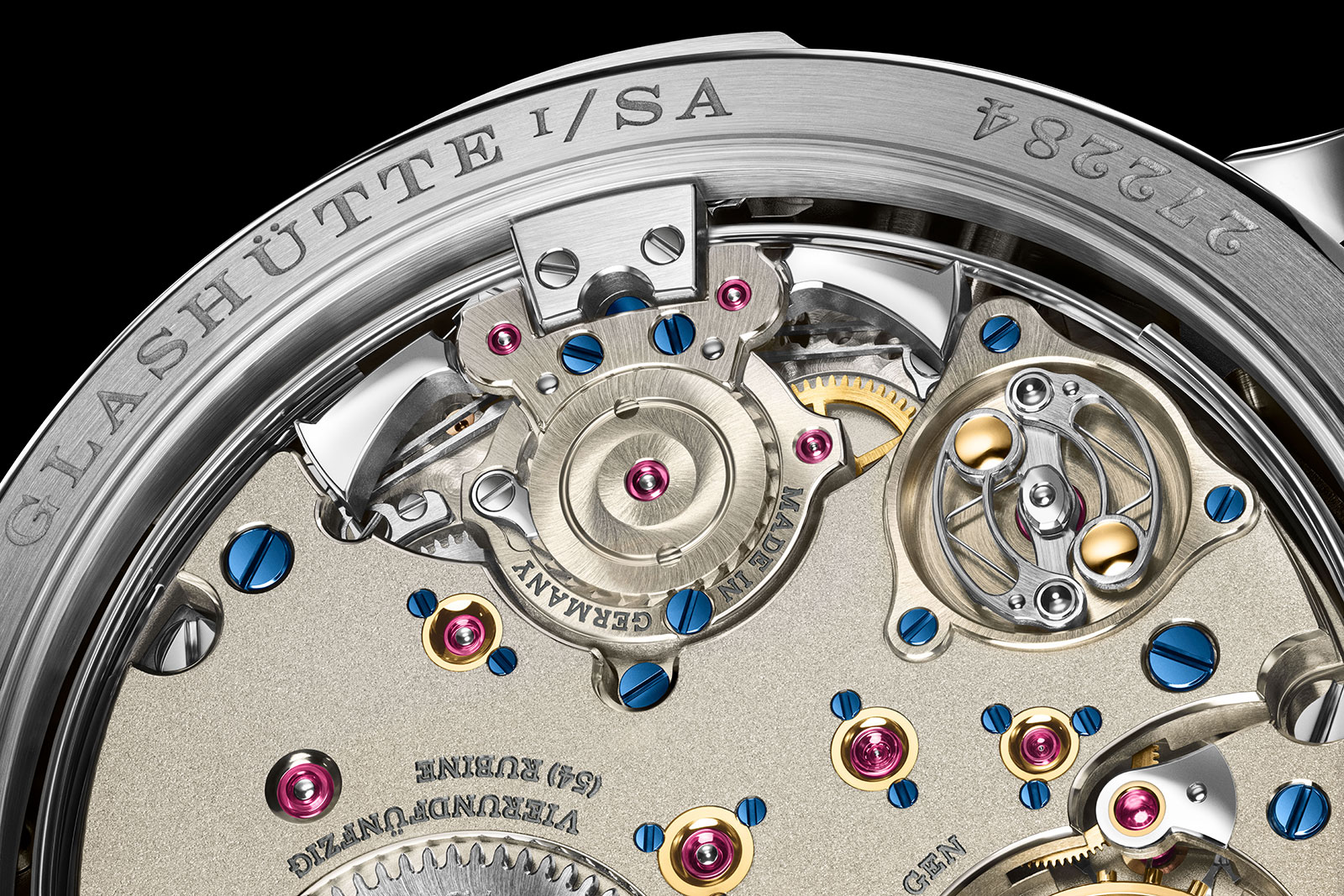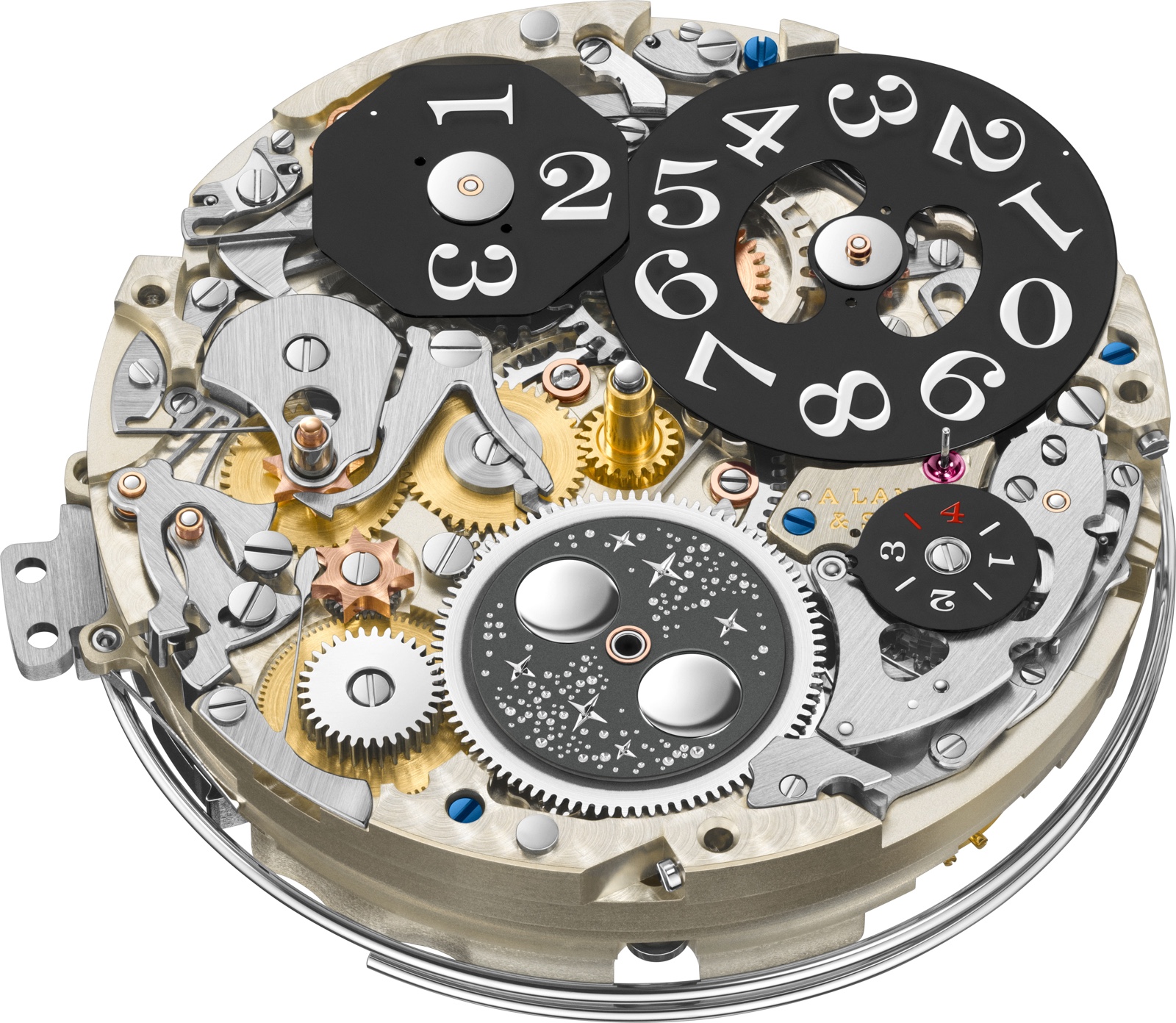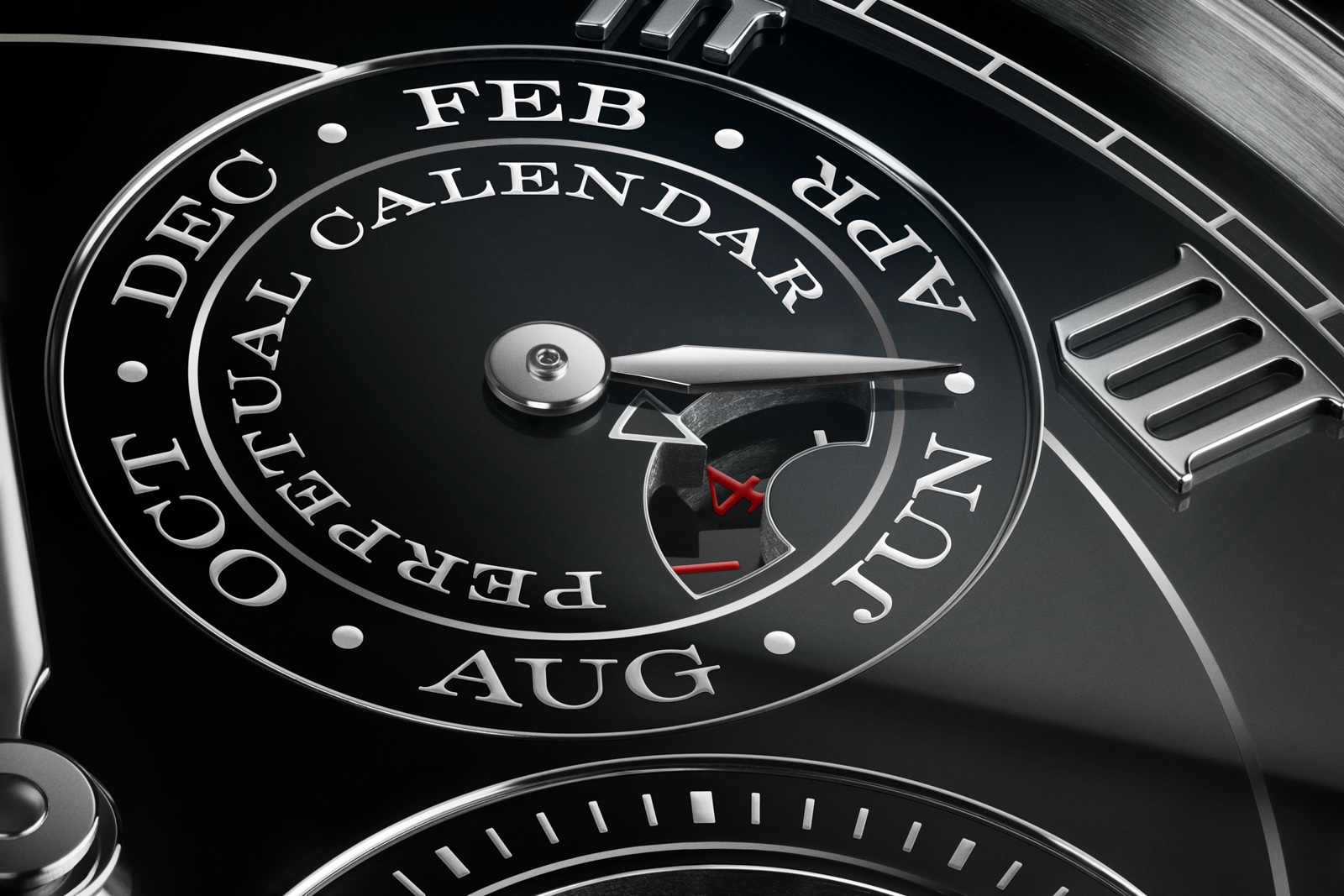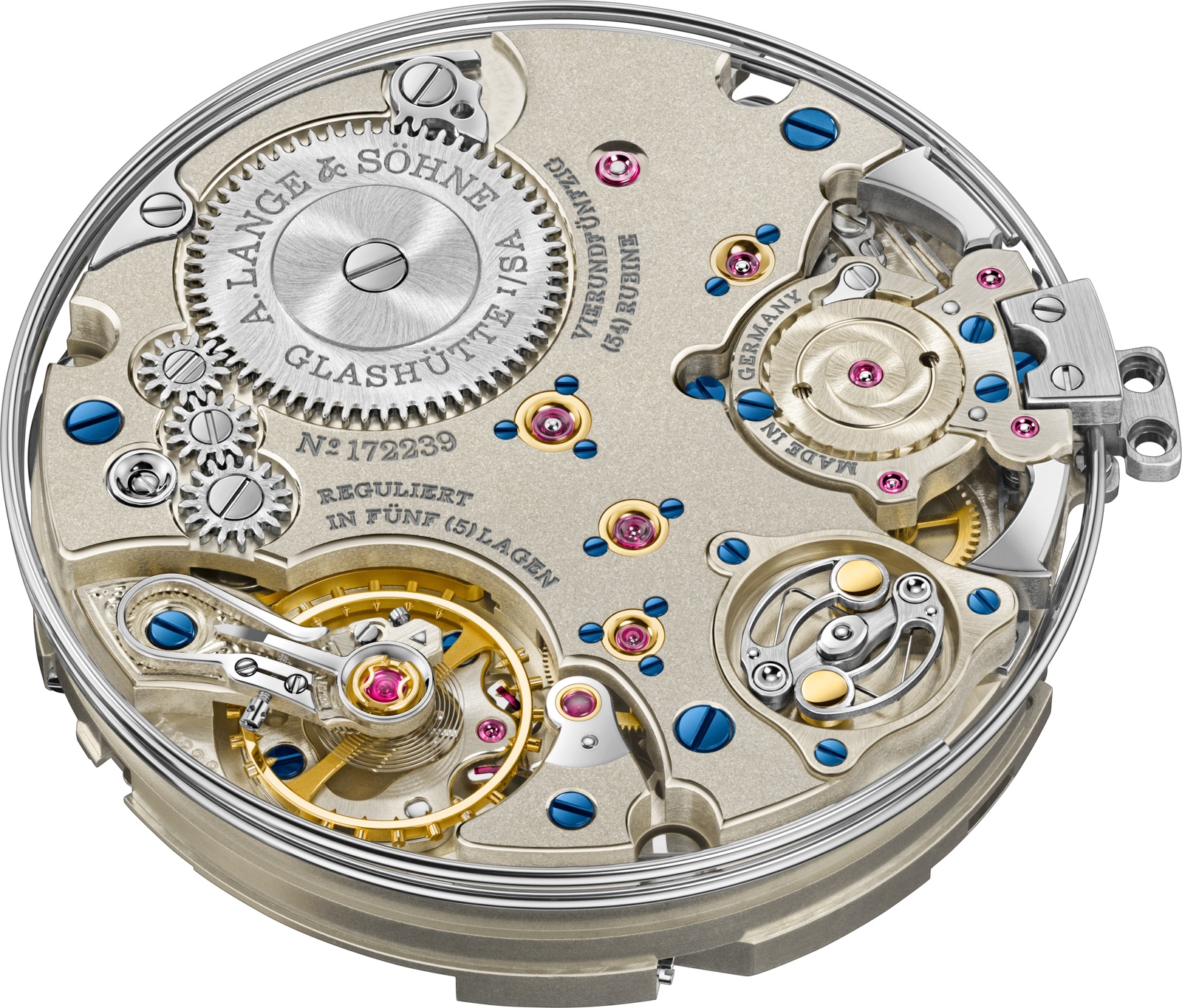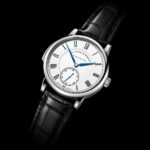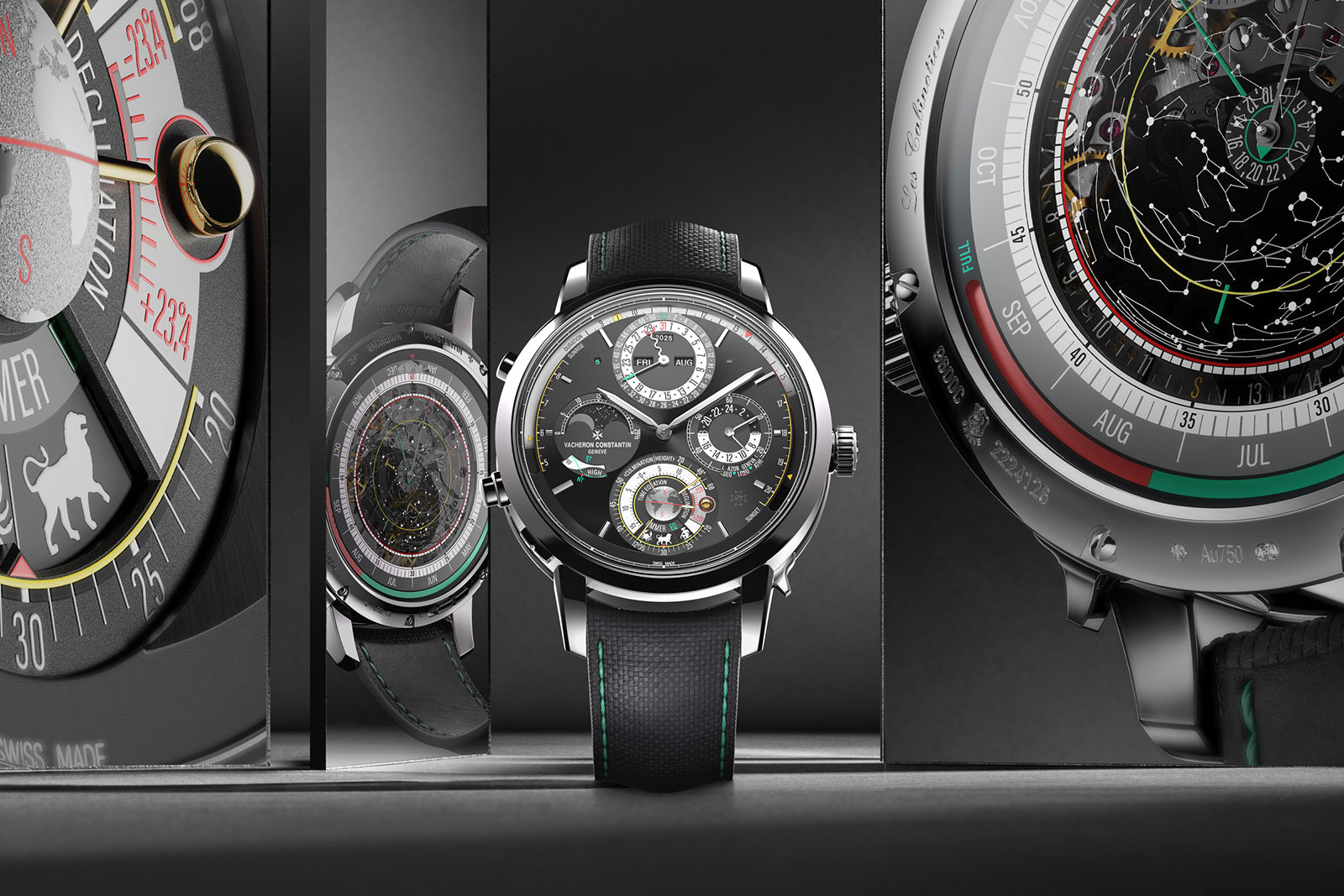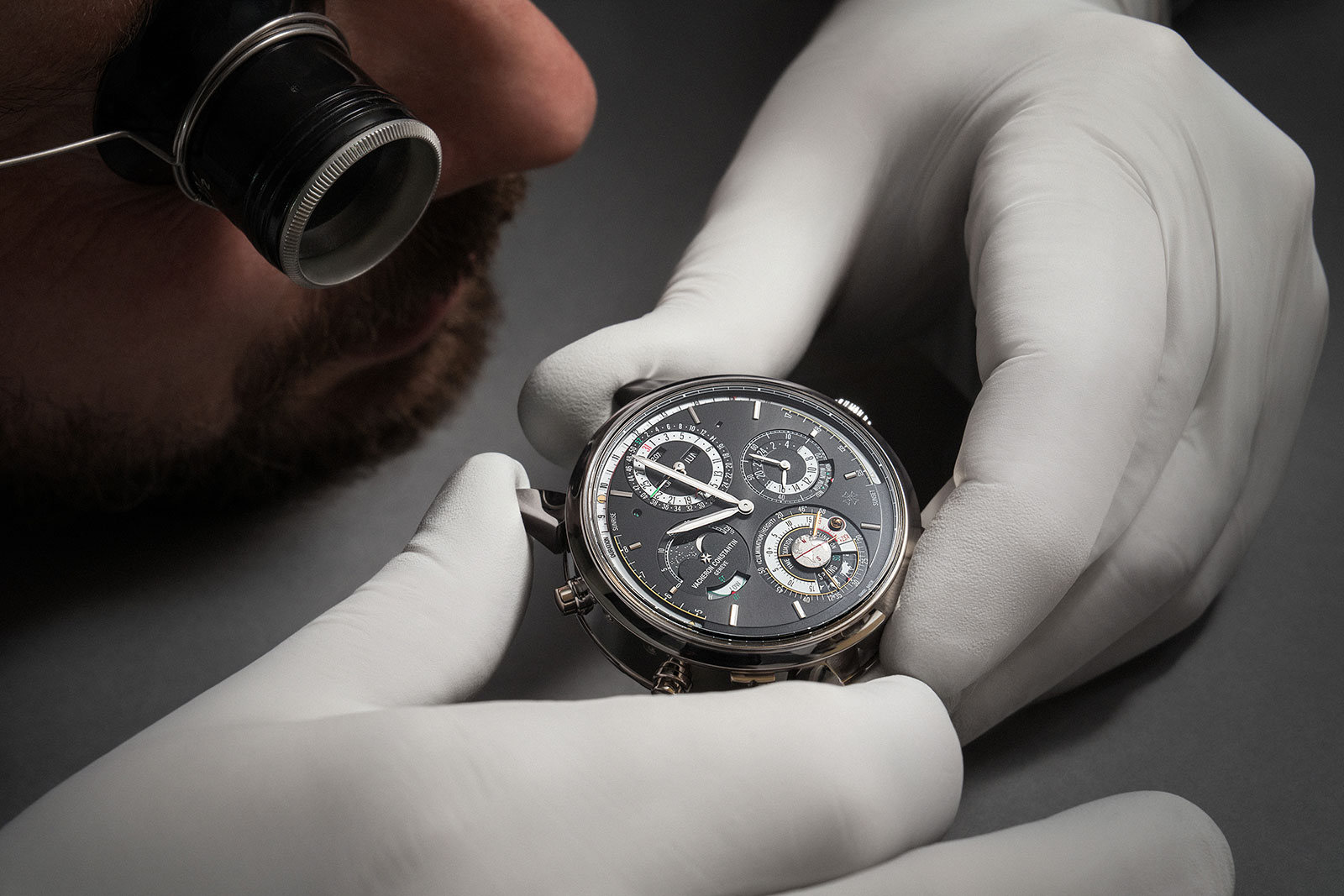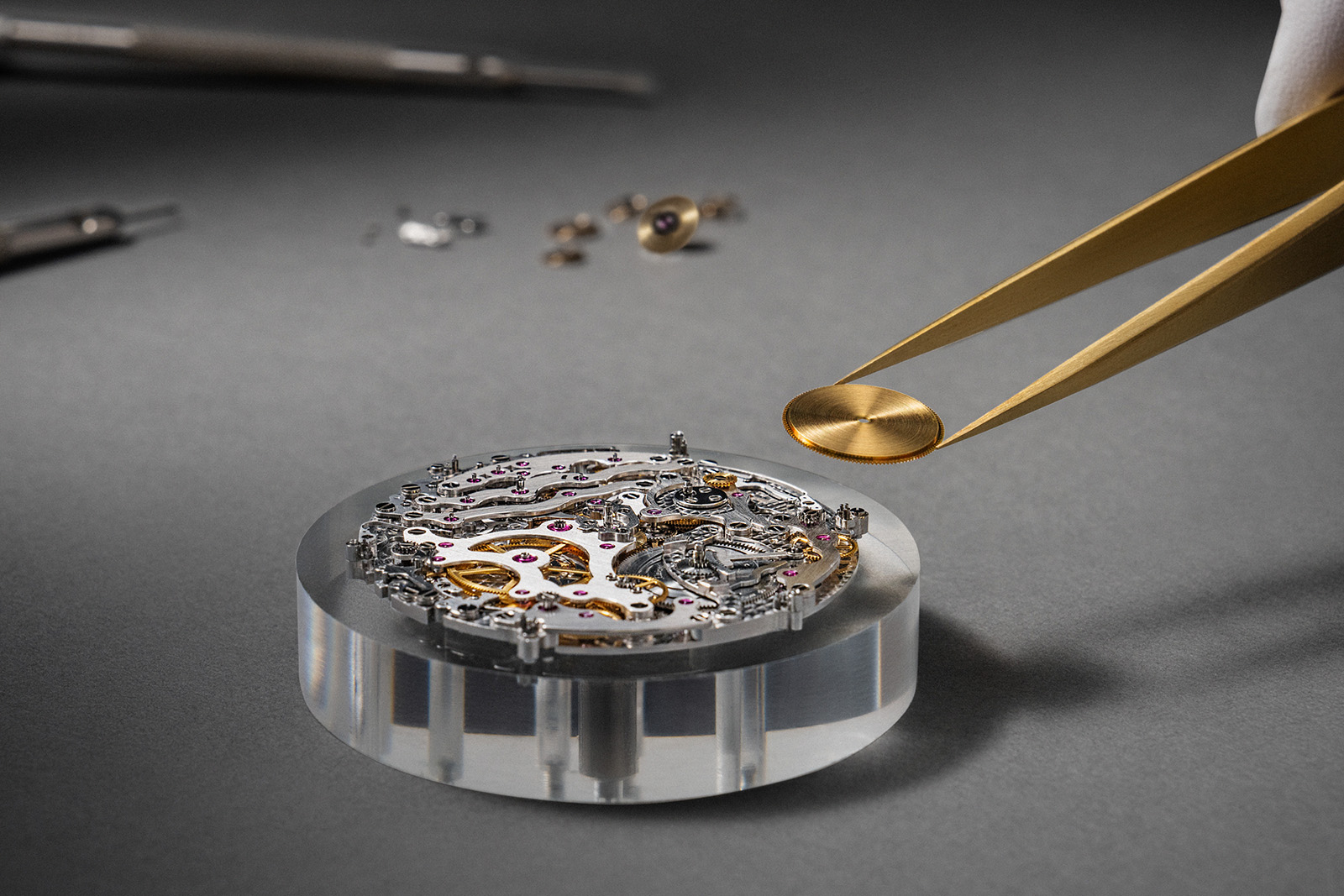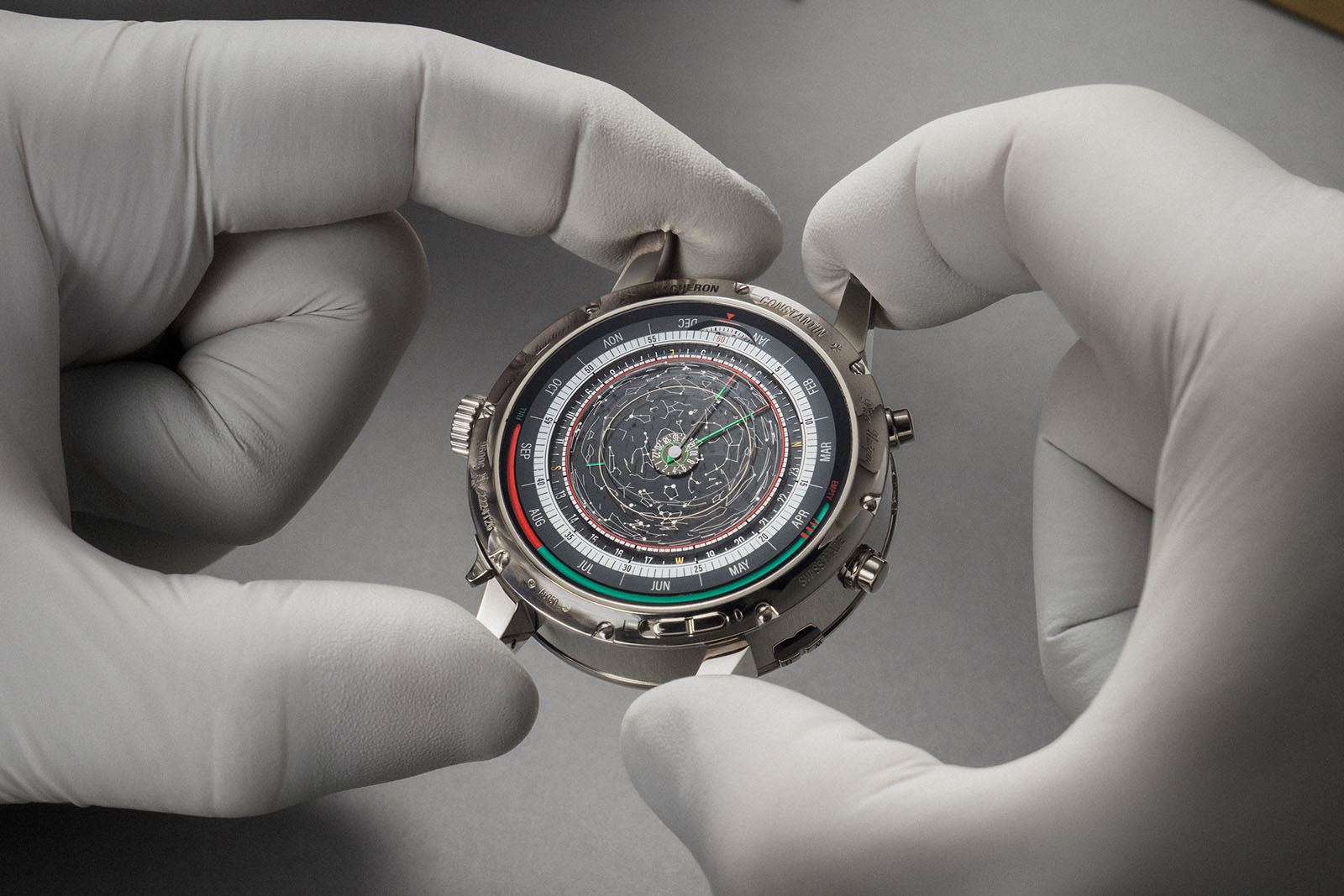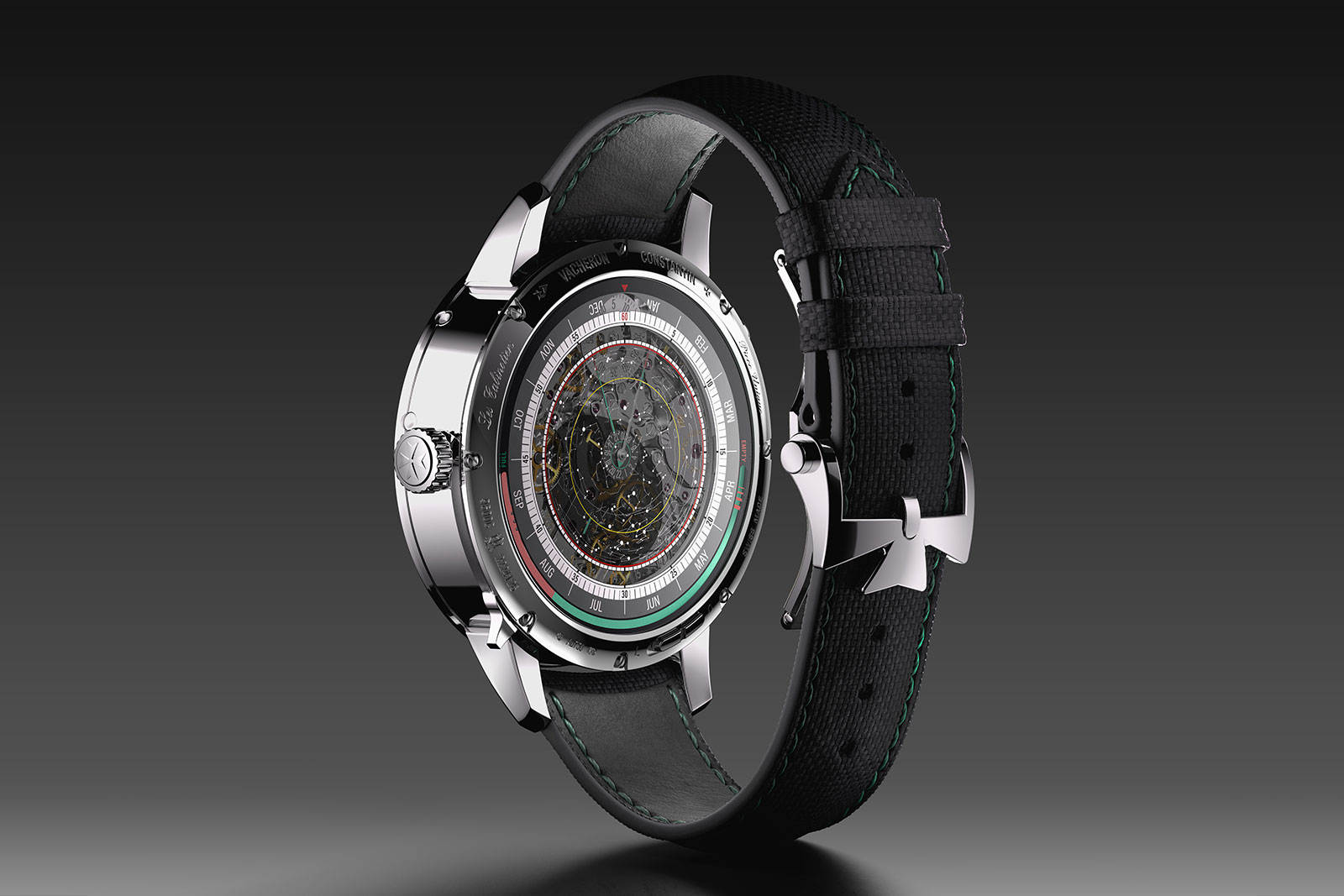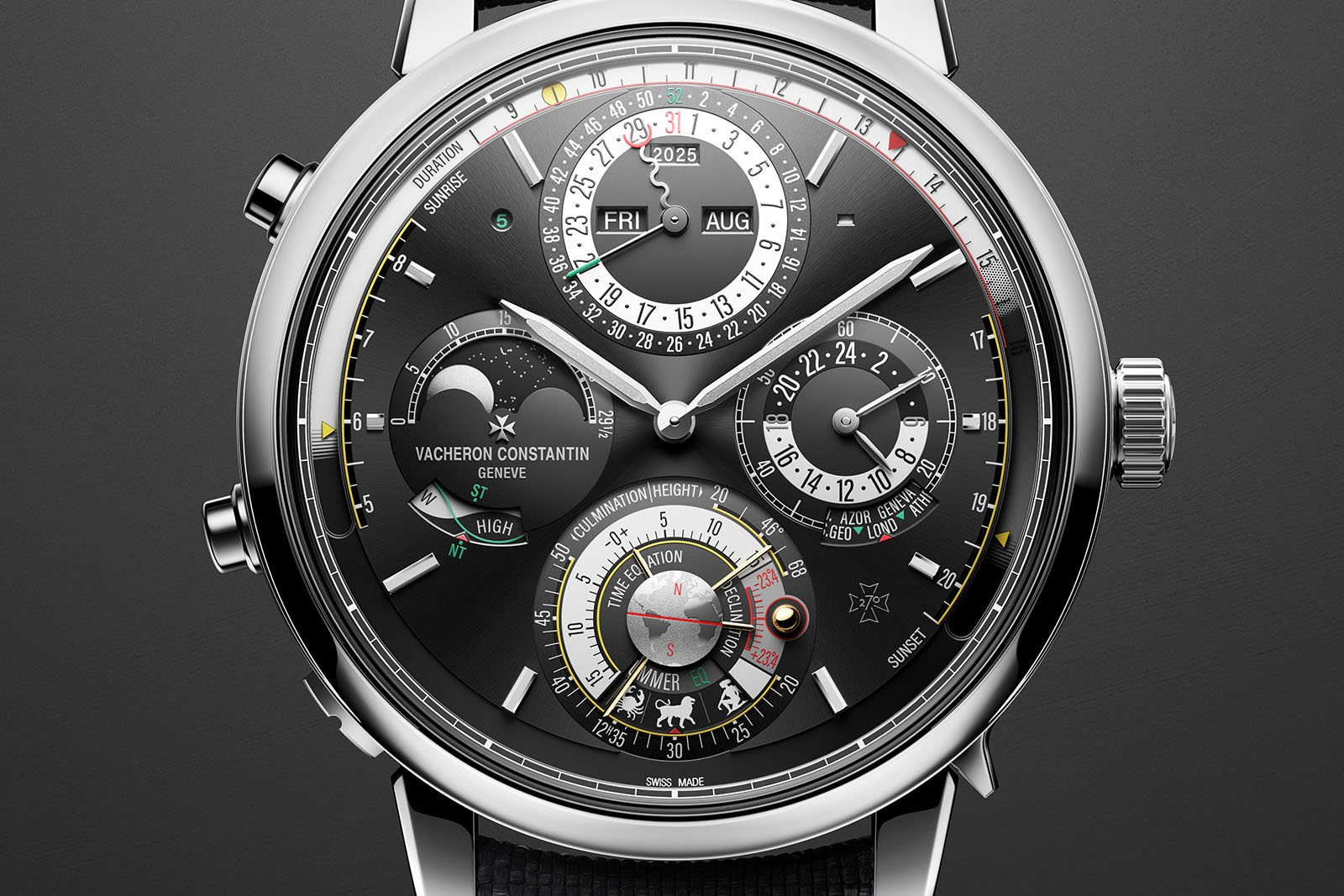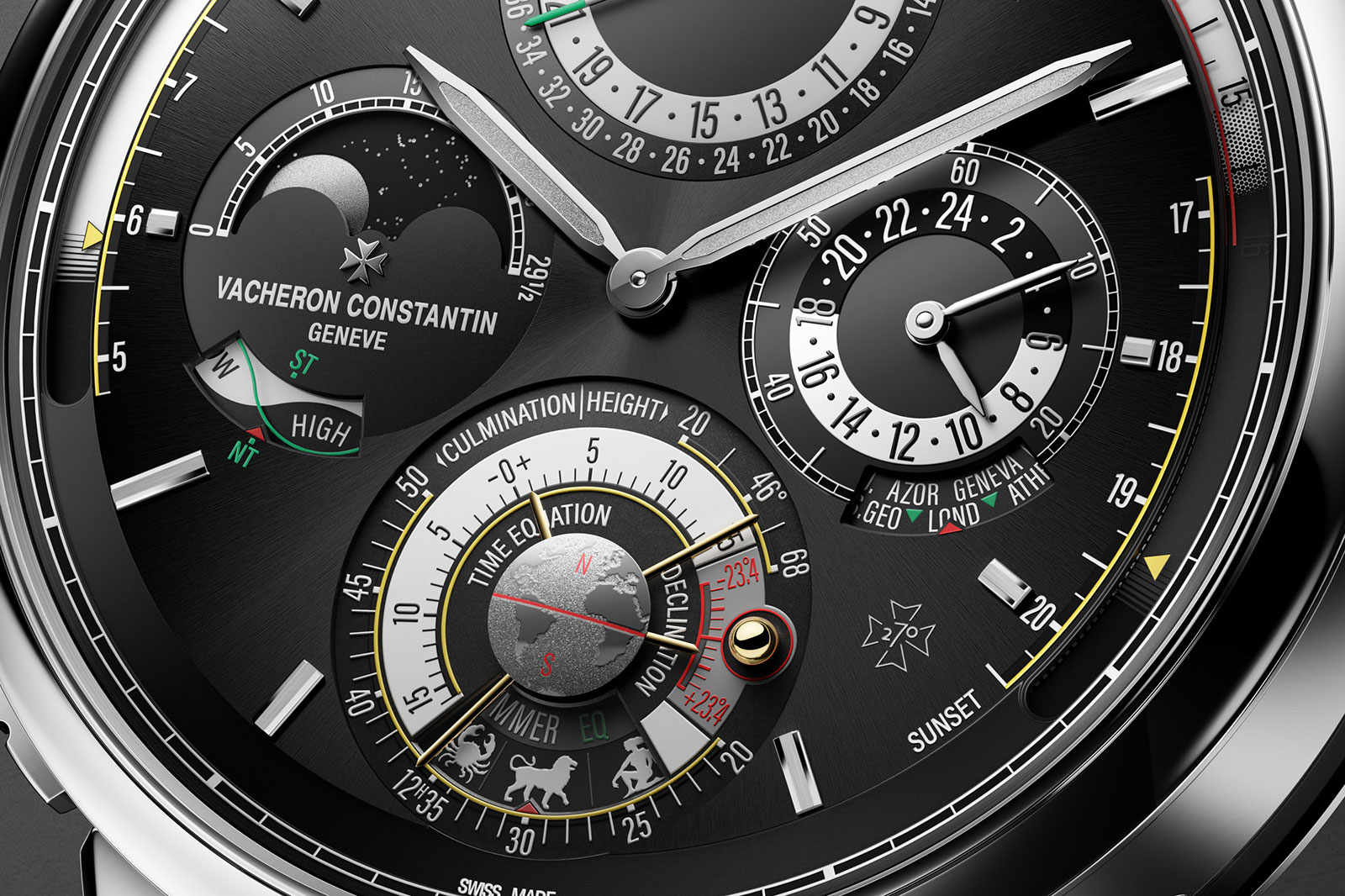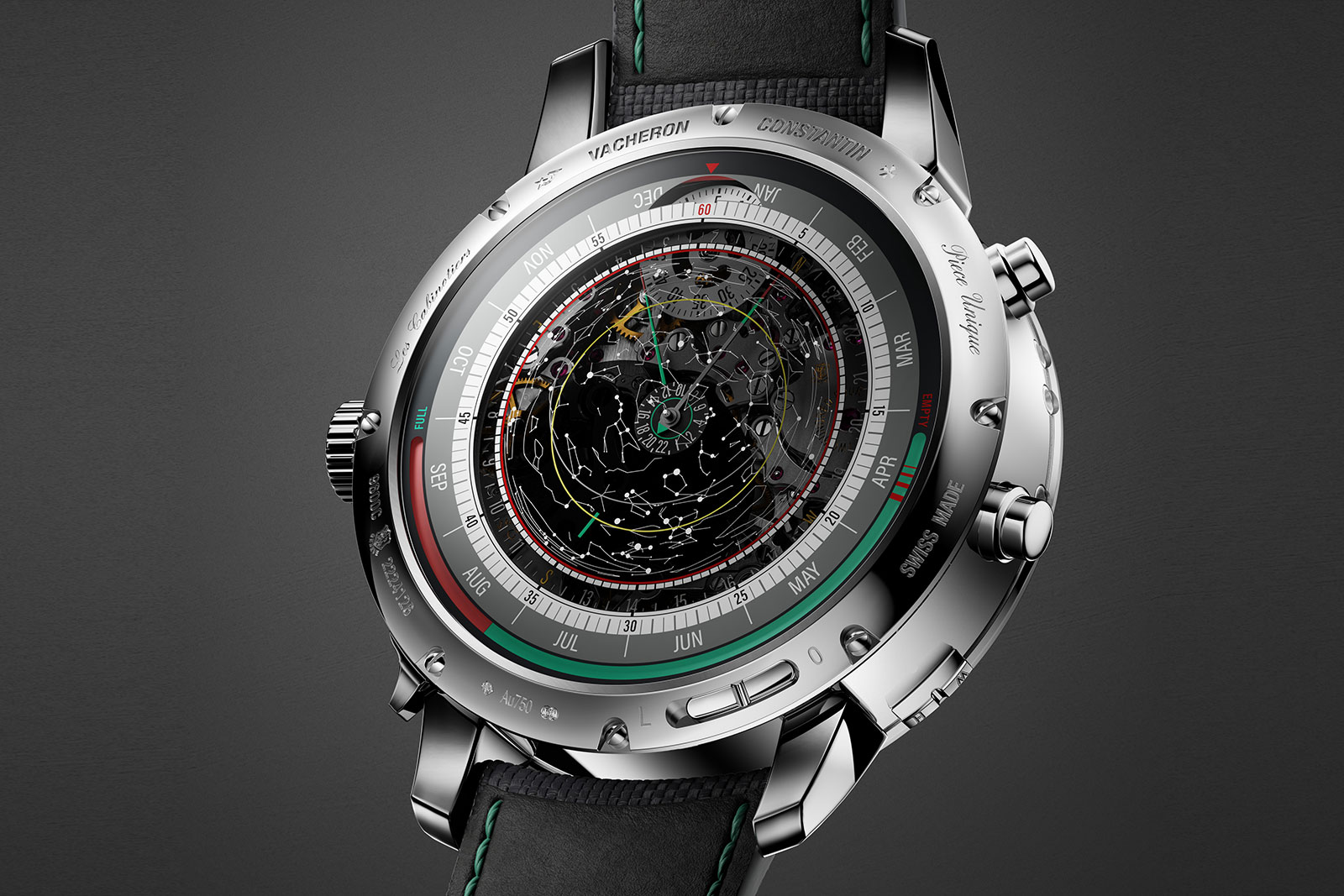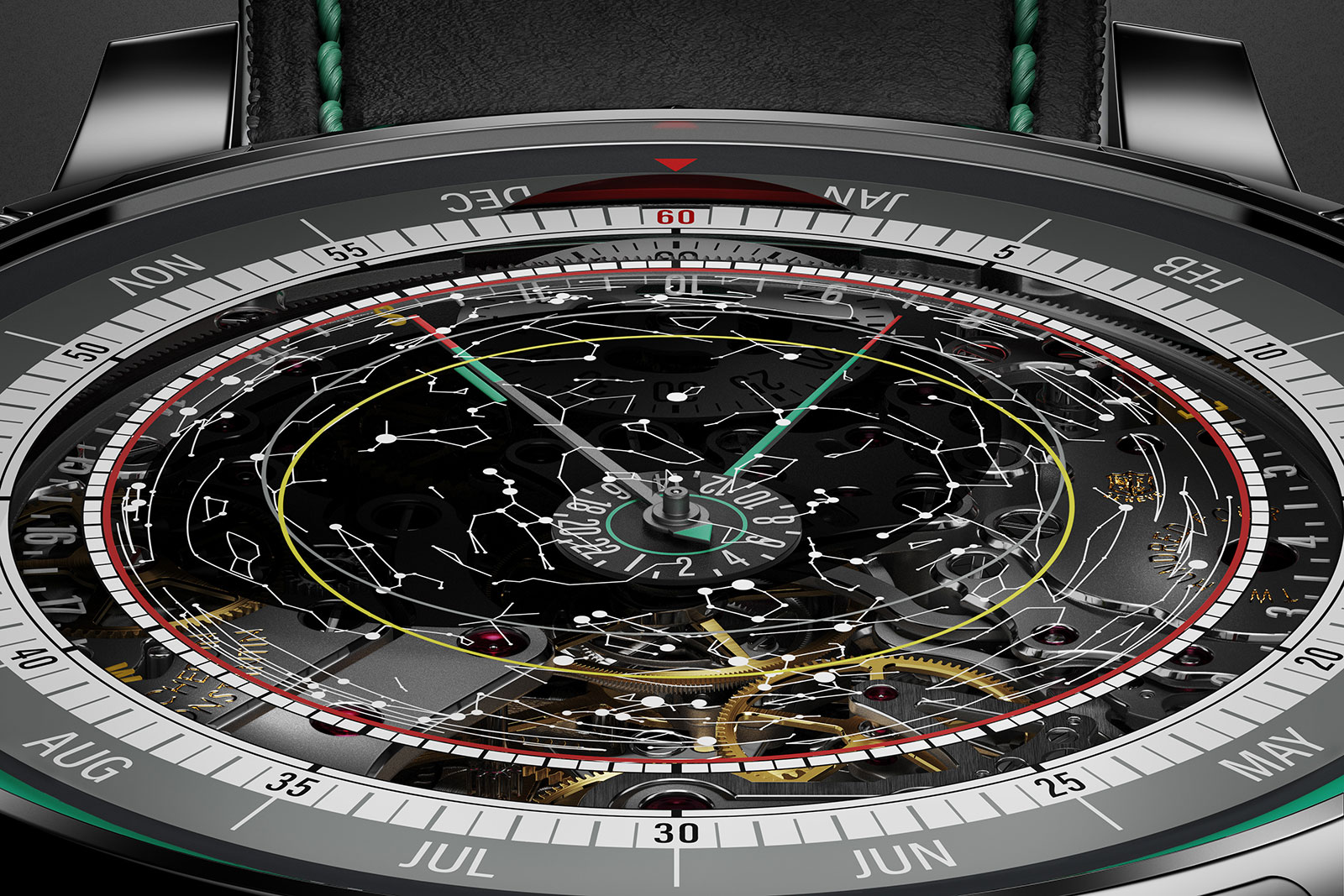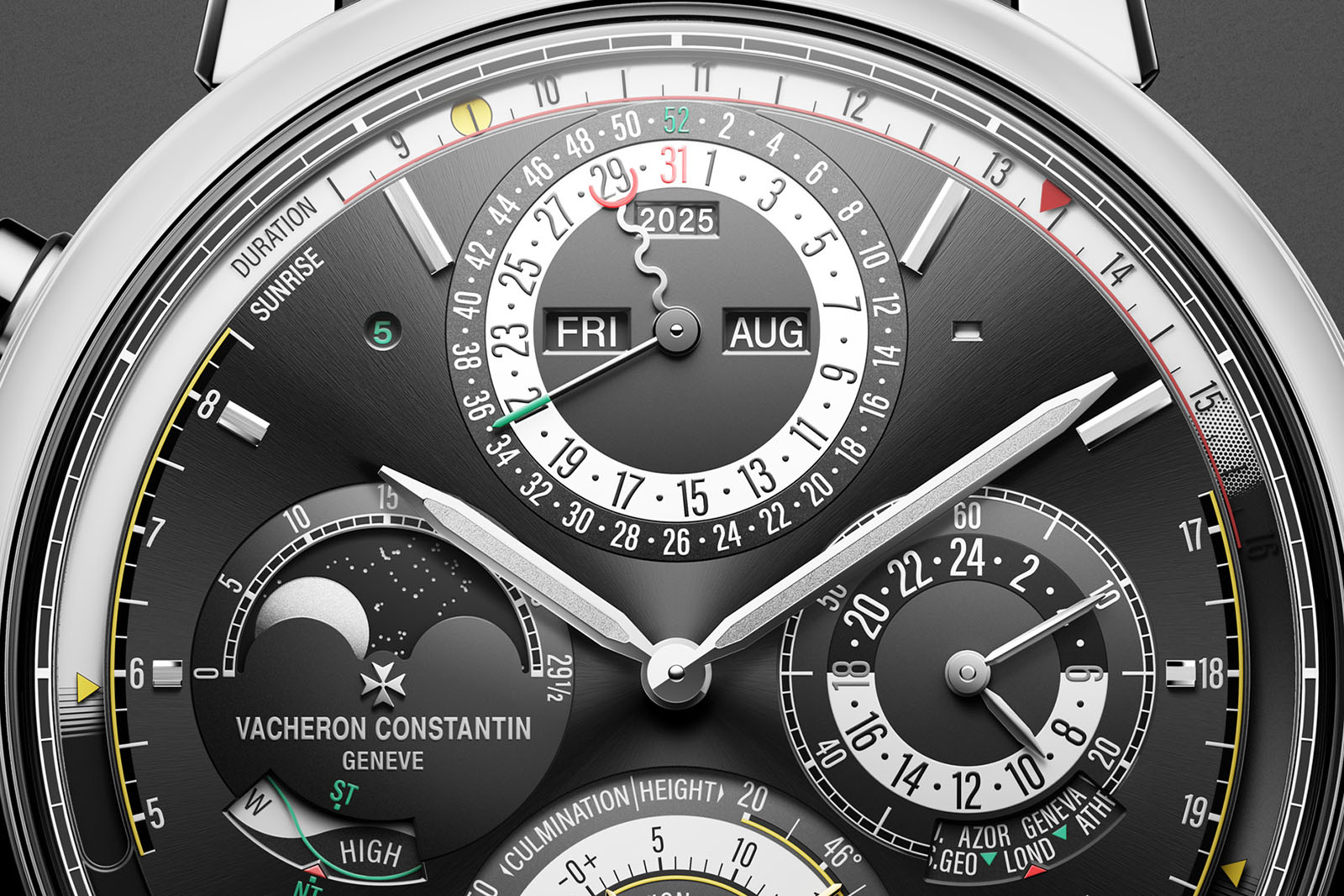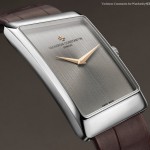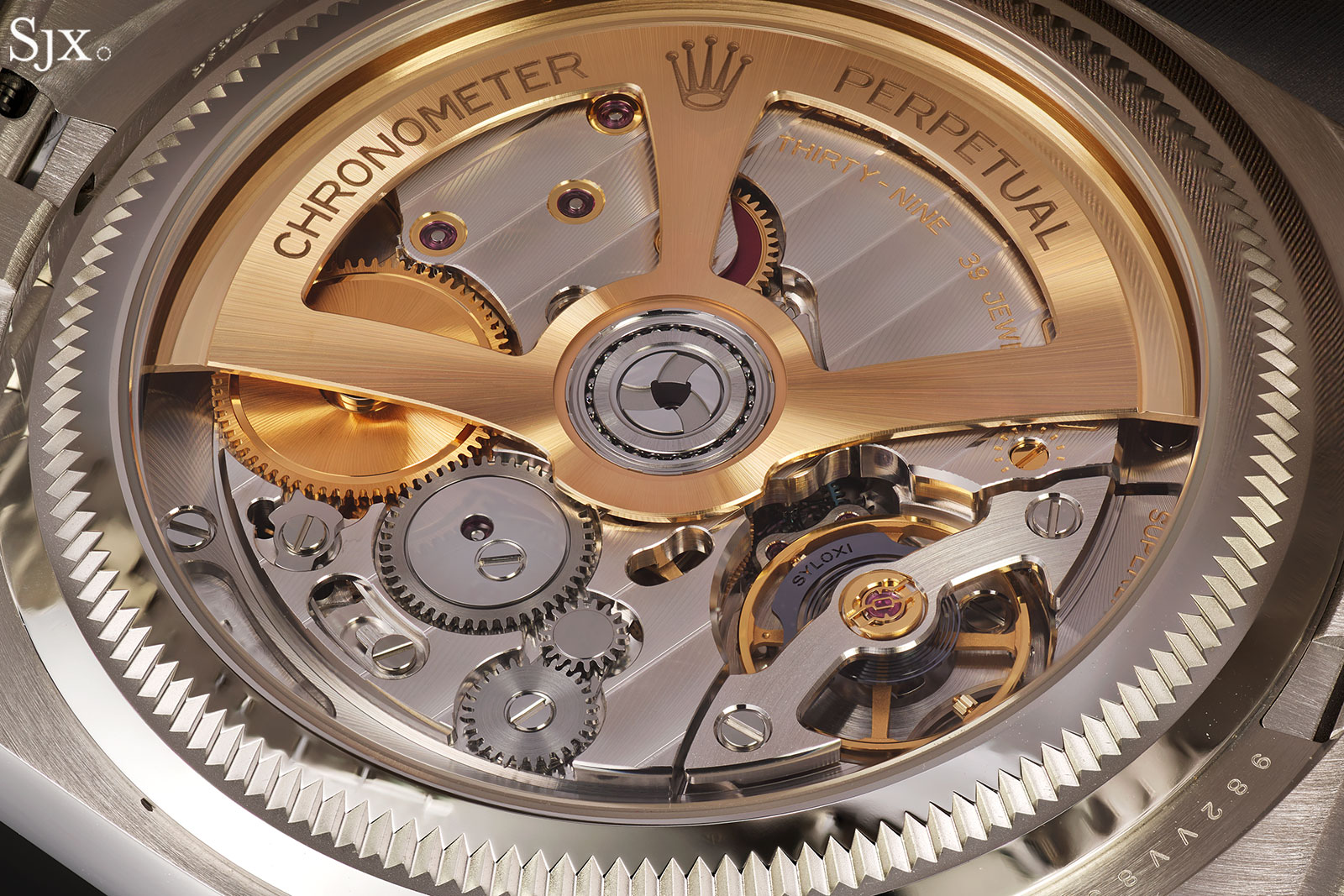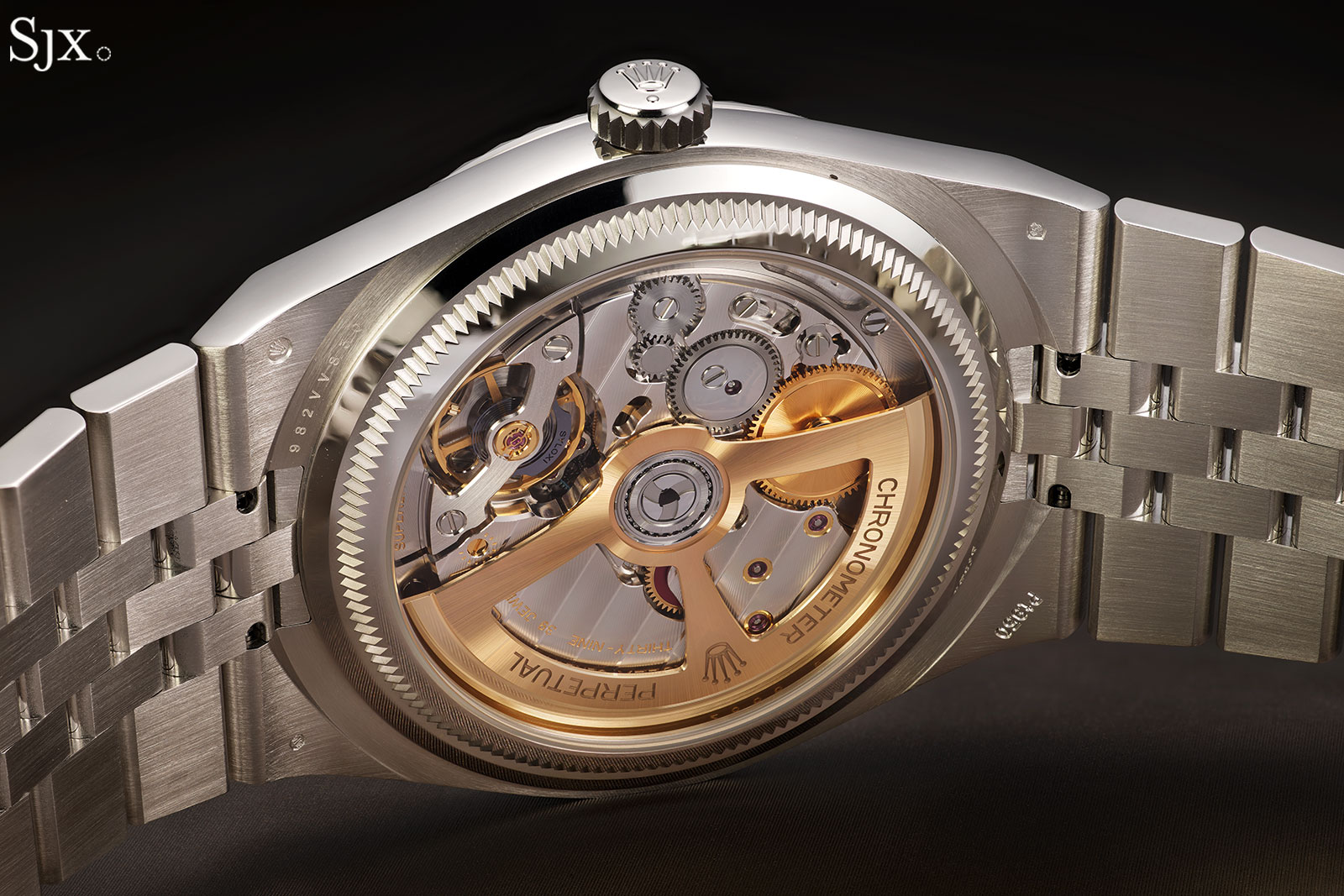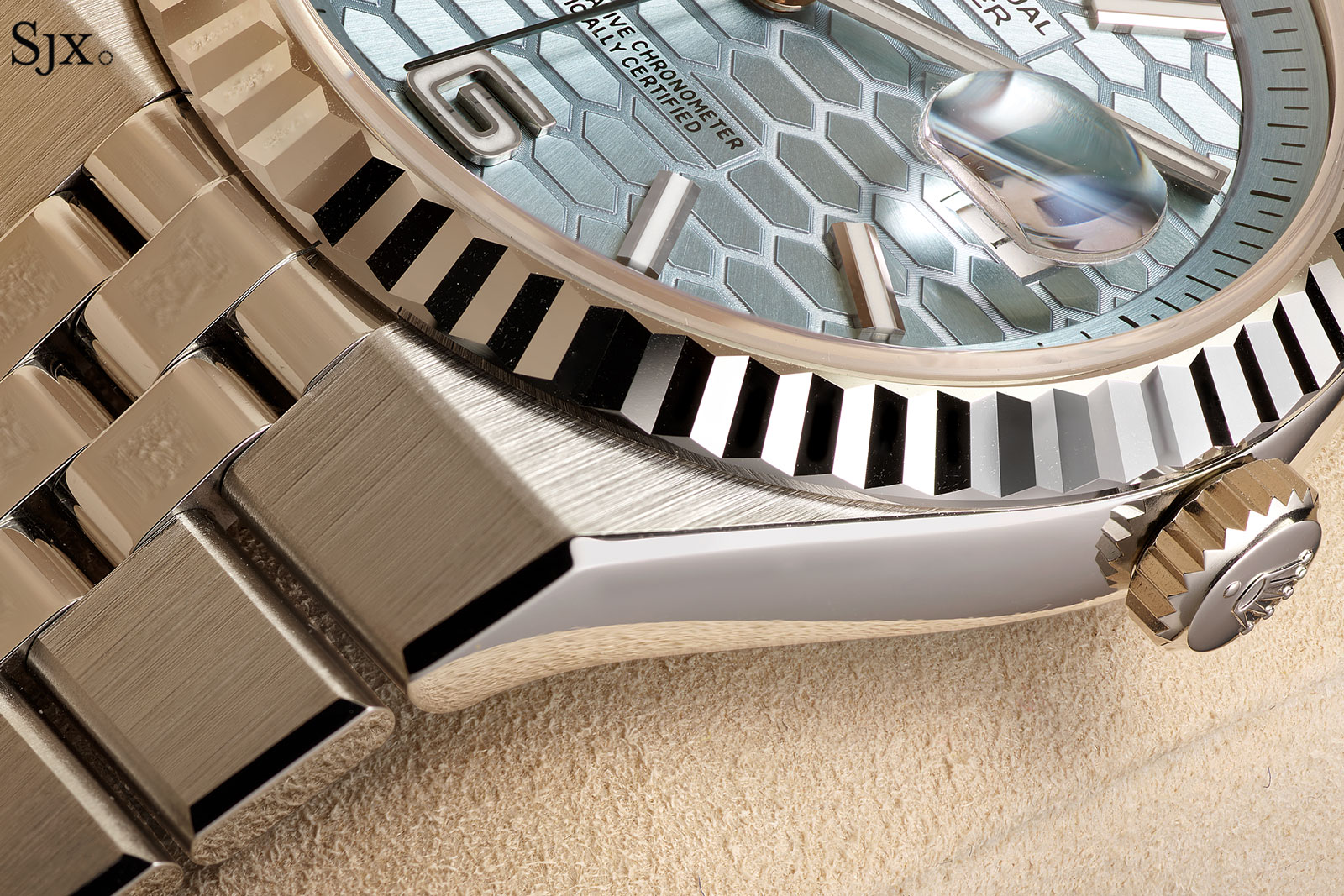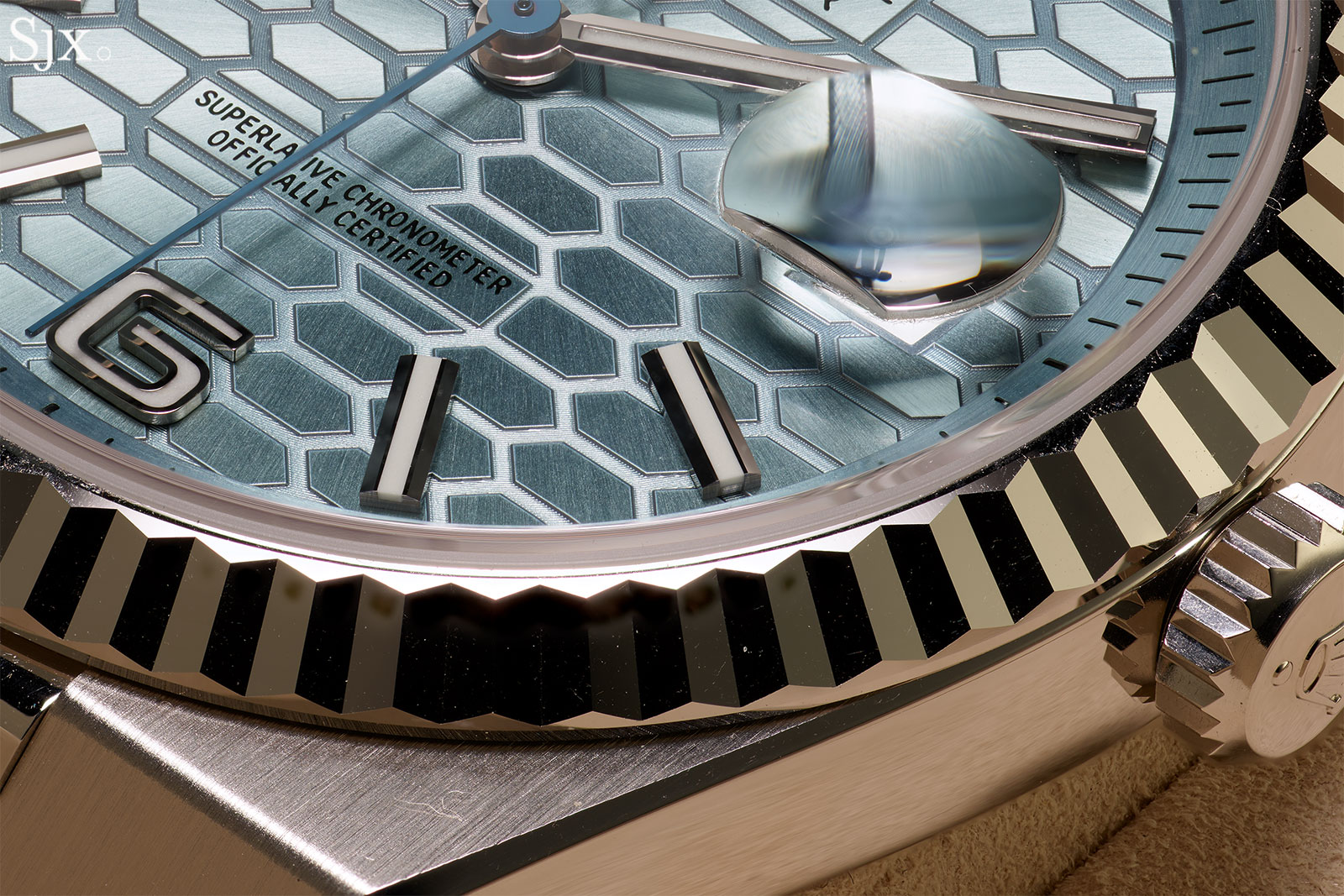Rolex has entered uncharted territory with the Land-Dweller, arguably the most advanced and radical creation from a hitherto conservative brand.
The Land-Dweller is significant, perhaps even game changing, not because of the integrated bracelet or patented solid lume, but because of the cal. 7135, a new calibre with an all-new double-wheel escapement known as Dynapulse and a ceramic balance staff.
(This story details the technical advances in the movement; for a review of the watch, check out the accompanying story.)

The Land-Dweller 40 mm in platinum
The fundamentals
Why is it significant, or even game changing?
The cal. 7135 is the first in-house, serial production Rolex movement that is high frequency, beating at 5 Hz or 36,000 beats per hour. All things being equal, a higher frequency promises superior timekeeping.
Despite the higher frequency, the cal. 7135 still has a 66-hour power reserve. That’s thanks in part to the Dynapulse escapement which is 30% more efficient than a conventional Swiss lever escapement, while occupying essentially the same volume of space.

The balance assembly of the cal. 7135
Dynapulse is one of several innovations that make the cal. 7135 a landmark, especially since it will be produced at scale. While Rolex has traditionally been associated with incremental innovation, the cal. 7135 is a revolution.
The Land-Dweller is the subject of 32 filed patents, 18 of which are unique to the watch. Moreover, 16 of the patents unique to the watch are specifically concerned with the cal. 7135, reflecting the extraordinary innovation within it.
We delve deeper into the cal. 7135 – materials, oscillator, and most importantly, the Dynapulse escapement.
The nature of the escapement
When Rolex launched Chronergy in 2015, it seemed that escapement would be the standard in Rolex movements for a long time to come. But now Rolex has debuted an entirely new escapement.
Inside the cal. 7135 of the Land-Dweller is a double-wheel, indirect-impulse escapement christened Dynapulse. While on its face Dynapulse might seem to be Rolex’s take on the “natural” escapement, Dynapulse is not a natural escapement.
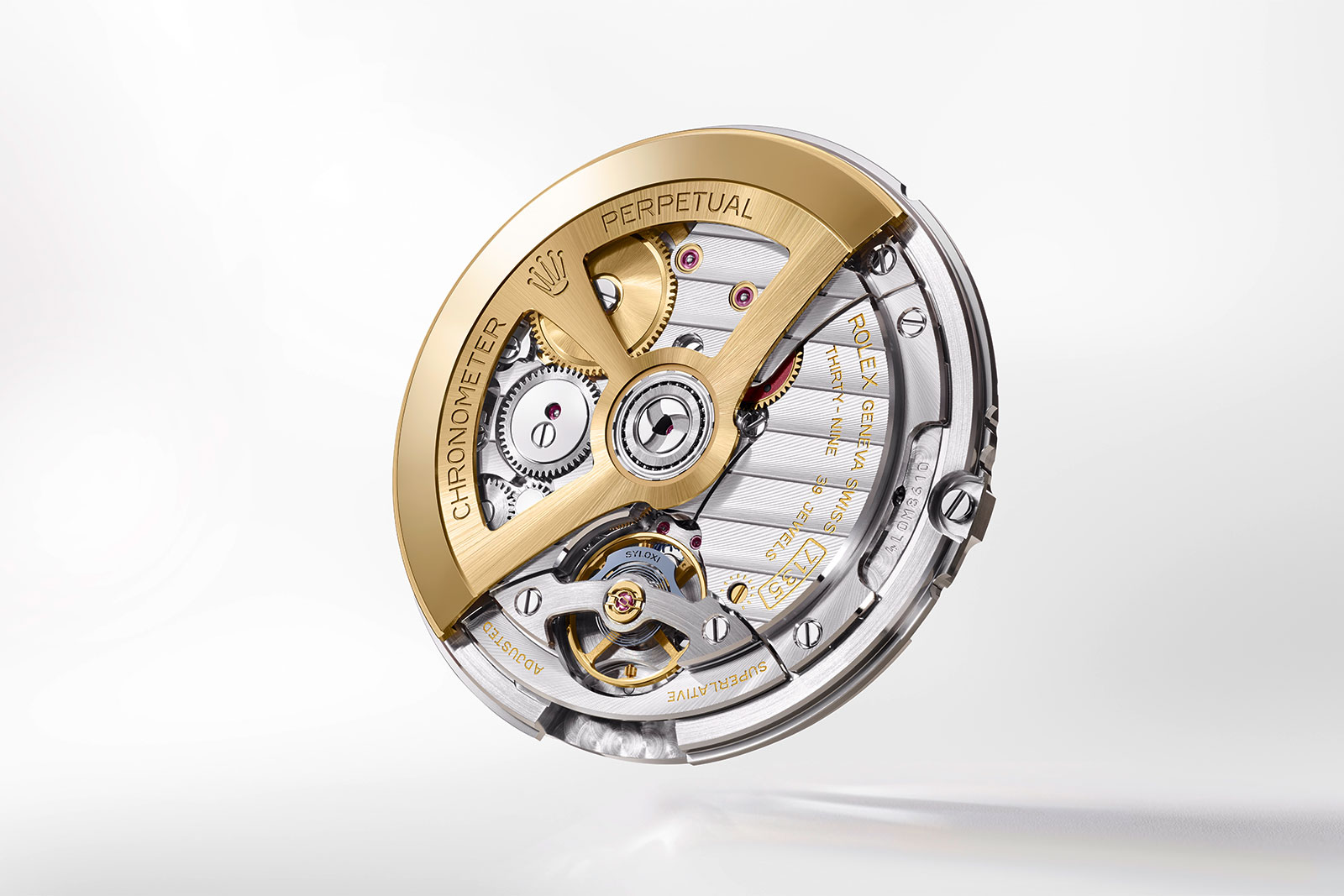
The cal. 7135 appears unassuming but it is game changing. Image – Rolex
Conceived by Abraham-Louis Breguet in 1789, the natural escapement was meant to be a superior alternative to the lever escapement. Best described as a double detent escapement, the natural escapement as invented by Breguet consisted of a pair of mirrored escape wheels, geared directly together, allowing them to alternately provide a direct impulse to the balance.
While it is not explicit why Breguet labeled his invention as “natural”, it is believed that he regarded the double direct impulse as be the most “natural” manner of powering a balance wheel. As a result, a double-wheel escapement must impart direct impulse to the balance in order to be a “natural” escapement. The Rolex Dynapulse decidedly does not, as the twin escape wheels deliver impulse to a lever, and thus indirectly to the balance wheel.

Dynapulse. Image – Rolex
What it is
Dynapulse is, in short, a double-wheel, indirect-tangential impulse escapement. Made up of seemingly organic forms, Dynapulse features two escape wheels geared together via irregular toothing.
The mechanics of Dynapulse are fairly easy to grasp. The going train powers a pair of escape wheels geared together — one escape wheel is powered directly by a silicon fourth wheel of the going train, while the second escape wheel is driven by the first.
Each escape wheel alternatively engages with a dual-function silicon lever, which performs both the impulse and locking functions. While the set up brings to mind past escapements, including the Dual Ulysse escapement found in the Ulysse Nardin Freak, Dynapulse has a crucial advantage: the unlocked escape wheel also provides impulse to the lever – a stroke of genius on the part of the constructors.

The Ulysse Nardin Dual Ulysse escapement, a system that is similar in some ways to Dynapulse. Image- Ulysse Nardin patent
In the Dual Ulysse escapement, one escape wheel locks the lever and the other is positioned to provide impulse after unlocking. But this means that during every oscillation, the driven escape wheel is under no tension from the driving escape wheel as it is set to provide impulse, which leaves the driven escape wheel free to “flutter” due to normal play in meshing of the wheels. This leads to asymmetric impulse values between the two escape wheels.
In Dynapulse, the escape wheel that is locking the lever is also the one that impulses the lever after unlocking. For example, when the driving escape wheel is locked, it also will impulse the lever, while the driven escape wheel remains entirely inactive. The lever then locks the driven escape wheel, which is instantly tensioned by its driving counterpart.

The Dynapulse escapement. Image – Rolex
This means that when the escapement unlocks again, the driven escape wheel is pretensioned, so its impulse value is identical as if coming from the driving escape wheel. This is an elegant solution to the problem of “flutter”, or play between teeth, which had plagued watchmakers working on double wheel escapements since Breguet’s “natural” invention.
Rolex notes Dynapulse is about 30% more efficient overall than a Swiss lever escapement, which is an impressively high efficiency gain. Preliminary observations look to support the affirmation, since the escapement is small and the silicon components are hollowed out, suggesting few inertial losses. The appeal of tangential impulse is the minimal energy that is dissipated, which is thanks to the virtual absence of sliding friction.
Notably, Rolex also discloses an oiling process specific to Dynapulse. The escapement is first assembled, lubricated, and tested as a sub-assembly on its own before being installed into a complete movement. Rolex also adds that lubricant application is measurable in nanoliters.
This is interesting, since most brands that employ novel escapements often claim such alternative escapement run “dry” (which is almost never the case). Crucially, however, according to Olivier Greim, head of research and development at Rolex, Dynapulse can theoretically function without lubrication.
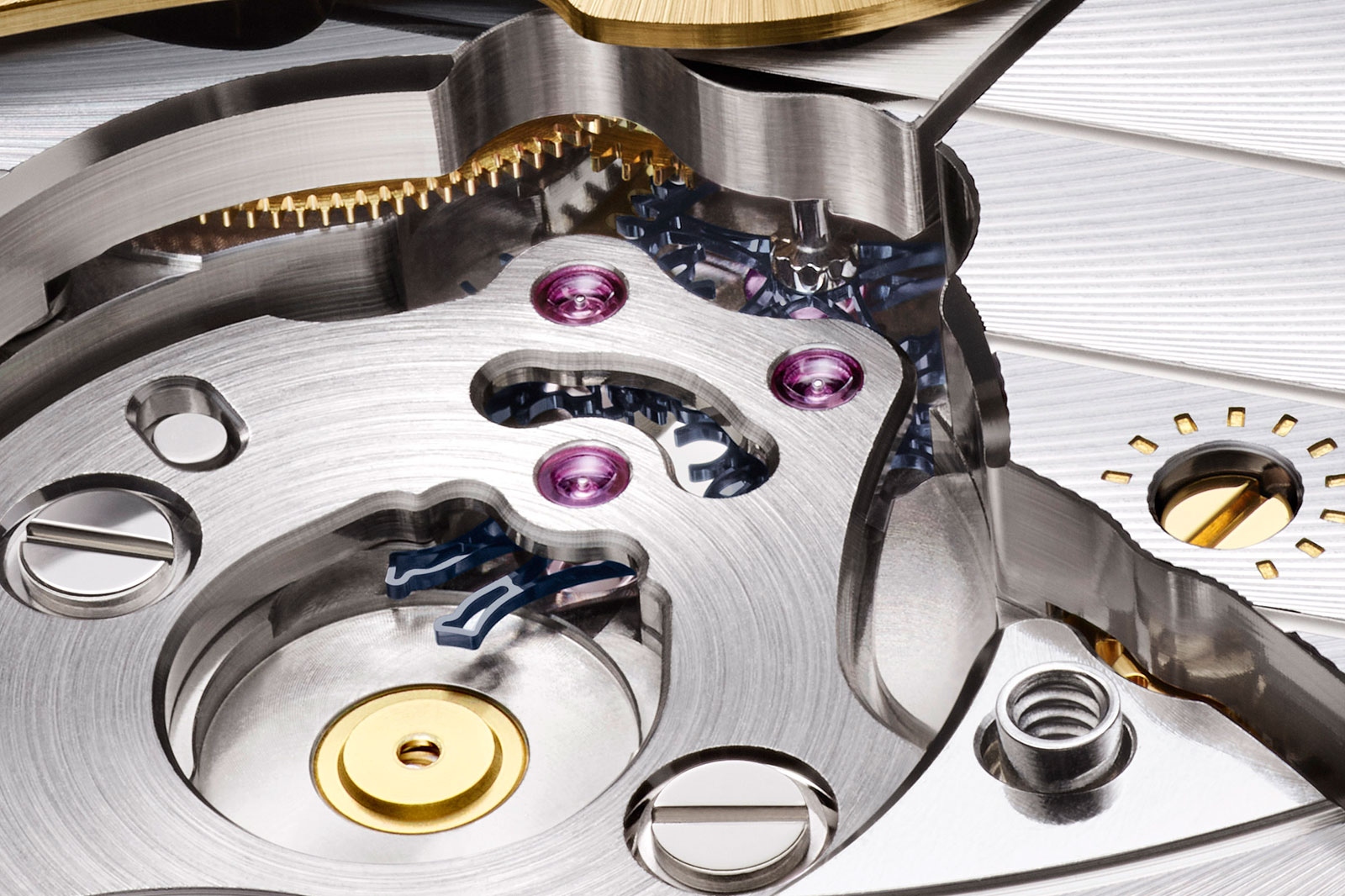
The escapement with the balance assembly removed. Image – Rolex
Equally notable is the scale of Dynapulse. The new escapement occupies essentially the same volume as Chronergy, the Swiss lever escapement that is now found across Rolex’s range of movements. This leaves open the possibility that Dynapulse can be fitted to other latest-generation Rolex movements, which would be logical given its functional superiority.
Efficiency and other advantages
An escapement similar to Dynapulse was the subject of a pending patent filed by Rolex in the second half of 2024 (European patent EP4492153A1). The patent describes two possible embodiments of the invention, although the Dynapulse is not identical to either.
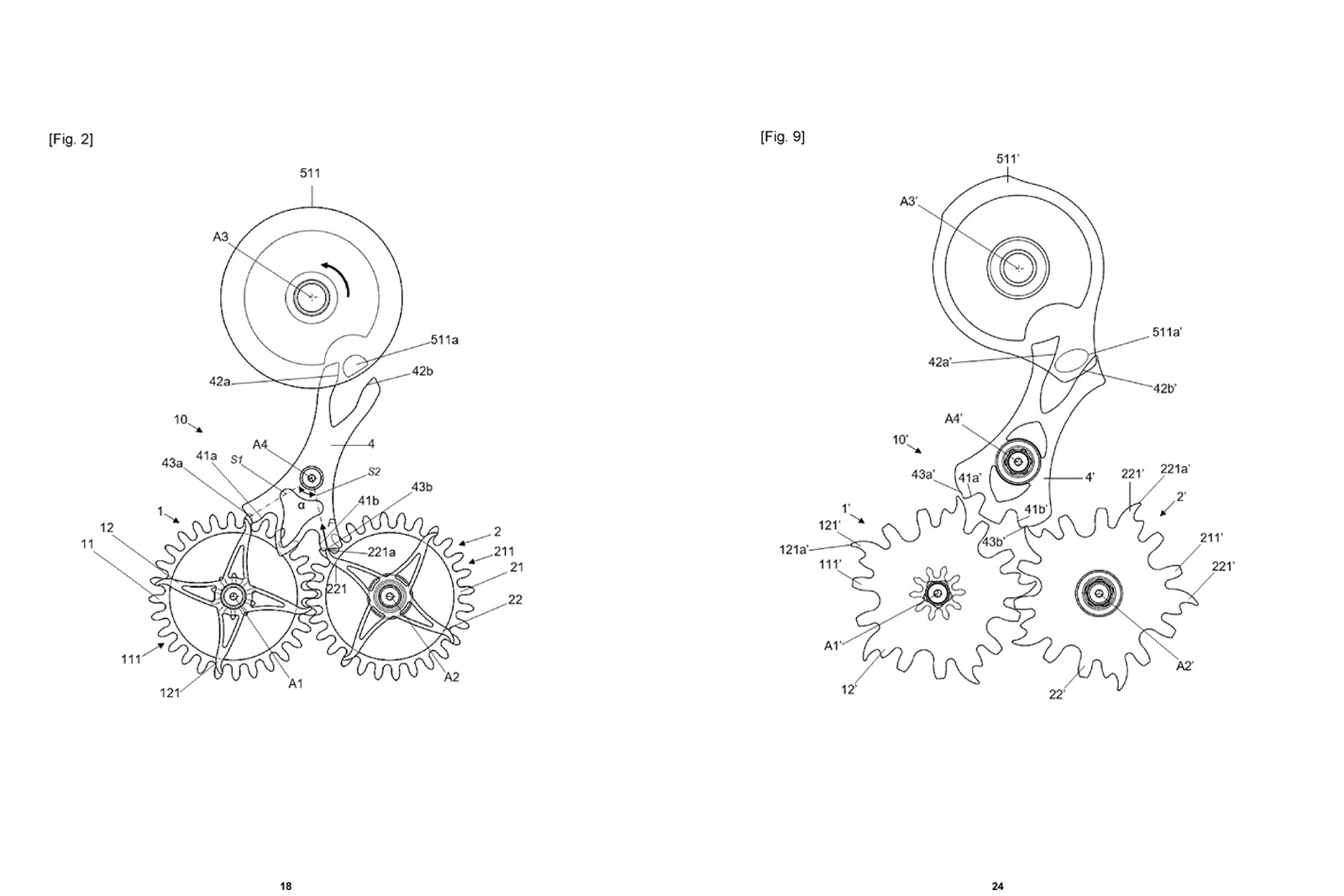
Two variants of the Dynapulse concept with the version on the right being similar to Dynapulse. Image – Rolex patent
Dynapulse is made up of two escape wheels, each offset by 30° and during one full oscillation (meaning two vibrations or two unlockings of the escapement) each wheel travels by 60°.
Considering the 5 Hz rate of the regulator, it means that the silicon escape wheels each make 50 rotations per minute, or 5/6 of a revolution per second. This angular velocity is extremely high, considering that a 5 Hz Zenith El Primero escapement runs at only 15 turns per minute.
This high velocity implies resistance to magnetic fields is important, which might explain why the intermediate wheel powering the escape wheels is crafted from silicon as well.

An escape wheel of Dynapulse. Image – Rolex
Equally impressive is the form of the escape wheels. Each has six active hook-shaped teeth that engage selectively with a double-function lever. Intertwined with the teeth are six C-shaped notches, each being meant to engage with a tooth on the adjoining escape wheel. In other words, the Dynapulse escape wheels incorporate two types of teeth.
Developing the geometry employed in the escape wheels requires substantial mathematics and a solid understanding of rolling surface physics, along with cycloid and involute curve theory. The result is a reliable pair of unique gears, with optimised surface-to-surface interaction and presumably reduced play between the two escape wheels.
The particular form of each escape wheel incorporates subtle reinterpretations of traditional gear geometry, with the C-shaped segments serving as the “valley” between two standardised teeth, without being directly defined by the teeth’s flanks. This ensures the tightness of engagement even with undersized tooth profiles.

Image – Rolex
There is a slight recoil when the balance unlocks the escapement, as the escape wheel tooth is forced out of the locking notch. The recoil looks to be less than the similar effect caused by draw in classic Swiss lever escapements.
It can be inferred that the geometric efficiency of Dynapulse is elevated. Only dependent on the geometrical constraints of the escapement, the geometric efficiency describes how much of the escape wheel’s travel between two unlocking motions is actually useful in impulsing the balance. Dynapulse escape wheels appear to be in contact with the lever for most of their travel when unlocked, actively imparting impulse to the balance.

The meshing of the escape wheels. Image – Rolex
A subtle safety
Intriguingly, Dynapulse omits the conventional dart and roller safety system, which seems surprisingly initially. All escapements on the market feature some sort of a safety implement that prevents accidental unlocking of the escapement. Such systems are universally found in Swiss lever escapements, as well as the Omega Co-axial escapement and the Ulysse Nardin Dual Ulysse.
Dynapulse, however, purposefully omits this. Intriguingly, it appears the security device is integrated into the locking surfaces of the escapement parts. When one escape wheel locks the lever, its tip is lodged into a subtle V-shaped notch sculpted into the lever. This assures the two components are locked in a stable equilibrium position.
Moreover, the tangential force exerted by the escape wheel on the lever is consistently directed towards its pivot — thus ensuring the tooth tip is securely lodged in the V-shaped notch.
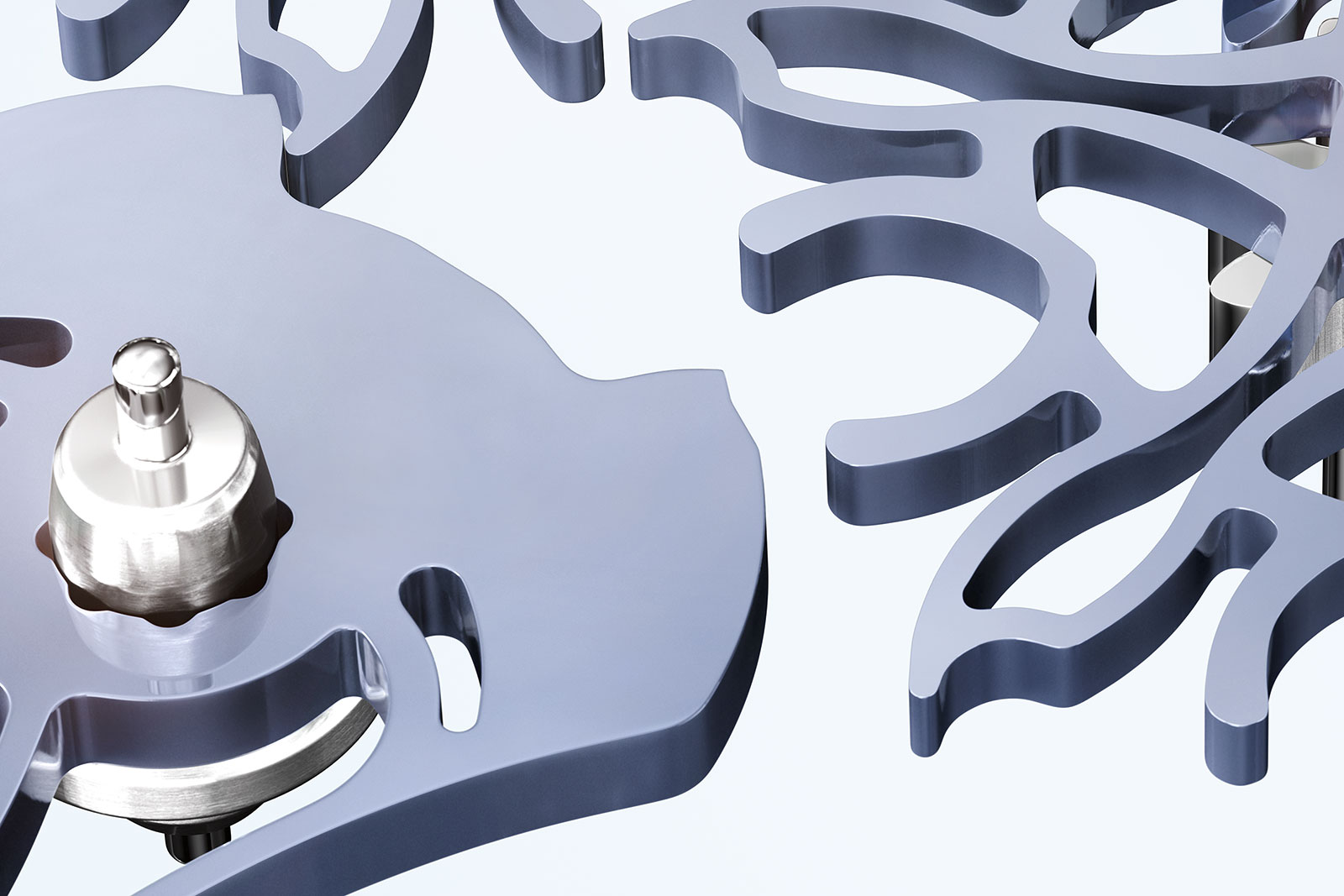
A closeup of the escape wheel and lever interaction. Image – Rolex
A surprising oscillator in ceramic and Ecobrass
While silicon hairsprings are not new to Rolex, the oscillating organ in the cal. 7135 is the brand’s most forward-thinking balance. Although it resembles the silicon hairsprings found in other Rolex movements, the balance and hairspring assembly in the cal. 7135 has been completely rethought, especially in terms of materials used.
The Syloxi hairspring looks familiar and is indeed similar to the one found in the cal. 7140. It has the same two-point anchoring system but was adapted for the 5 Hz frequency of the cal. 7135, meaning its stiffness constant was increased through more rigid coils.
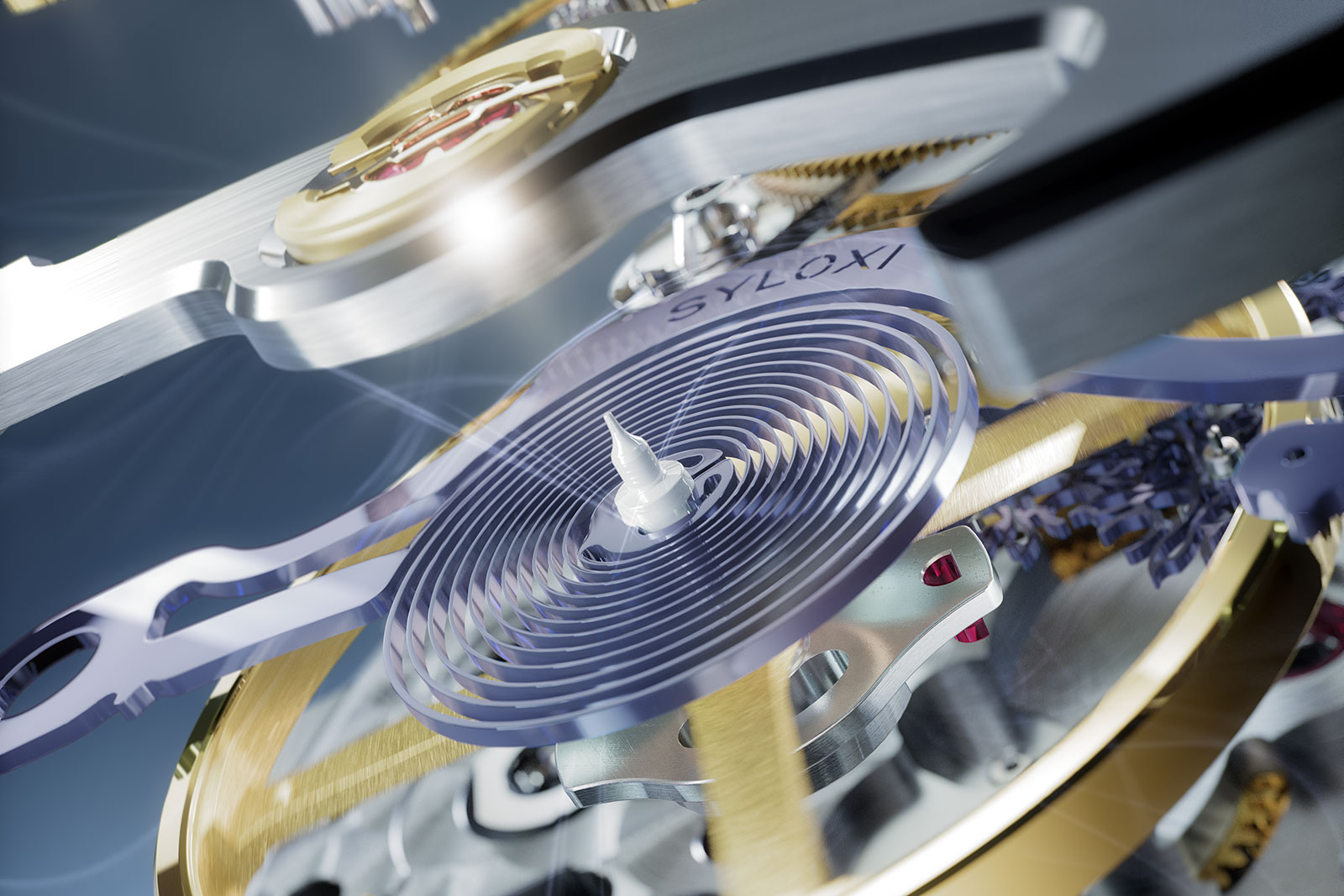
The ceramic balance staff. Image – Rolex
The free-sprung balance itself is made of “optimised brass”. Traditional balance wheels are made of Glucydur, a specialised alloy of beryllium, copper and iron. Another Rolex pending patent (European patent EP4399575A1) suggests that the alloy employed for the balance of cal. 7135 might be CuZn21Si3P, a lead-free “Ecobrass”.
Moving away from traditional materials is something Rolex has been progressively doing as it seeks superior alternatives to traditional alloys. Most notable is Rolex’s investment in making the proprietary blue Parachrom hairsprings.
The patent argues that this alloy has great paramagnetic qualities, making it suitable for the balance wheel of a mechanical watch. Moreover, the density of the alloy is optimal for a good inertia value for the balance shape.
Rolex engineers approached the issue of magnetism resistance by considering the electrical resistance of different alloys and their behaviour to eddy currents induced by powerful magnetic fields.
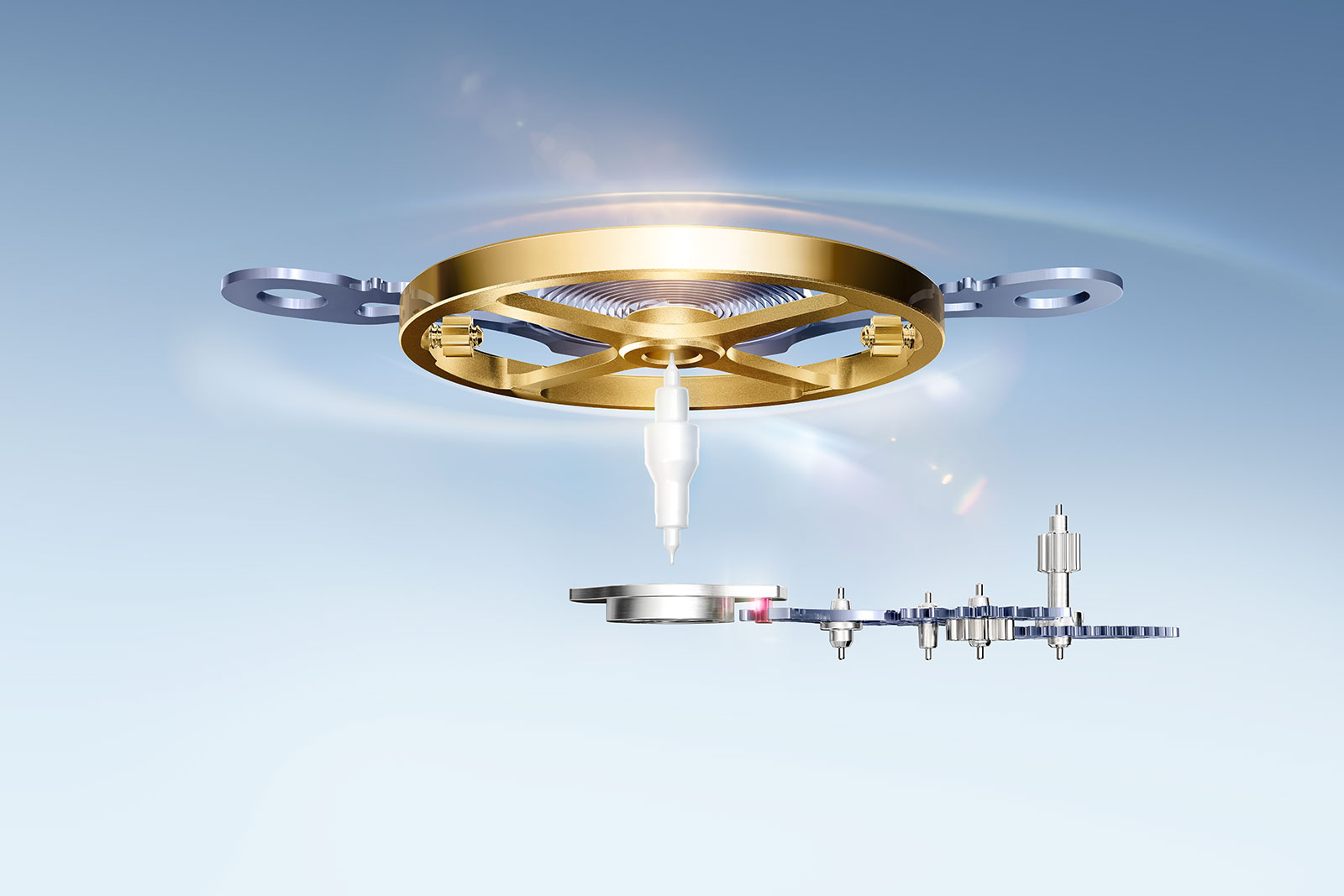
The ceramic composite balance staff, with the two terminal pivots. Image – Rolex
The balance pivot in the cal. 7135 is also unusual, being made of a composite ceramic material. Examining other Rolex patents suggests that the composite is a matrix of industrial ceramic, namely an improved formulation of zirconia that boasts increased strength.
Incidentally, the ceramic pivot in the cal. 7135 is not the first instance that the Rolex group has employed the material for a balance staff, but this particular formulation of ceramic is unique to the cal. 7135.
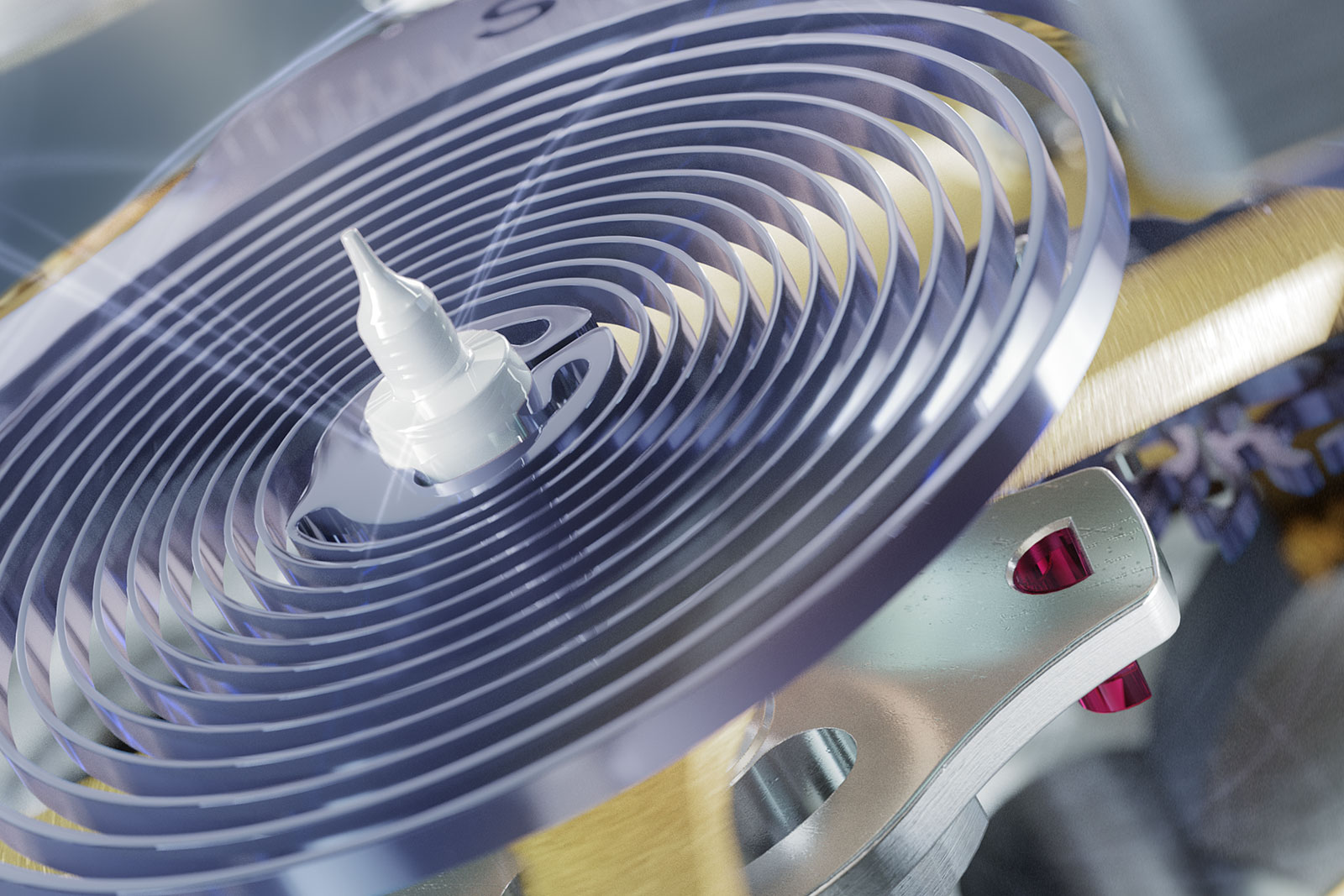
The laser-polished pivot. Image – Rolex
Not only is the composite pivot inherently paramagnetic, but it is also adept at being produced with extremely fine tolerances. The ceramic pivots of the cal. 7135 are perfectly sculpted with a femtolaser, essentially a highly precise laser similar to that used for eye surgery.
The ends of the pivot are then polished to a mirrored finish with another laser. The polishing is not done for aesthetic purposes but to create a smooth surface pivoting inside the jewel to reduce friction as much as possible. As with the escapement, the ceramic pivots are lubricated, though Mr Greim says that due to their nature, ceramic pivots can theoretically function without any lubrication.
Conclusion
The innovations in the cal. 7135 are arguably a declaration that mechanical innovation is very much alive, that Rolex is going far beyond incremental innovation. Because the cal. 7135 is produced by Rolex, two things are a certainty: the movement will be of impeccable functional quality and it will be produced at scale. Because of the quality and scale, the cal. 7135 might just change the landscape of watchmaking.
Back to top.











